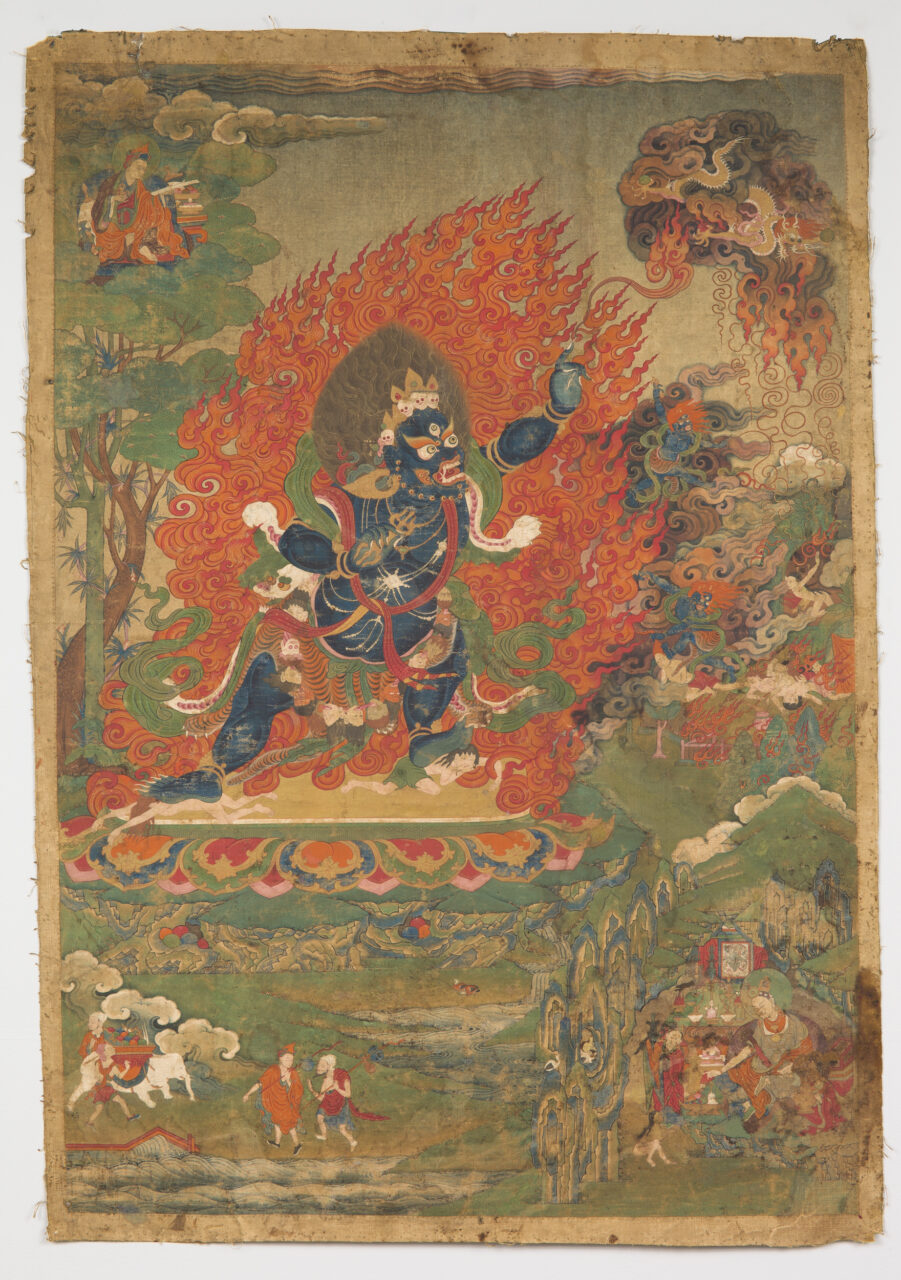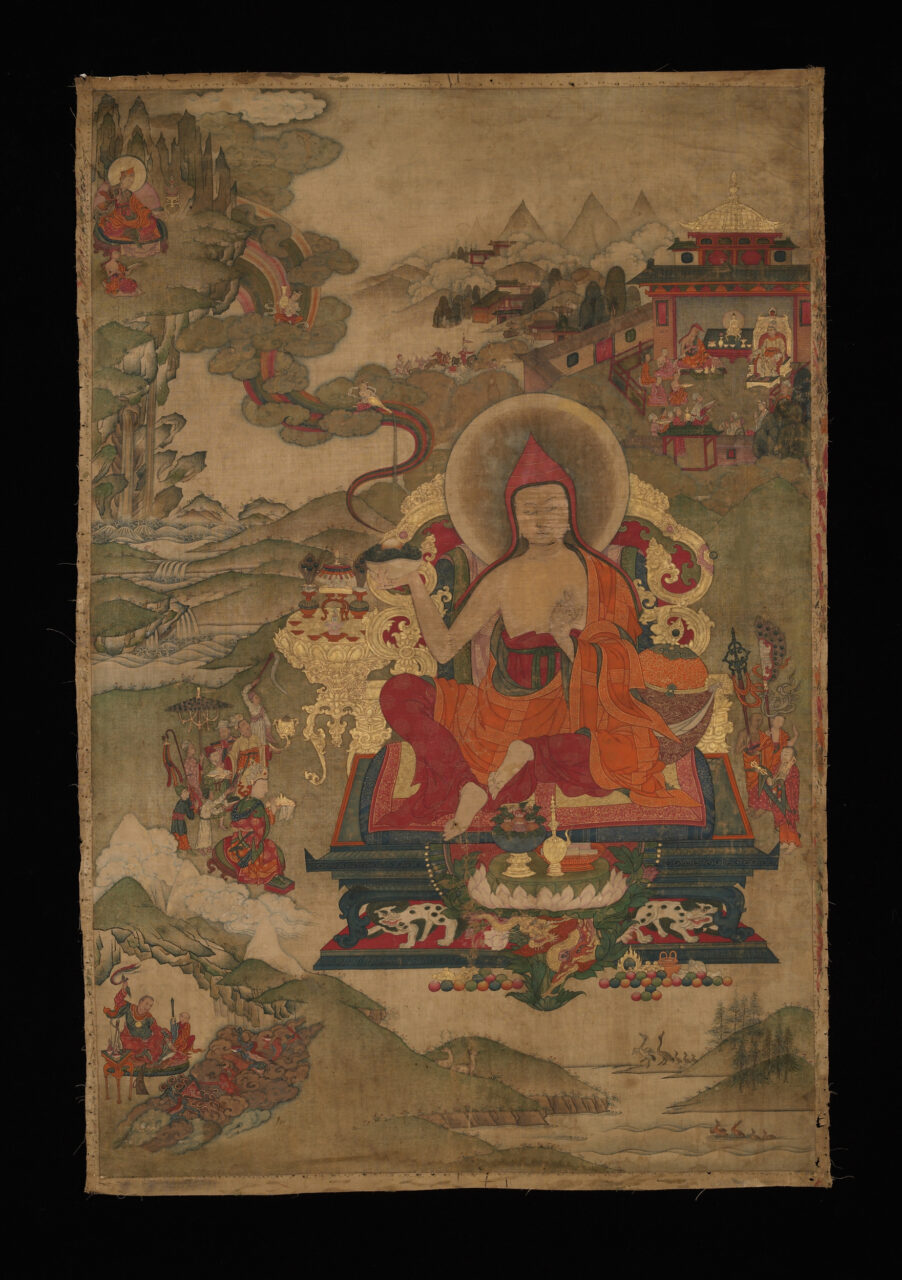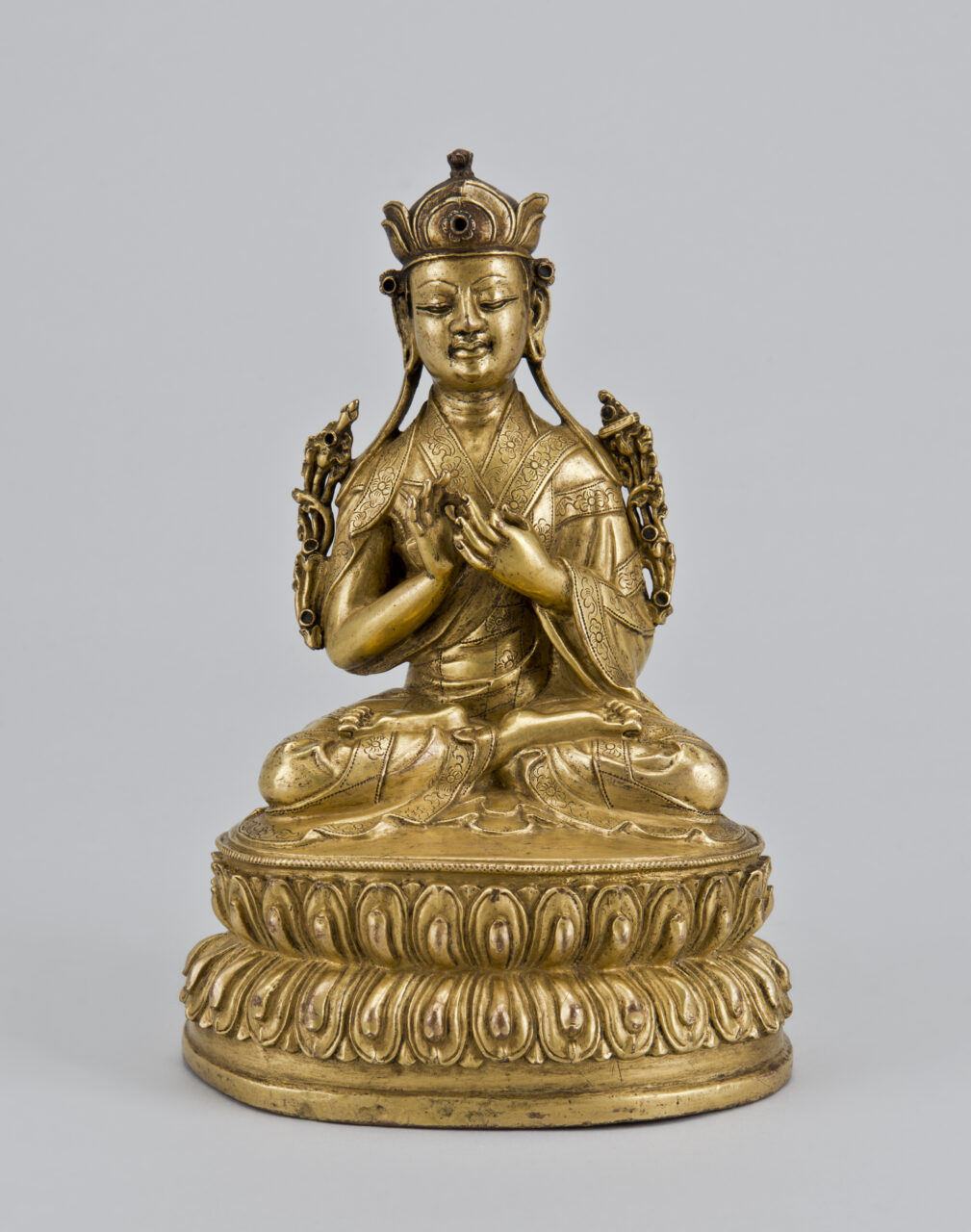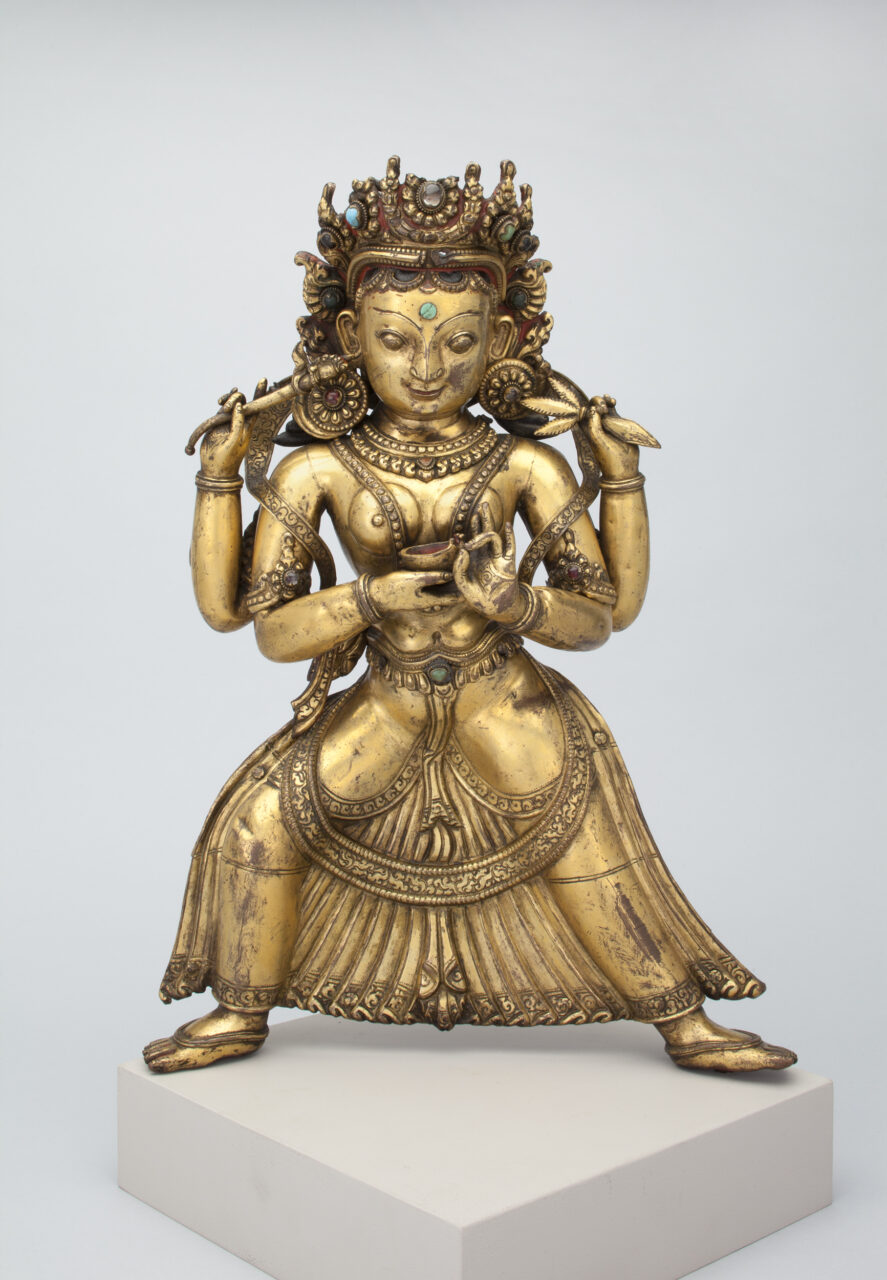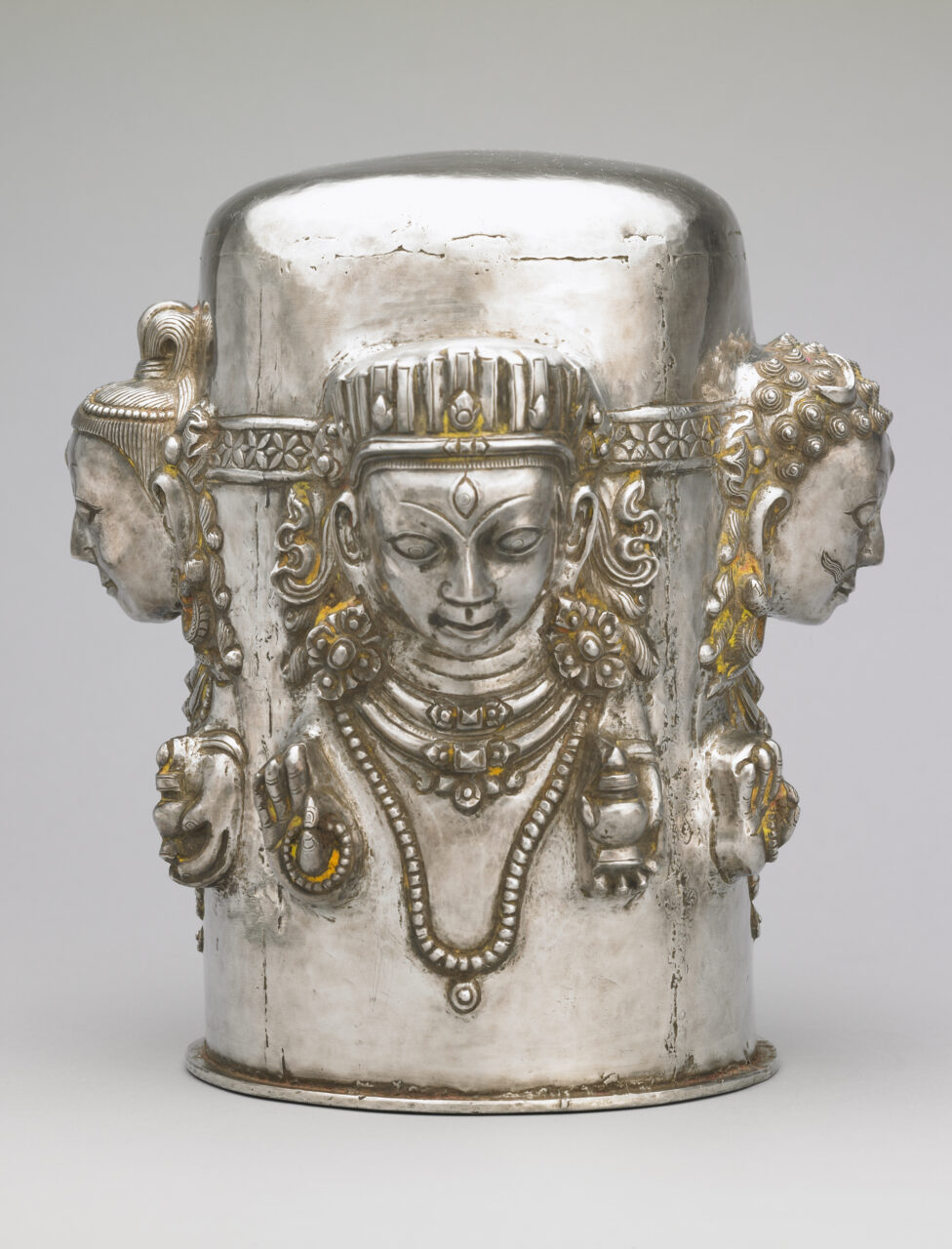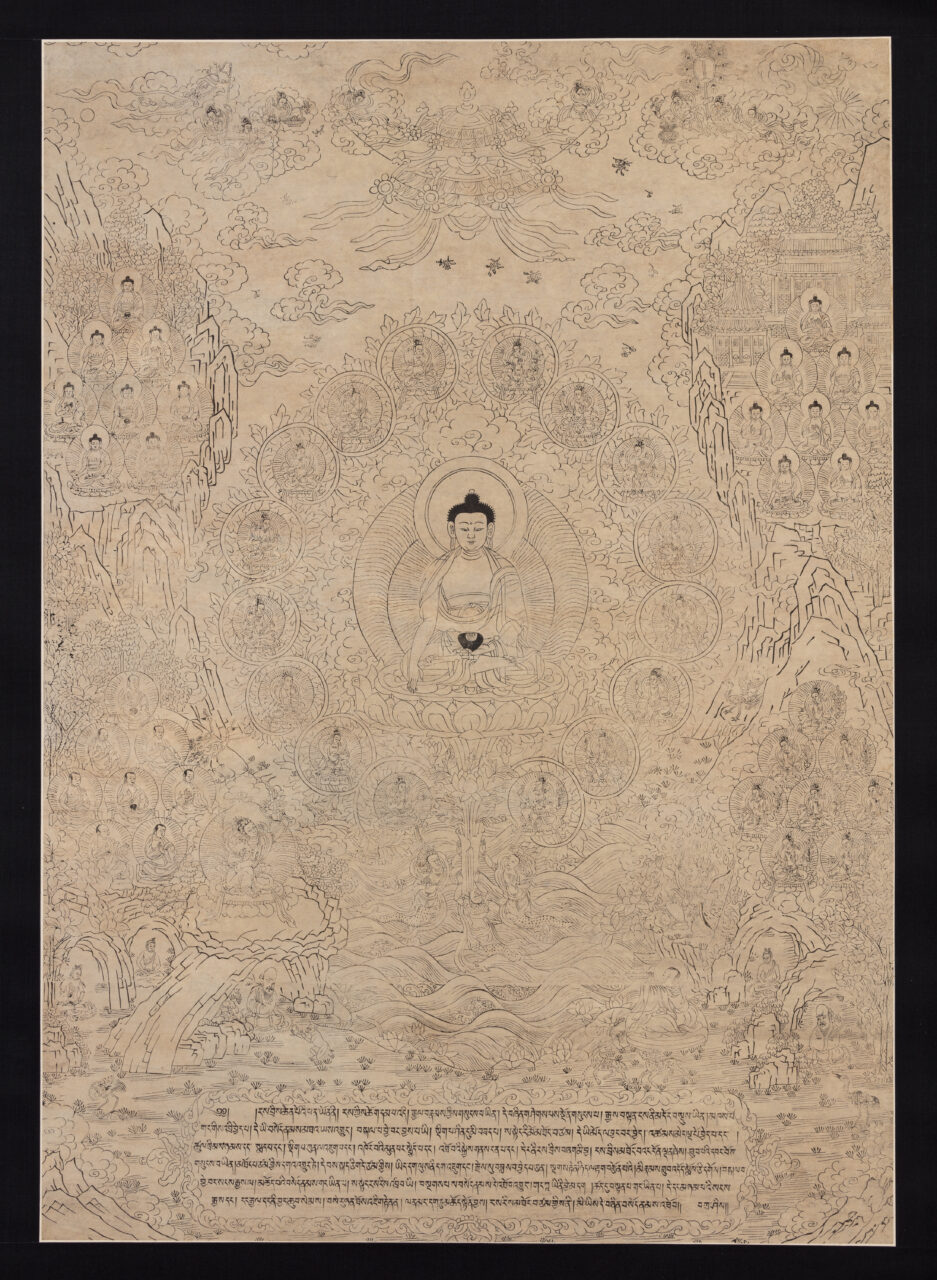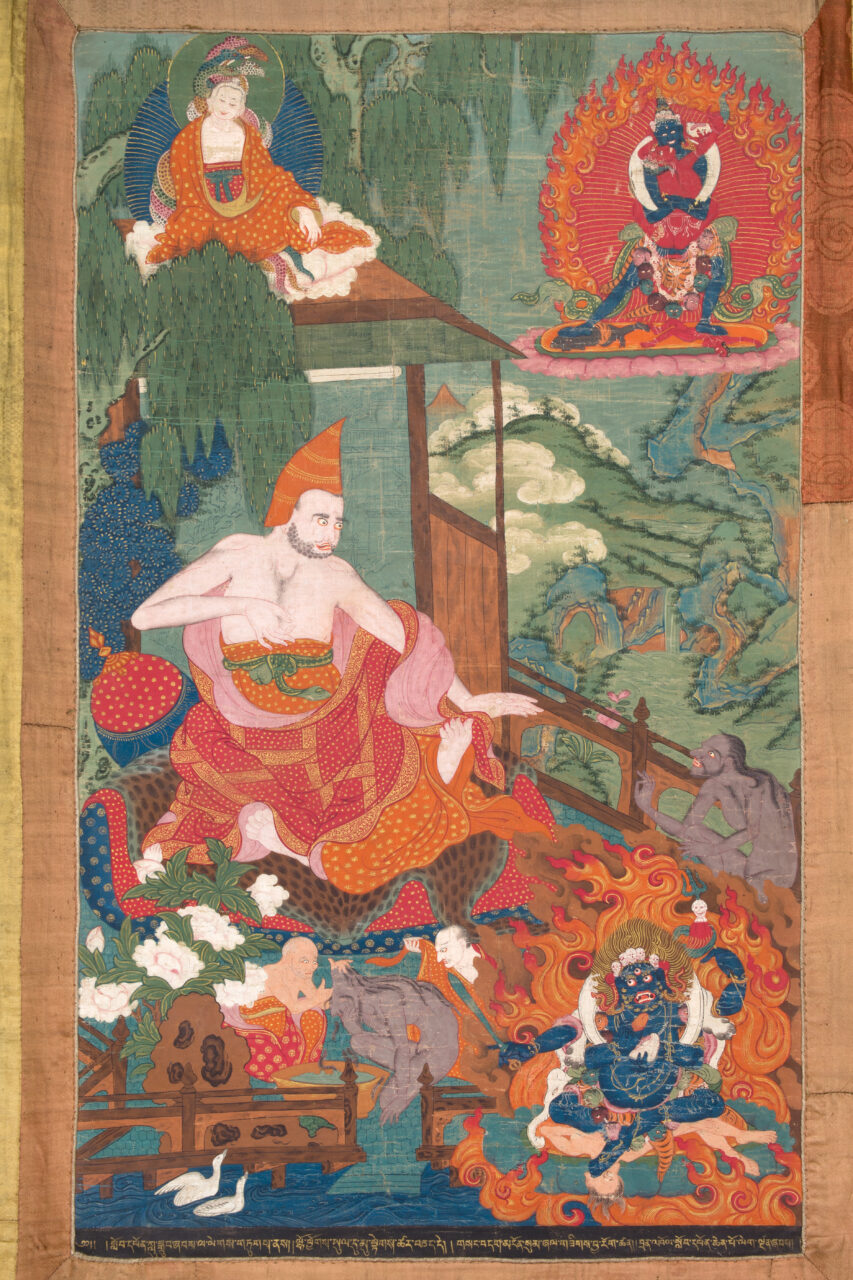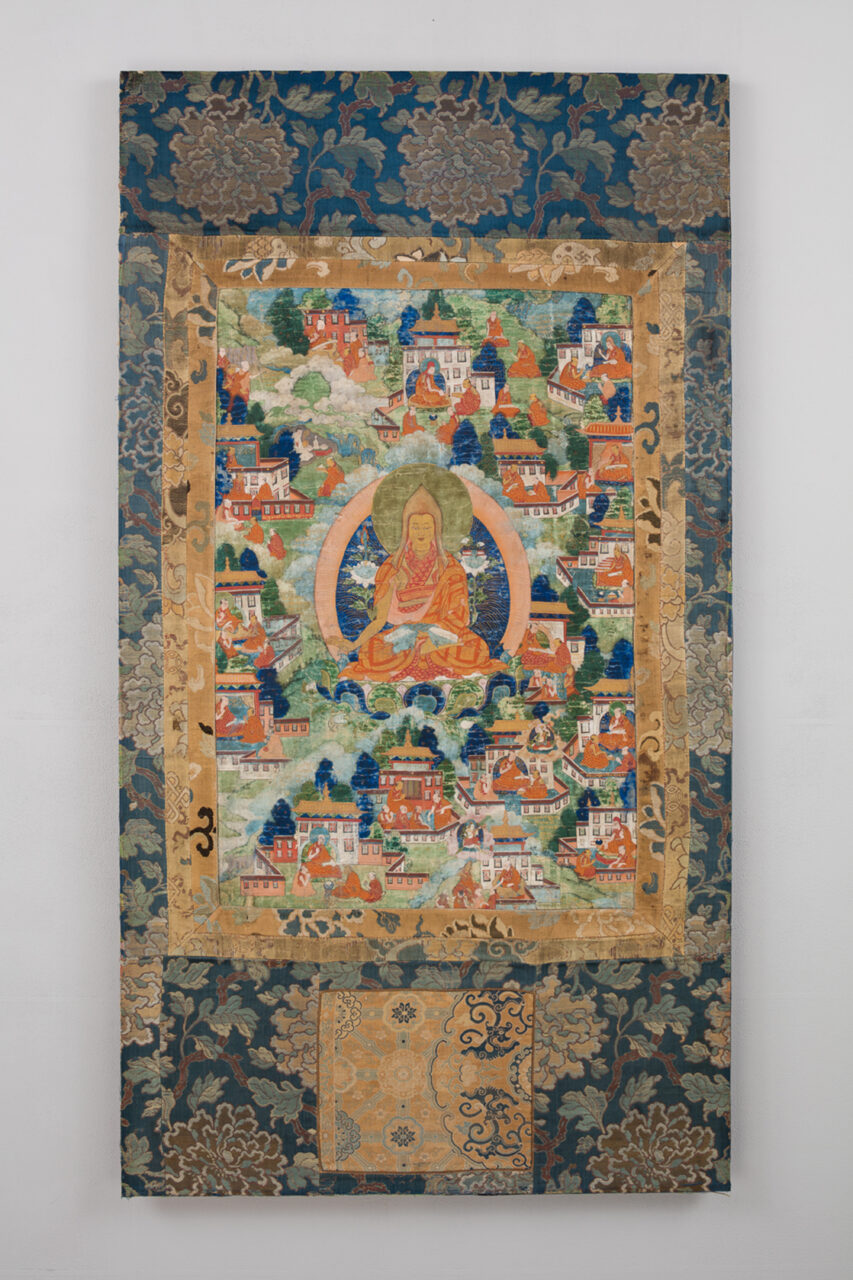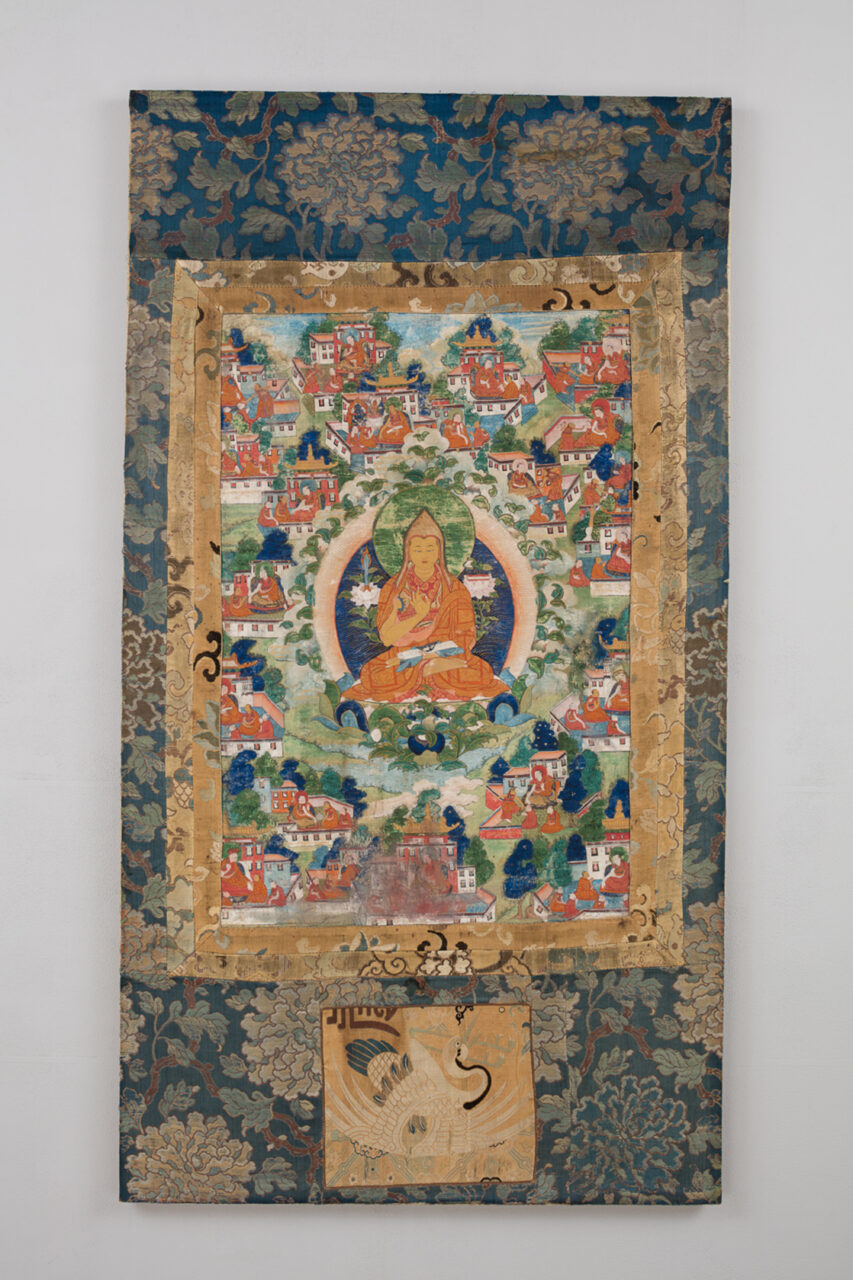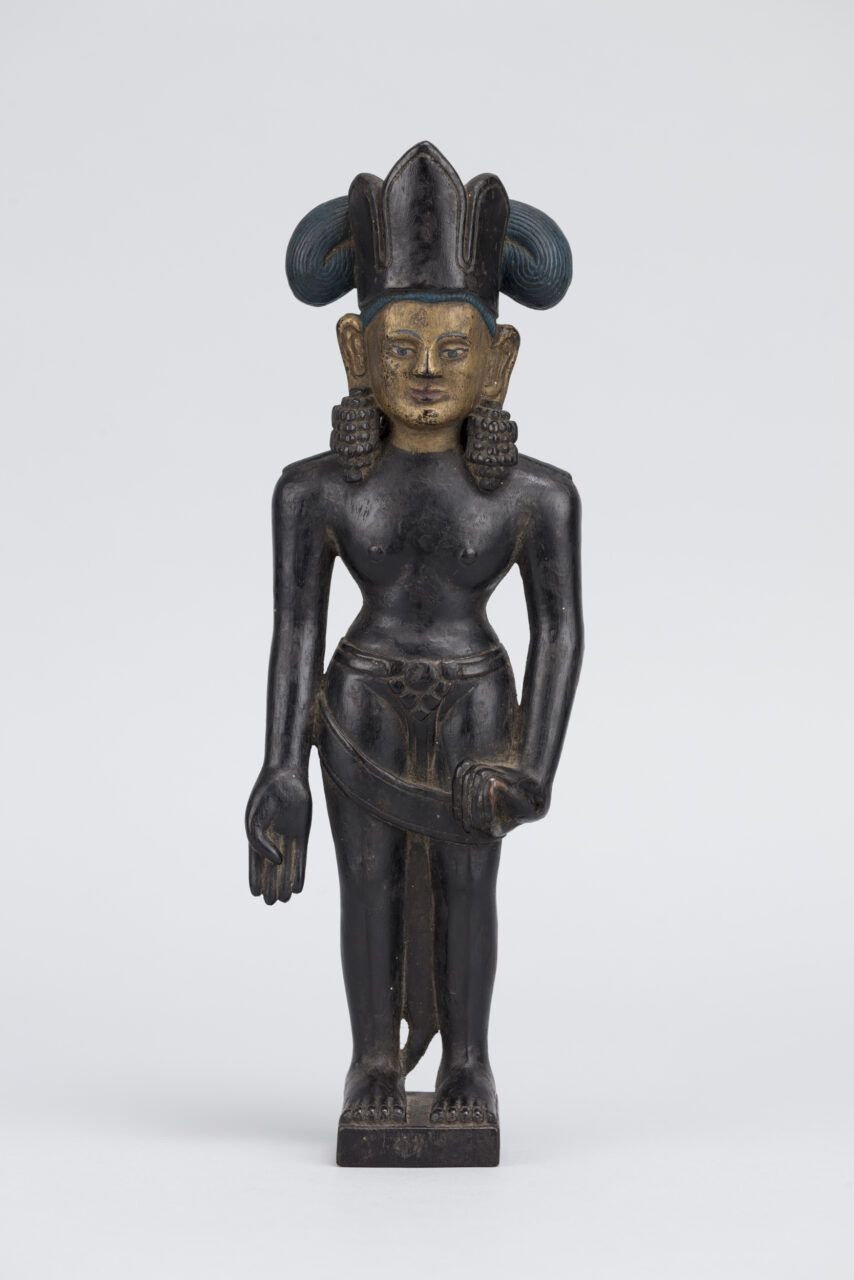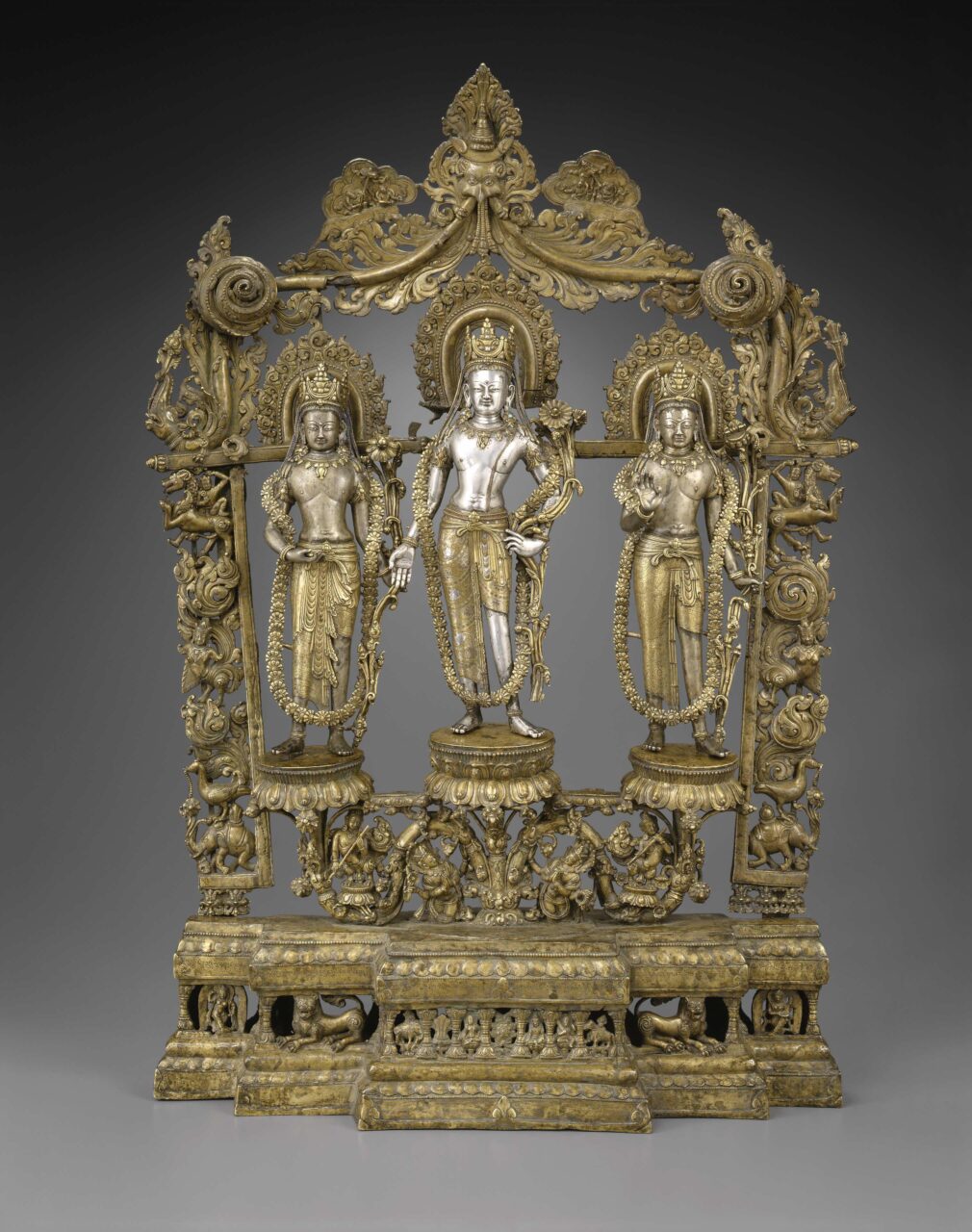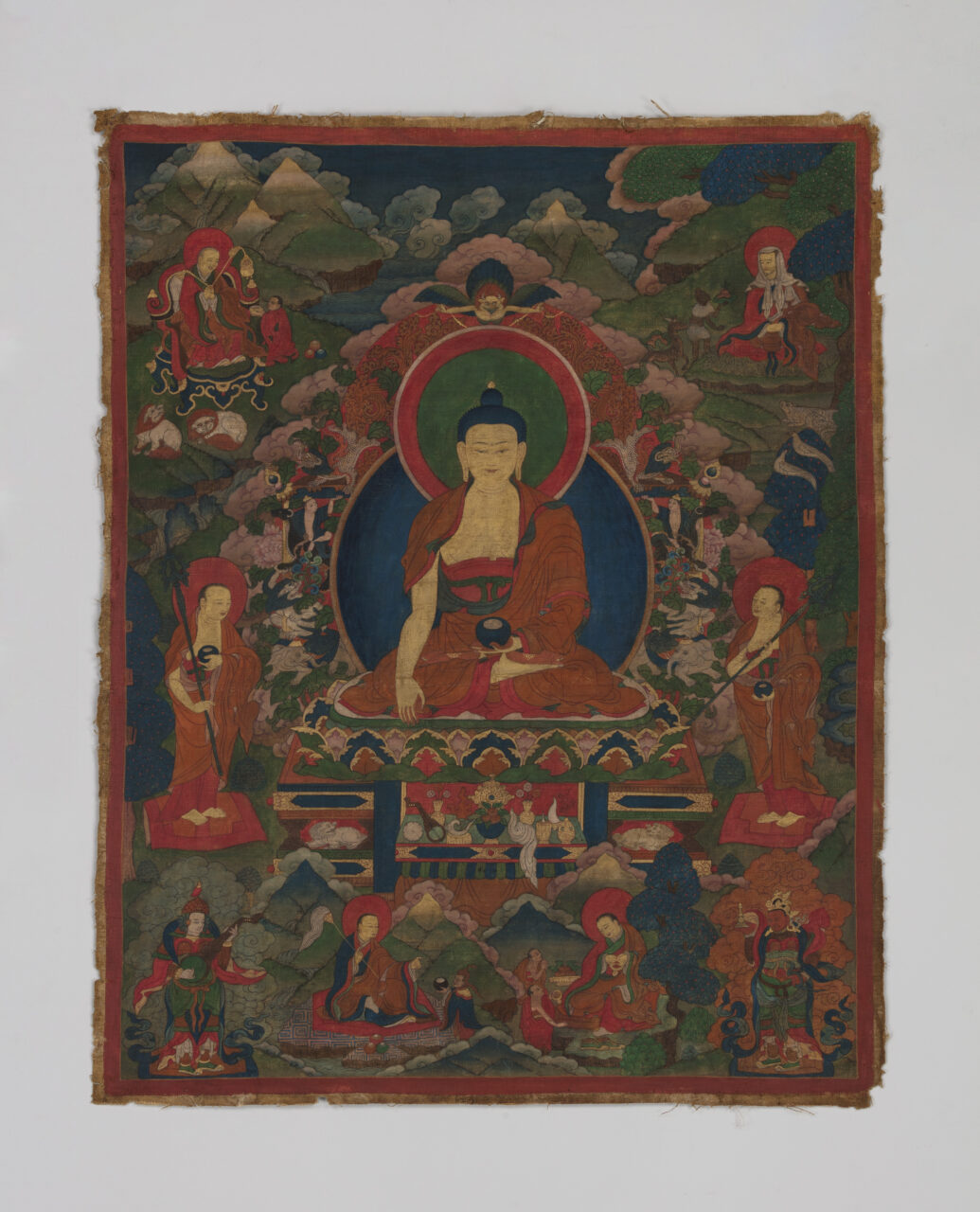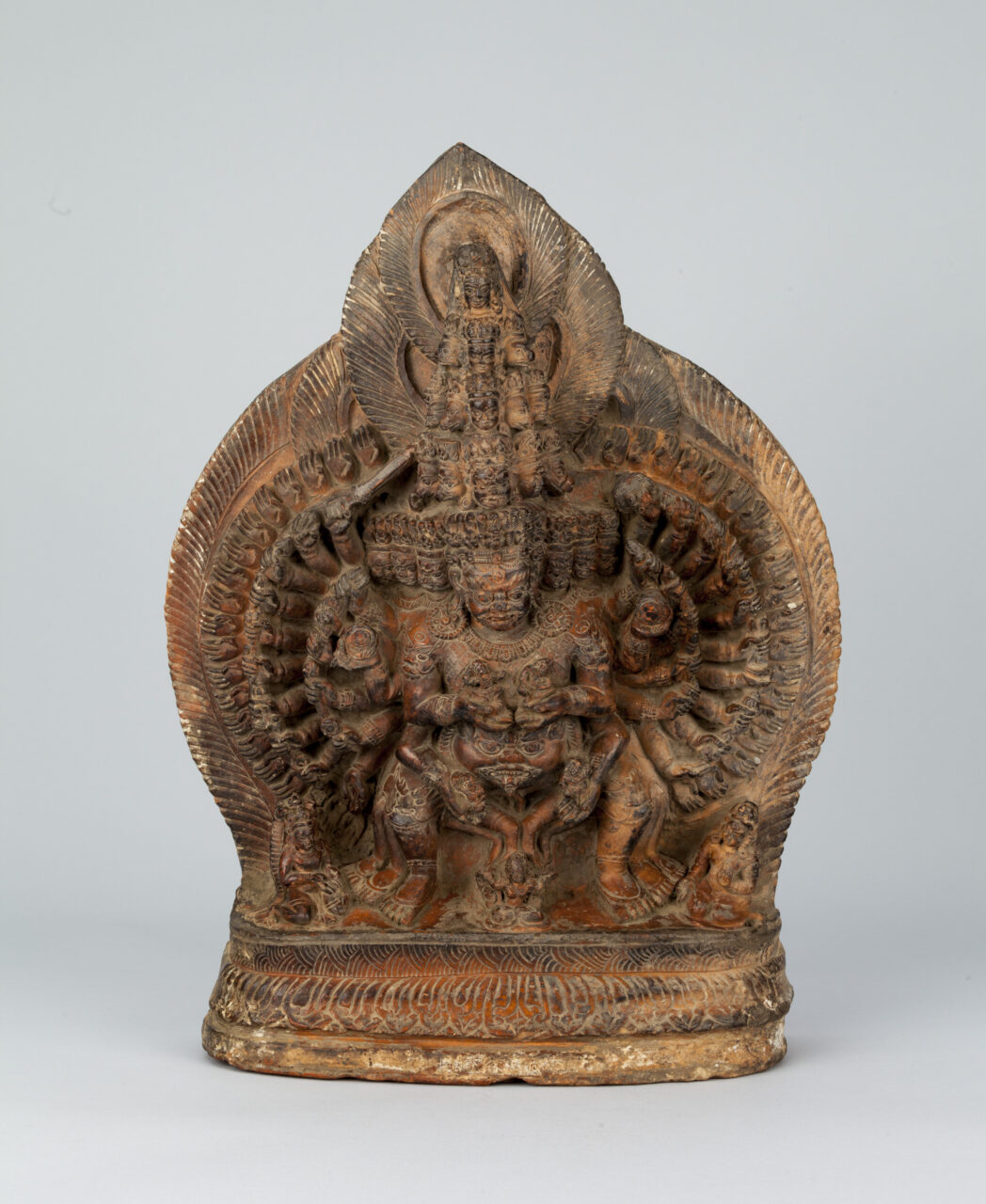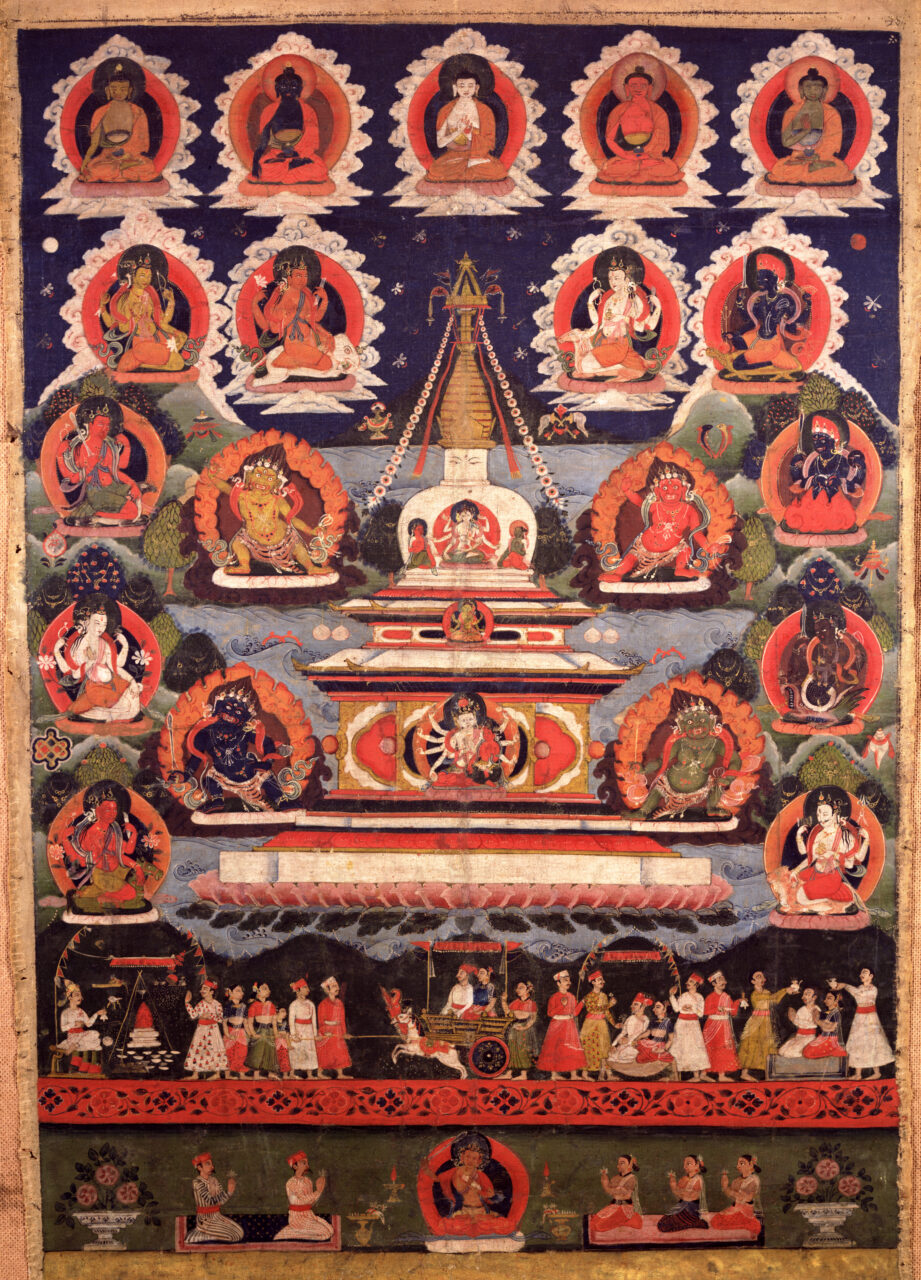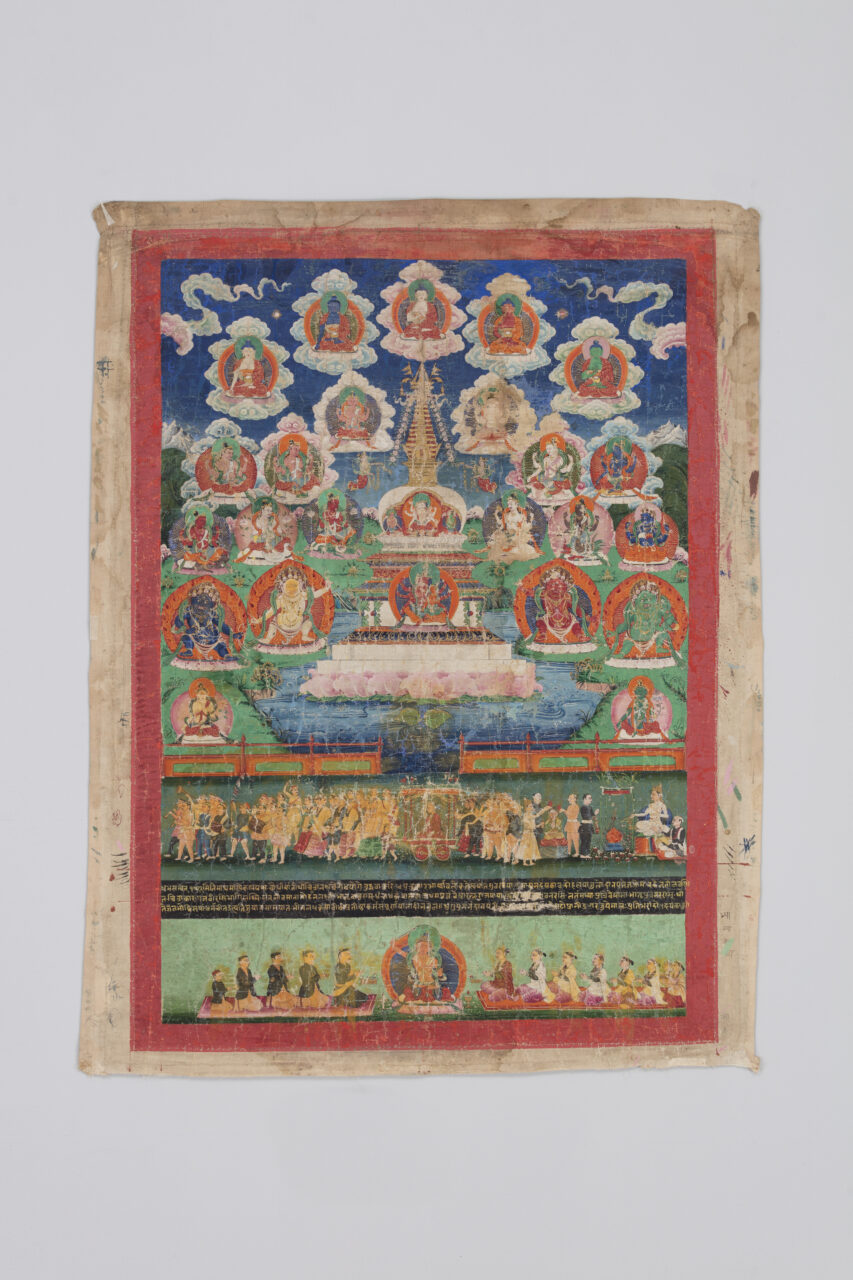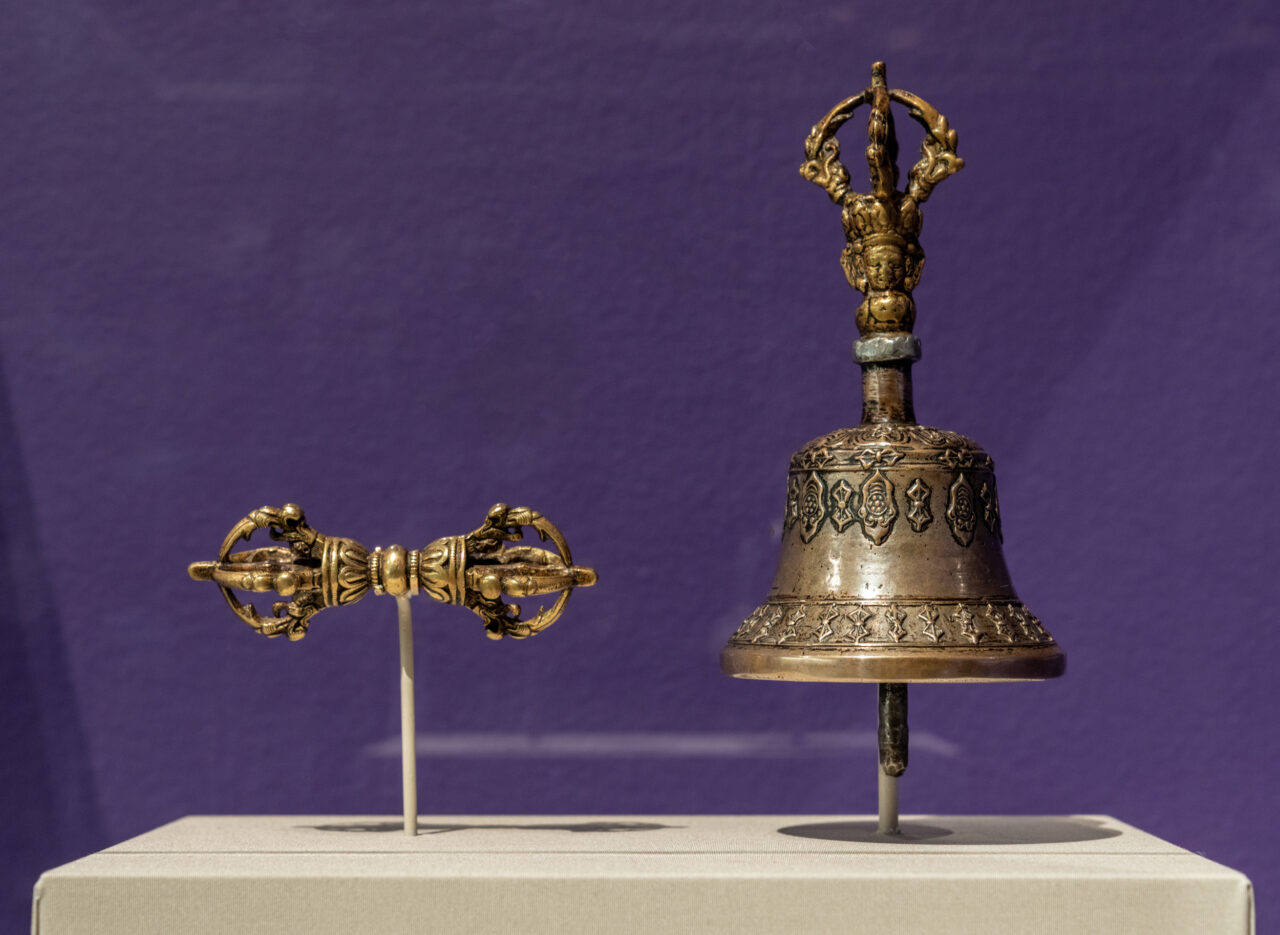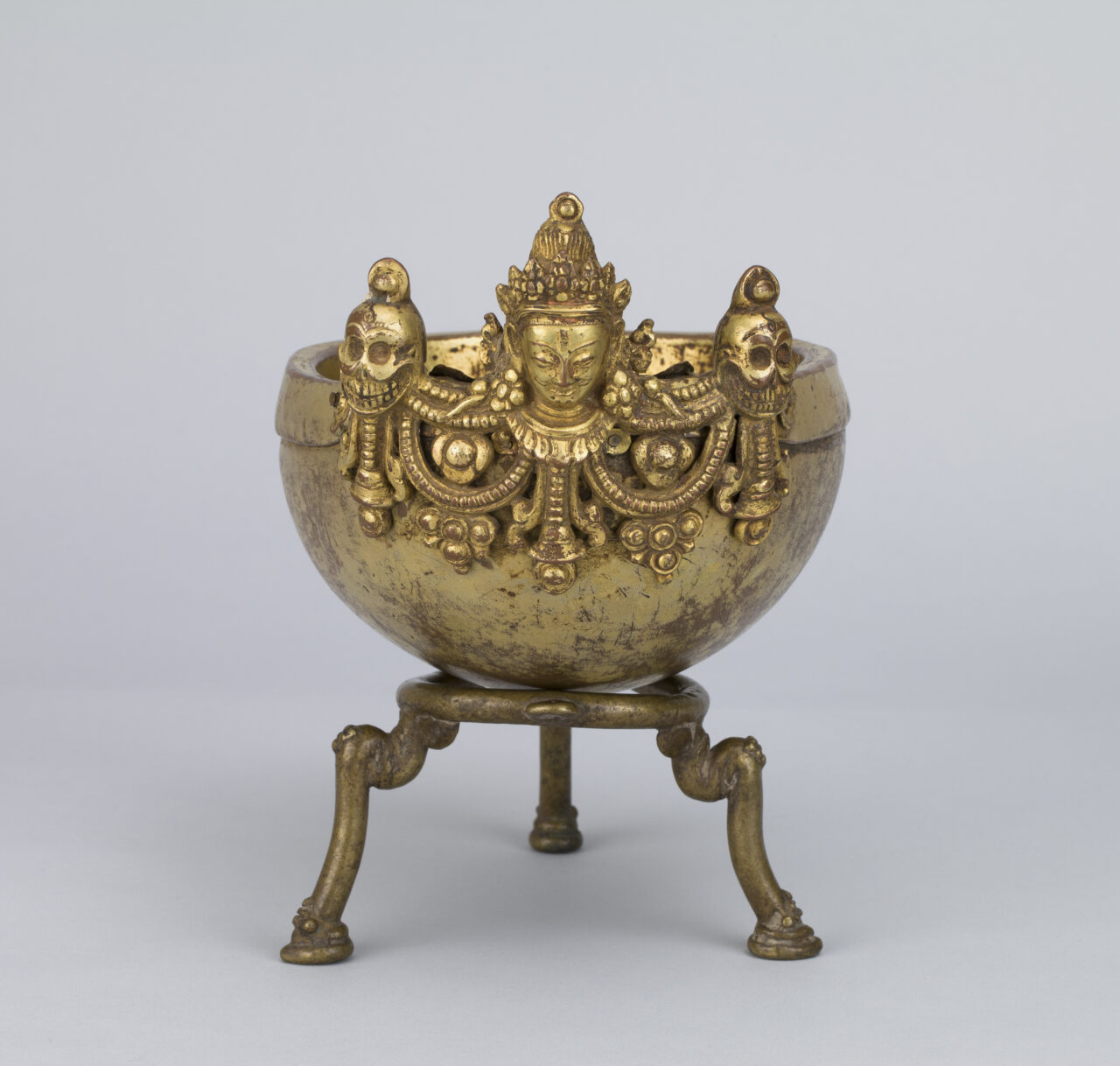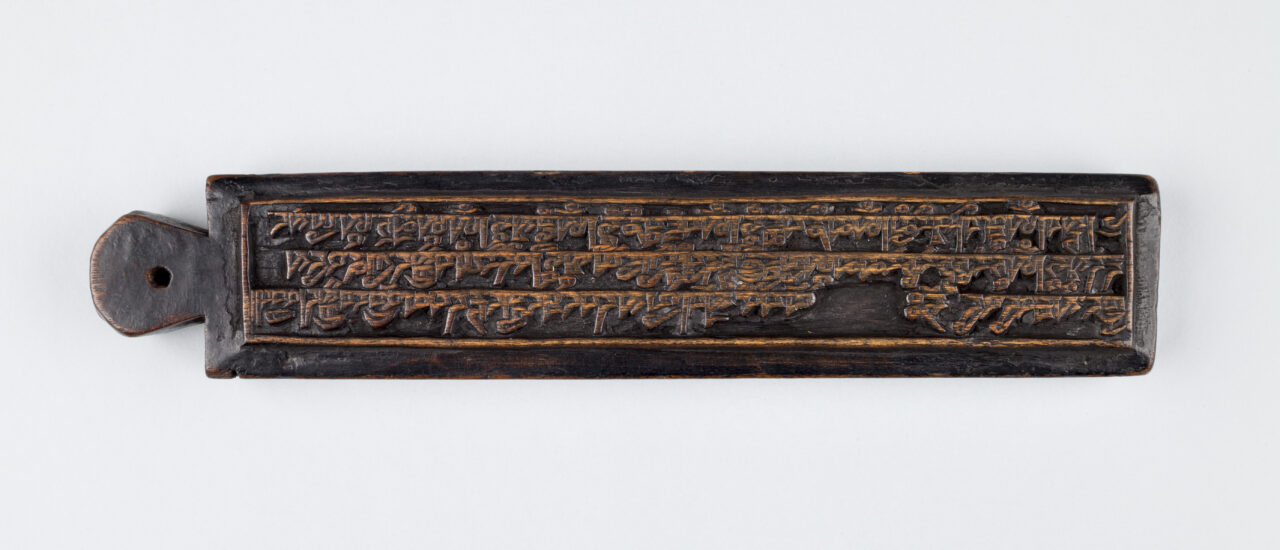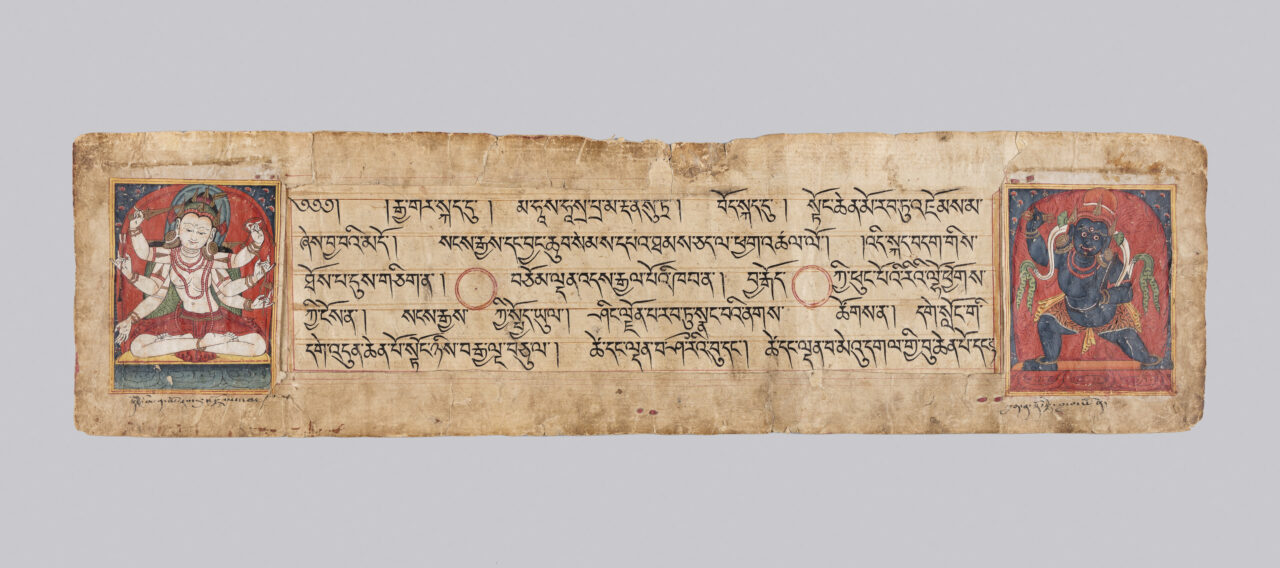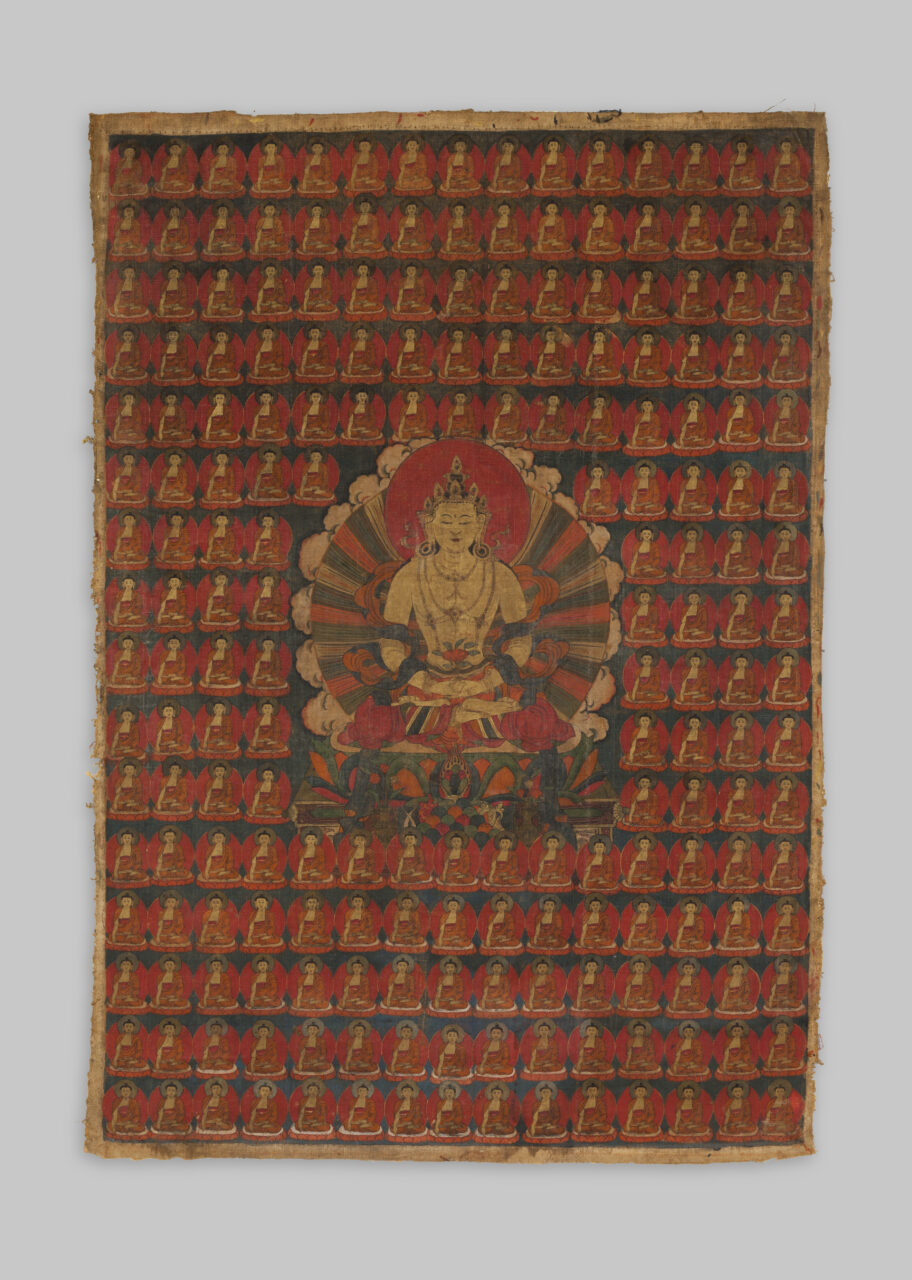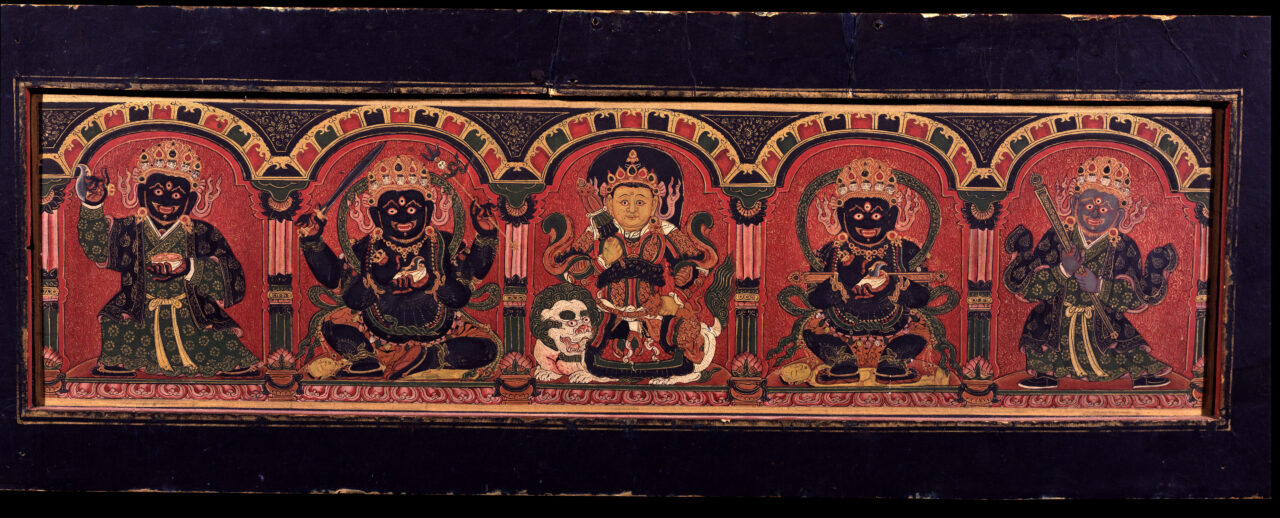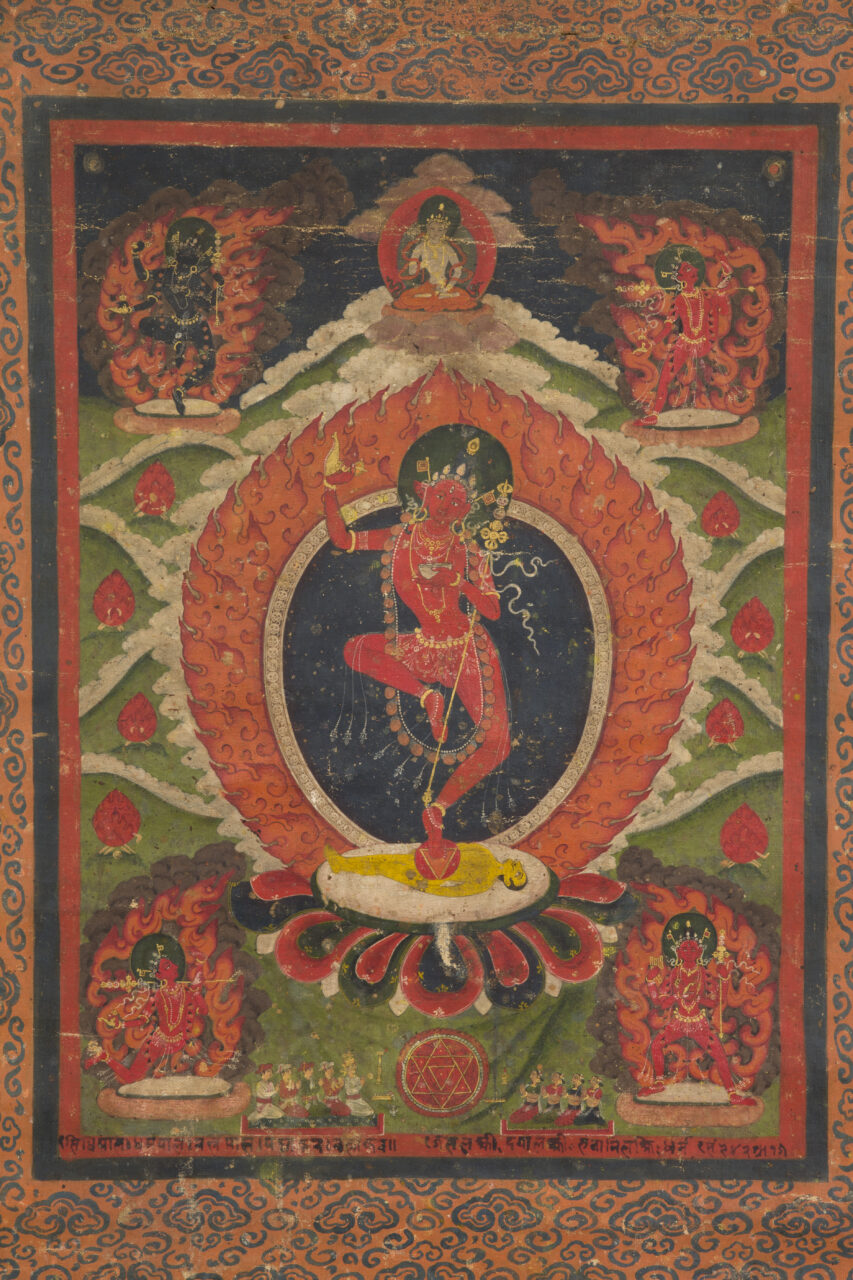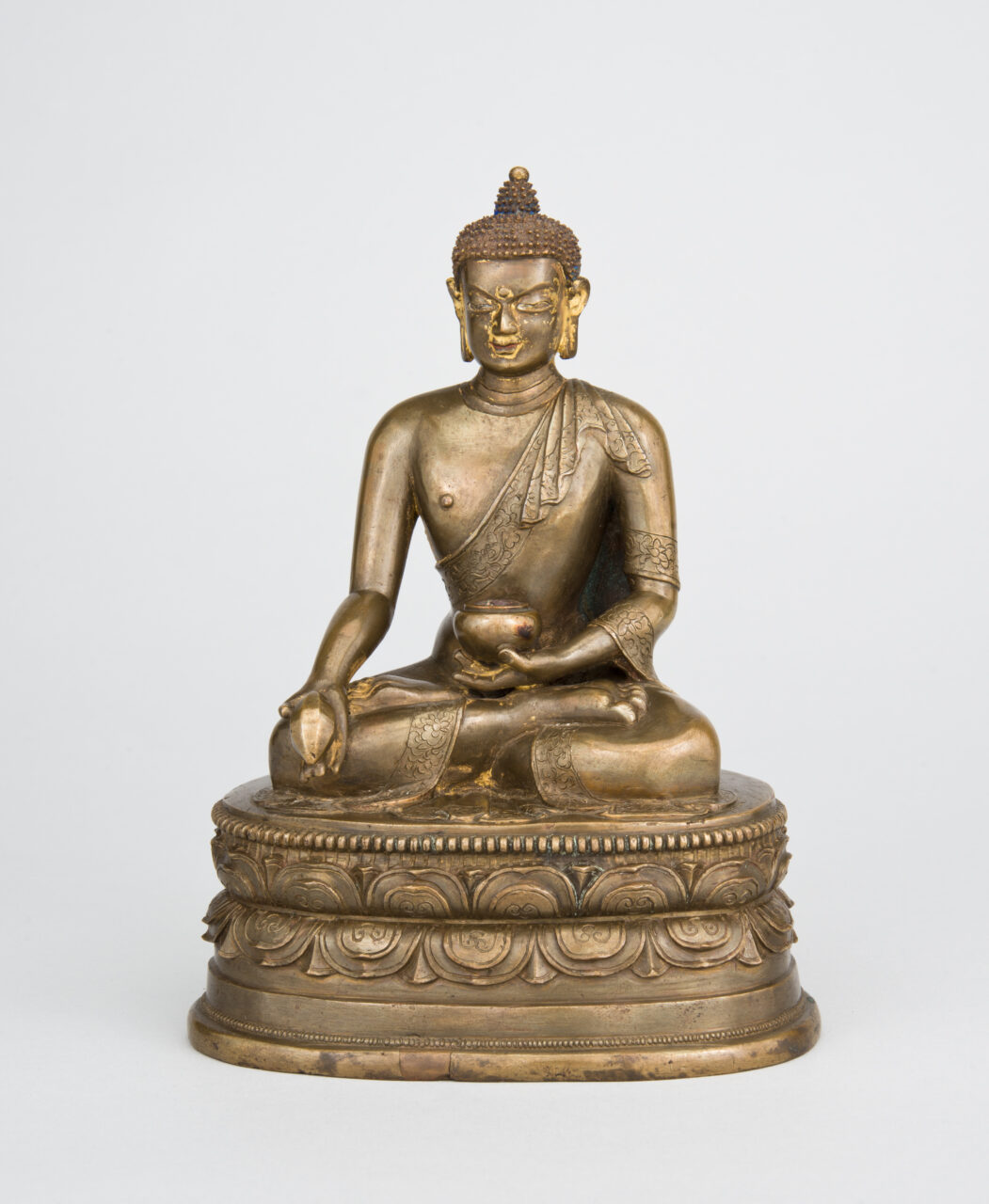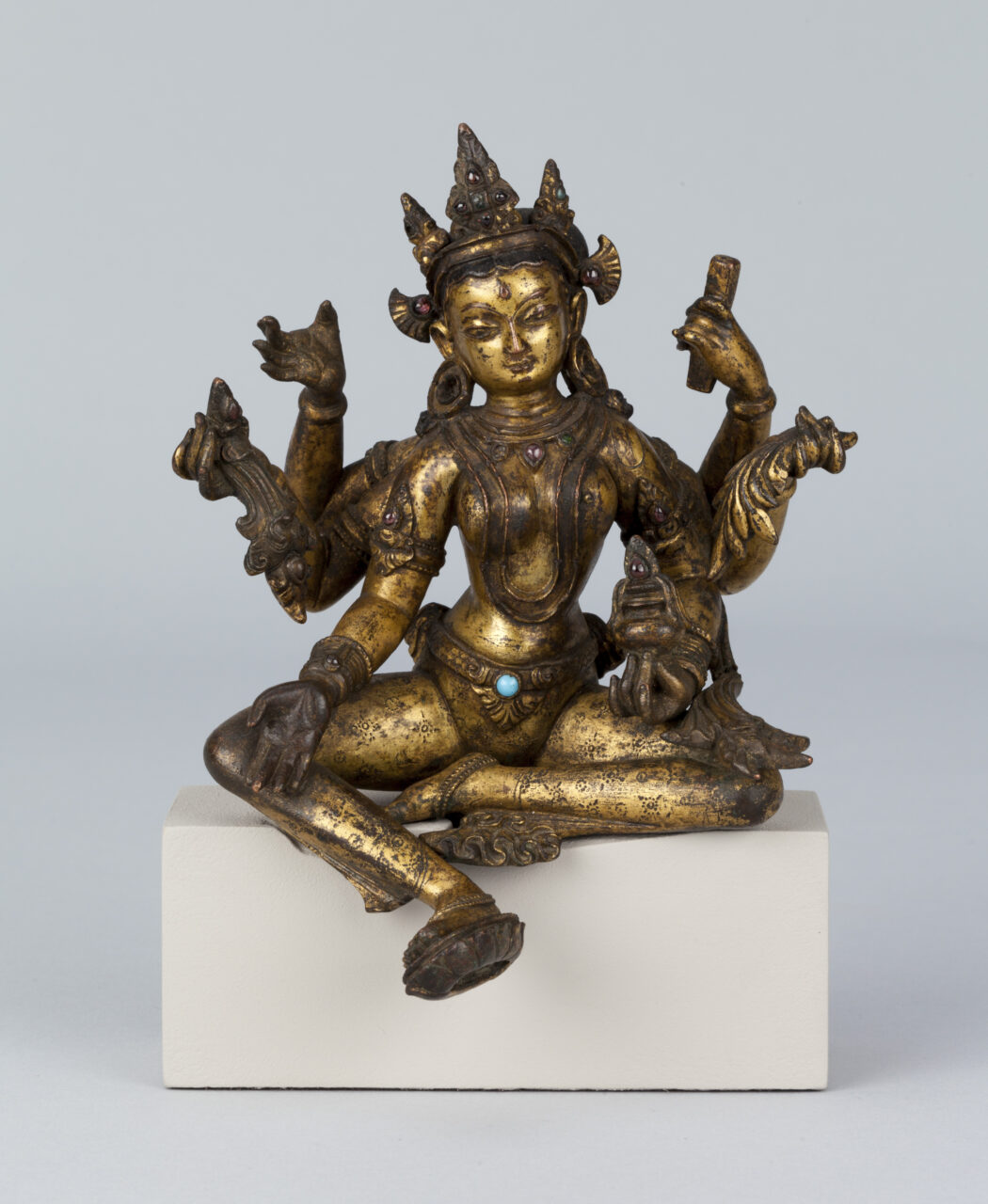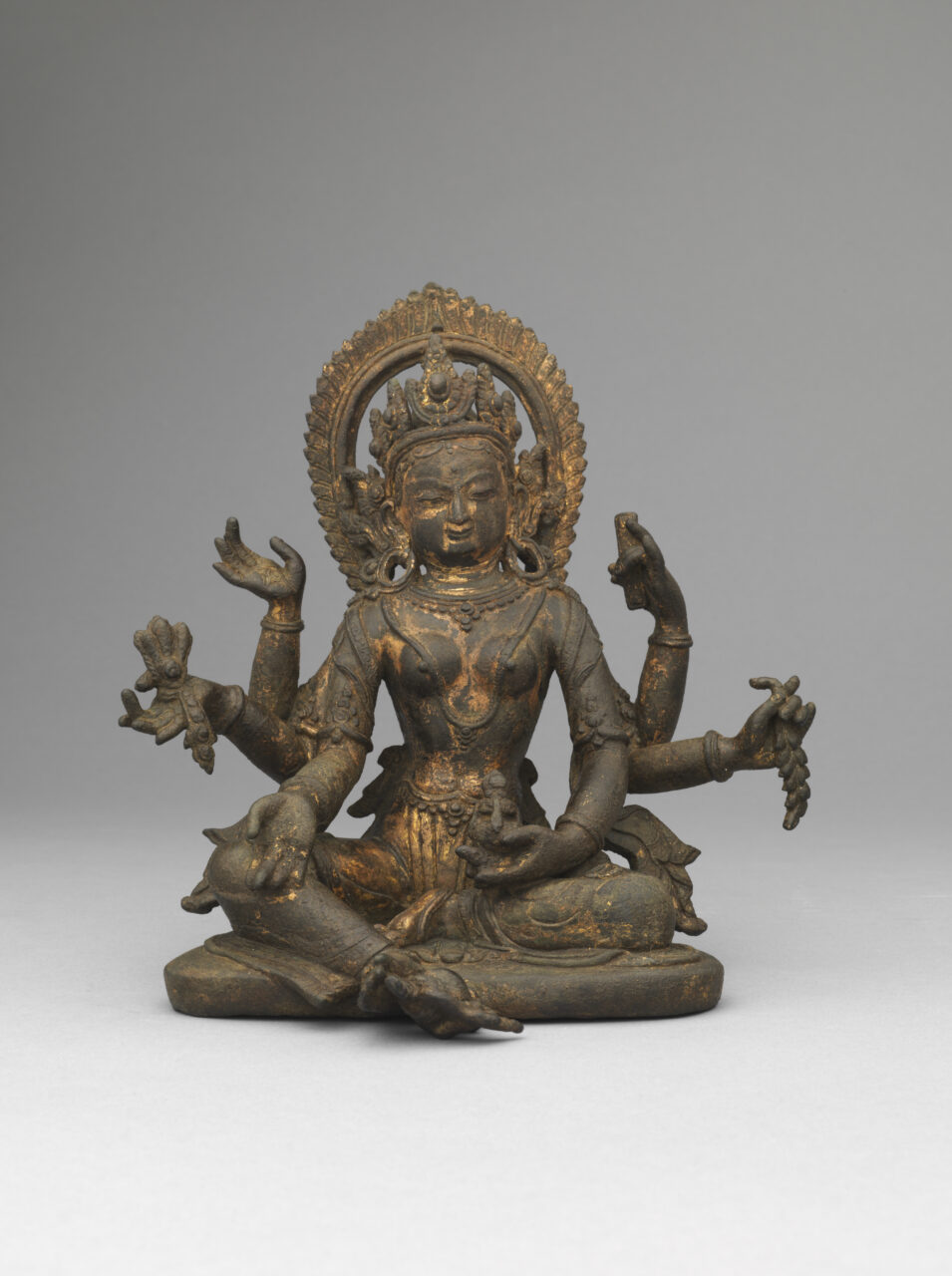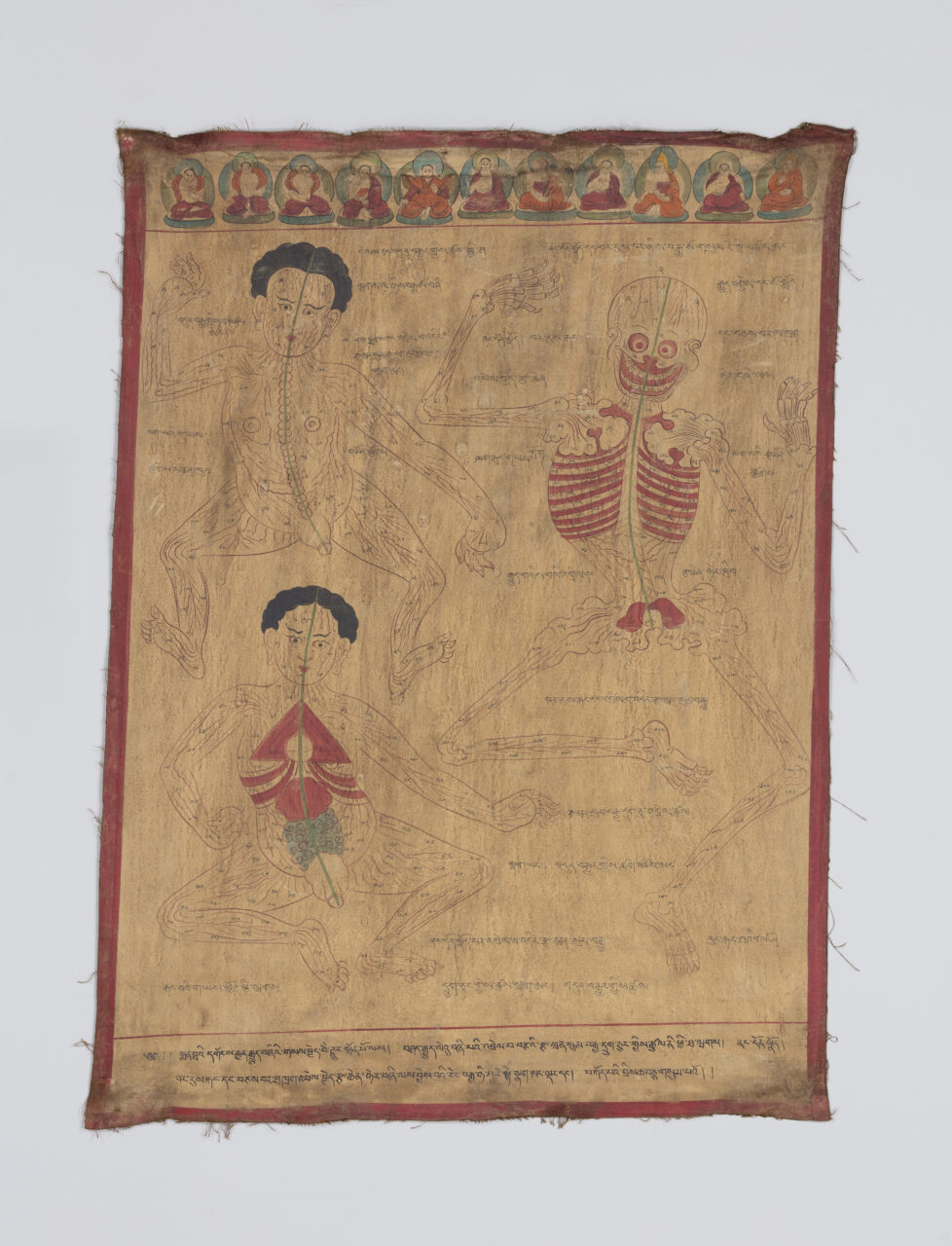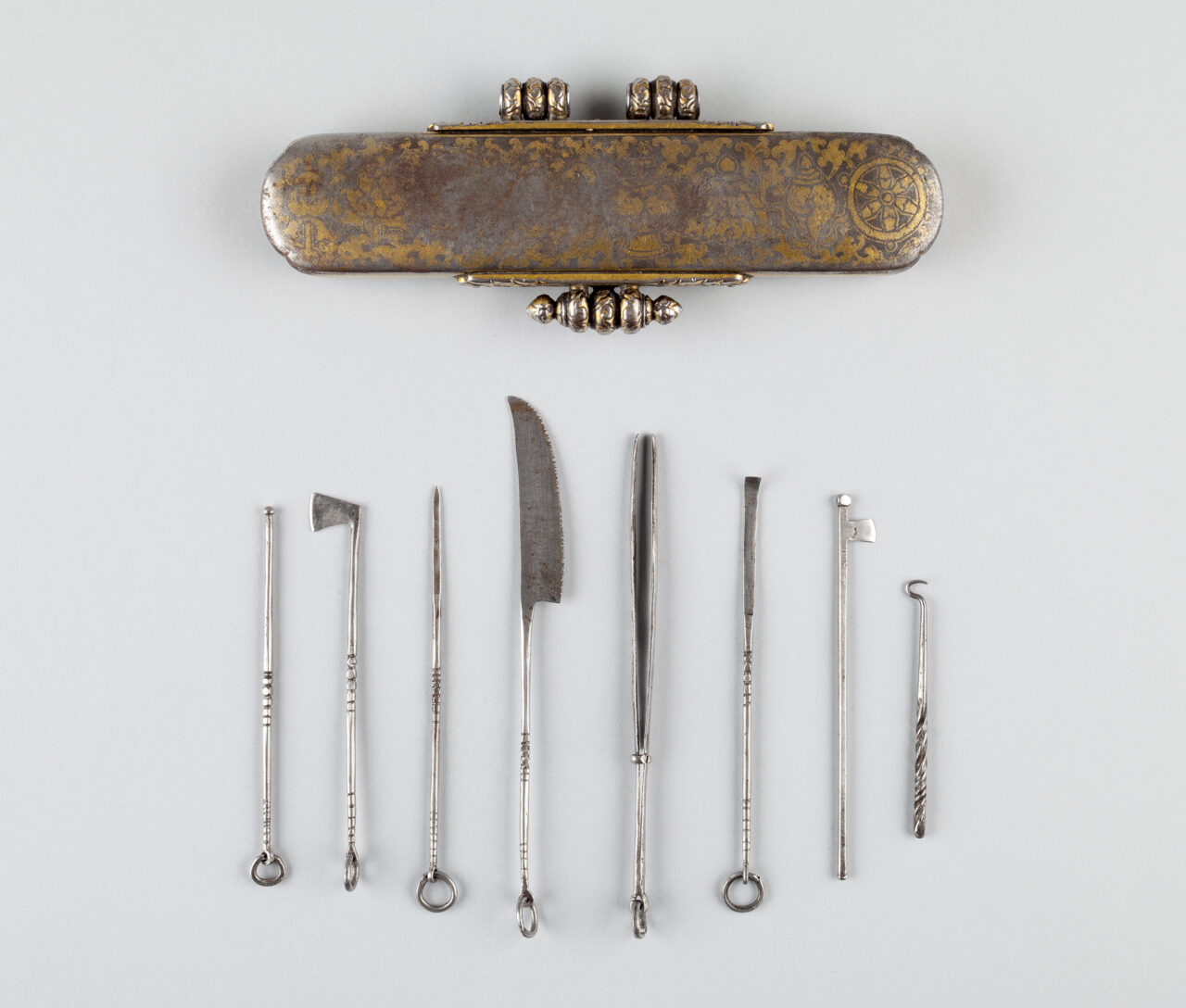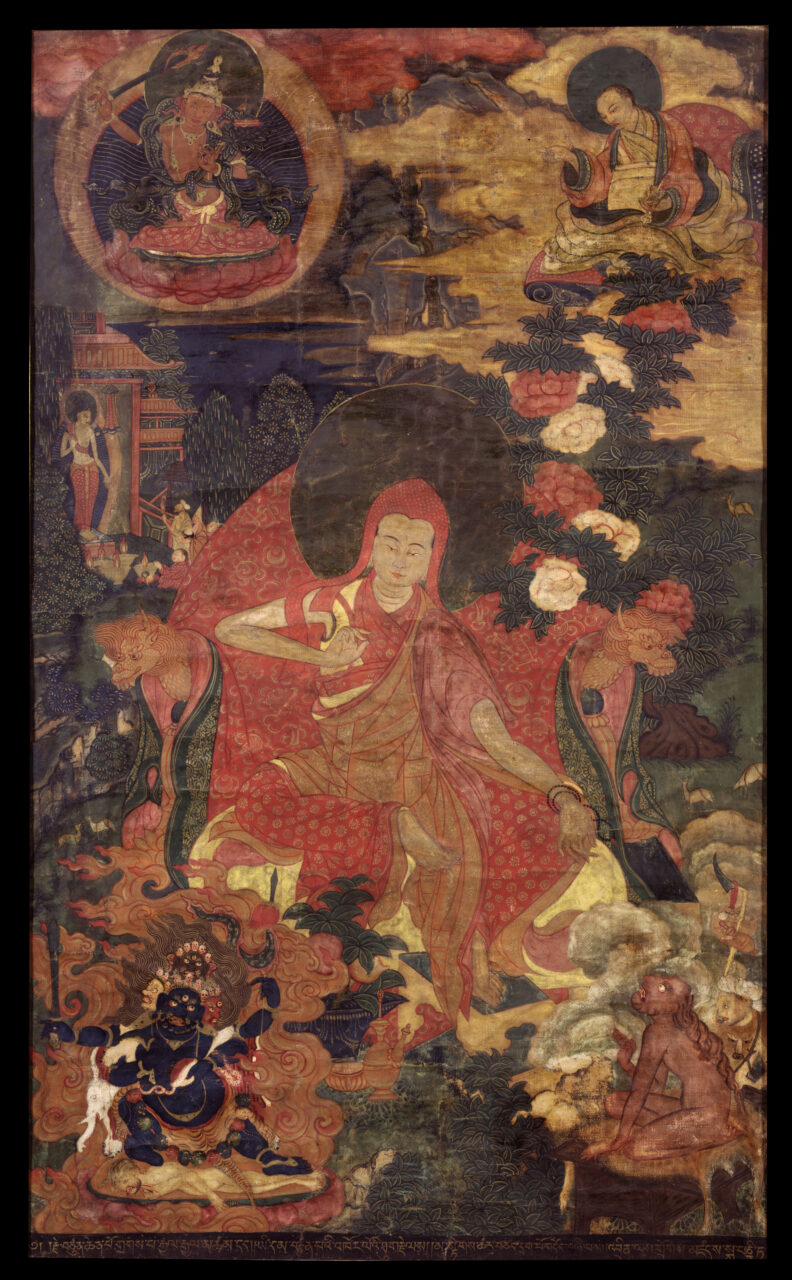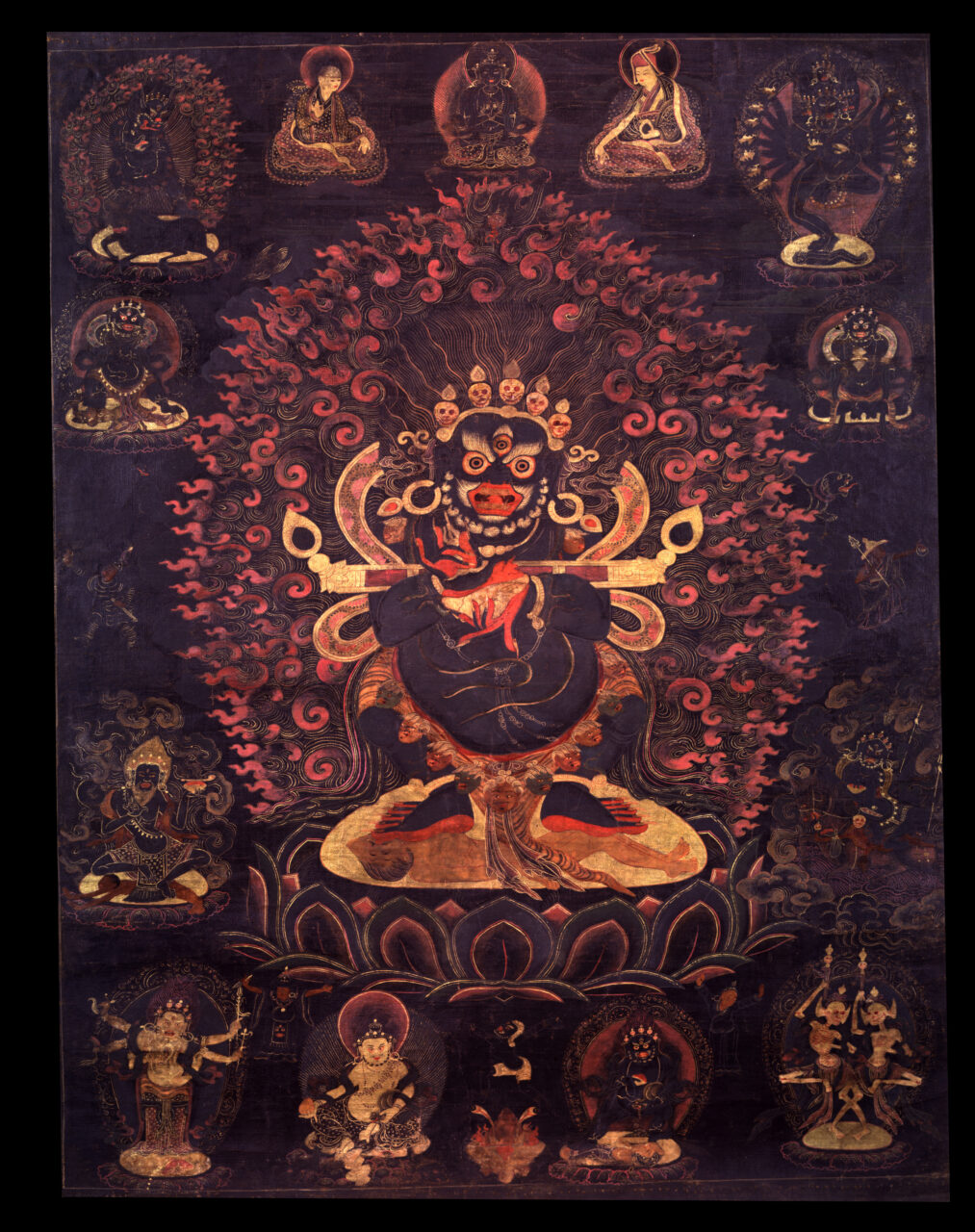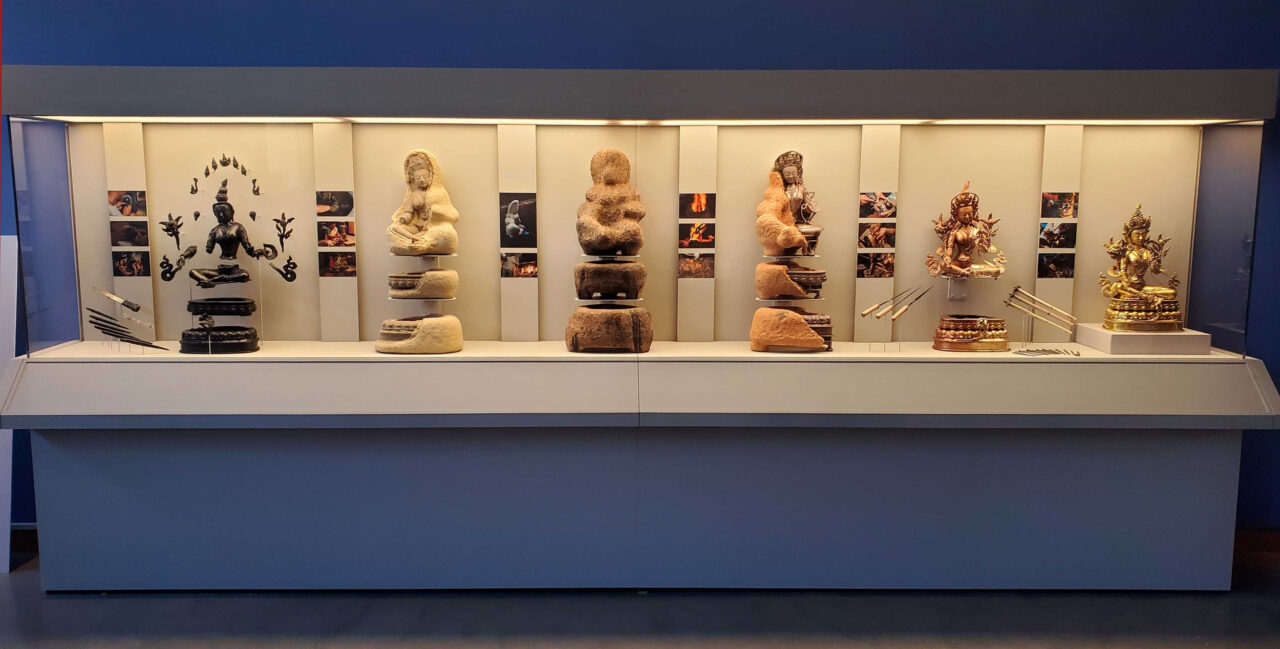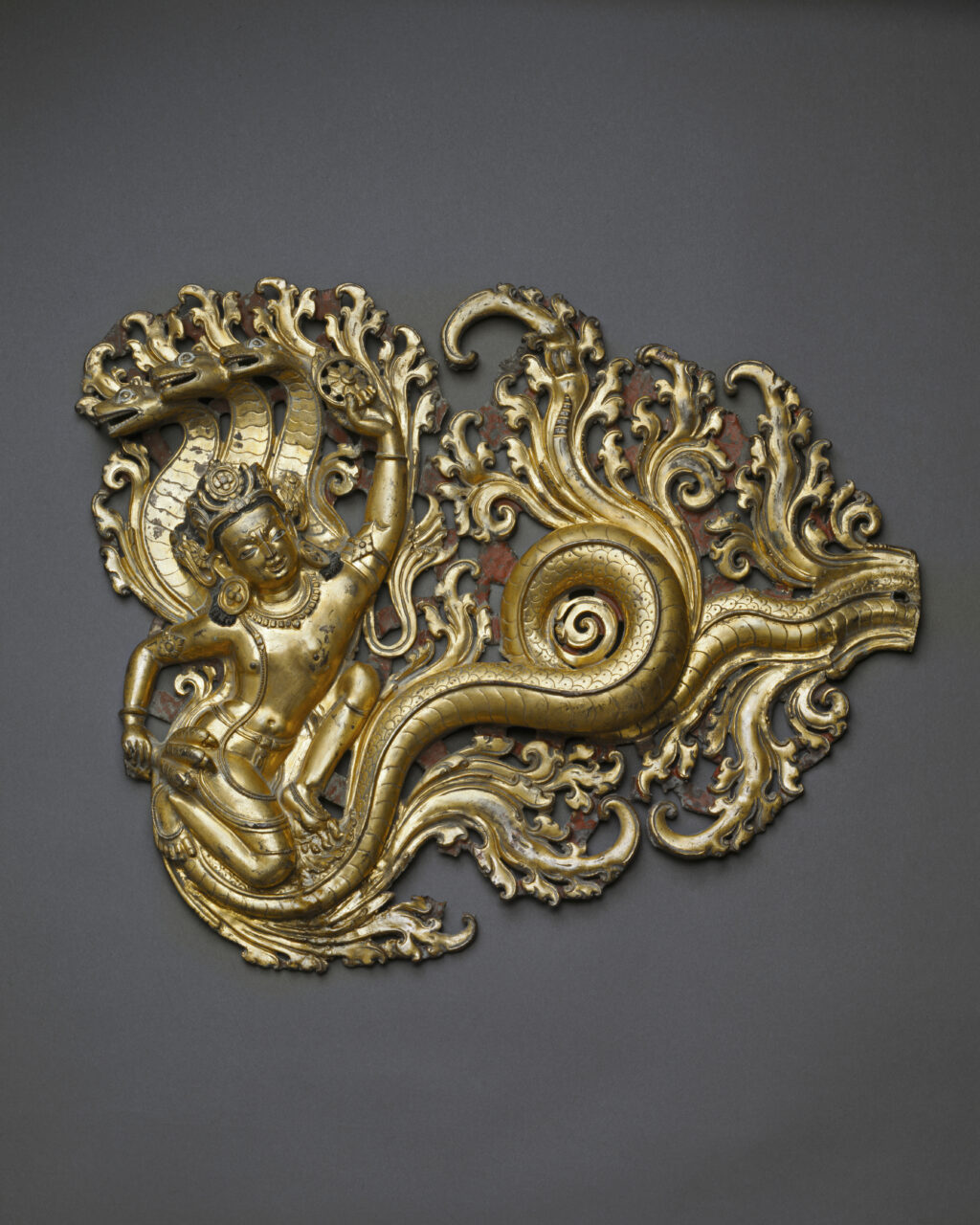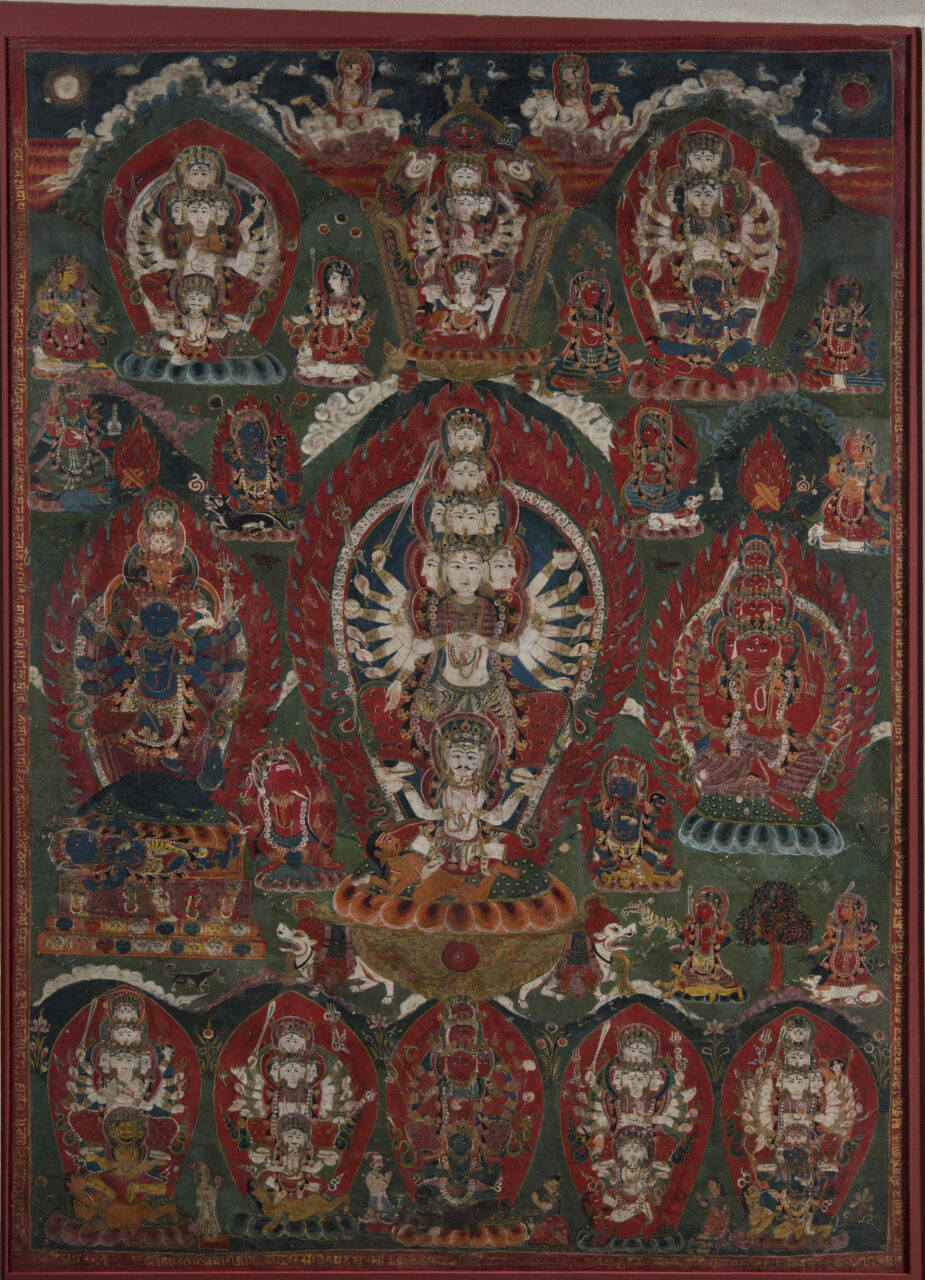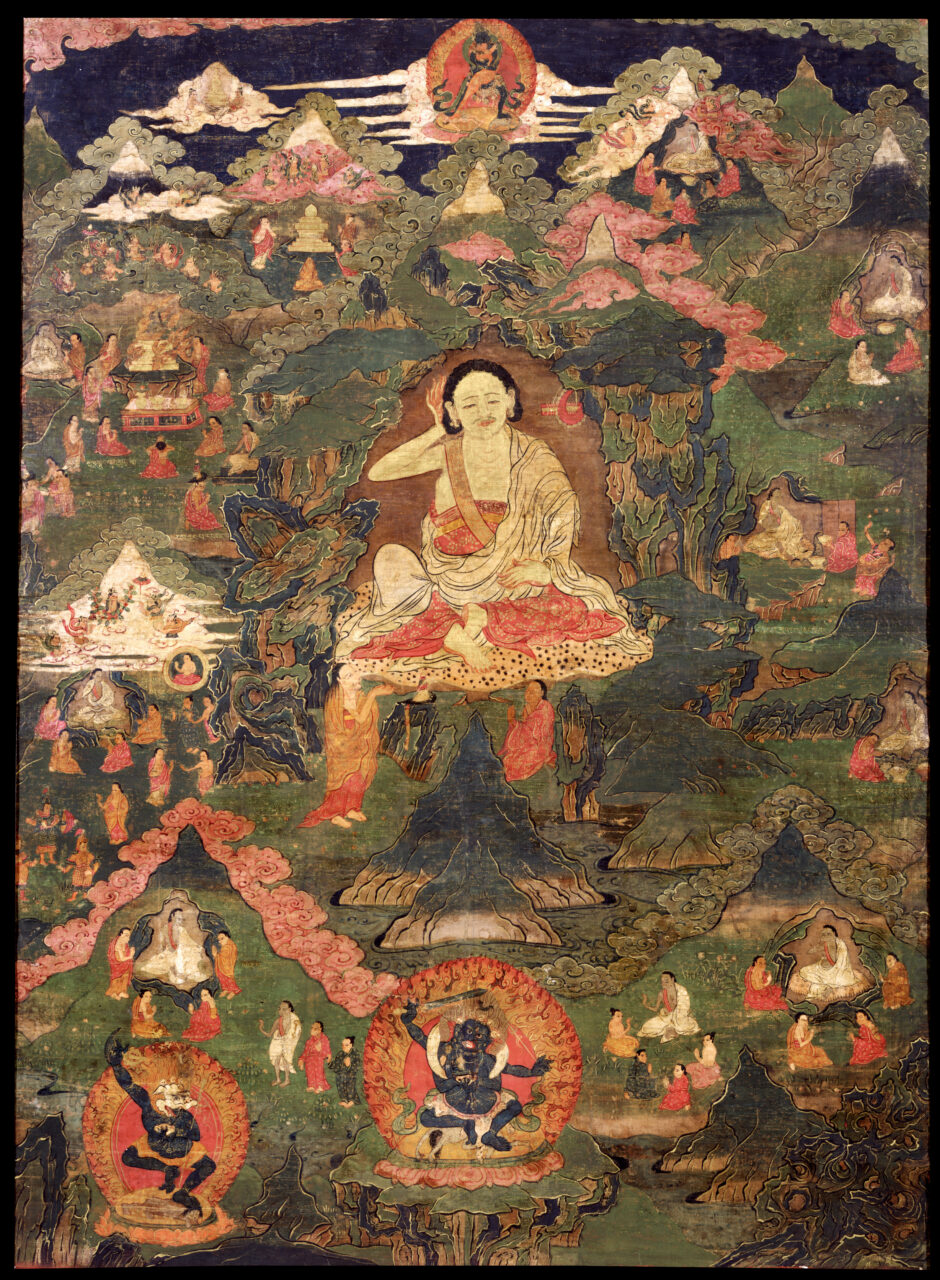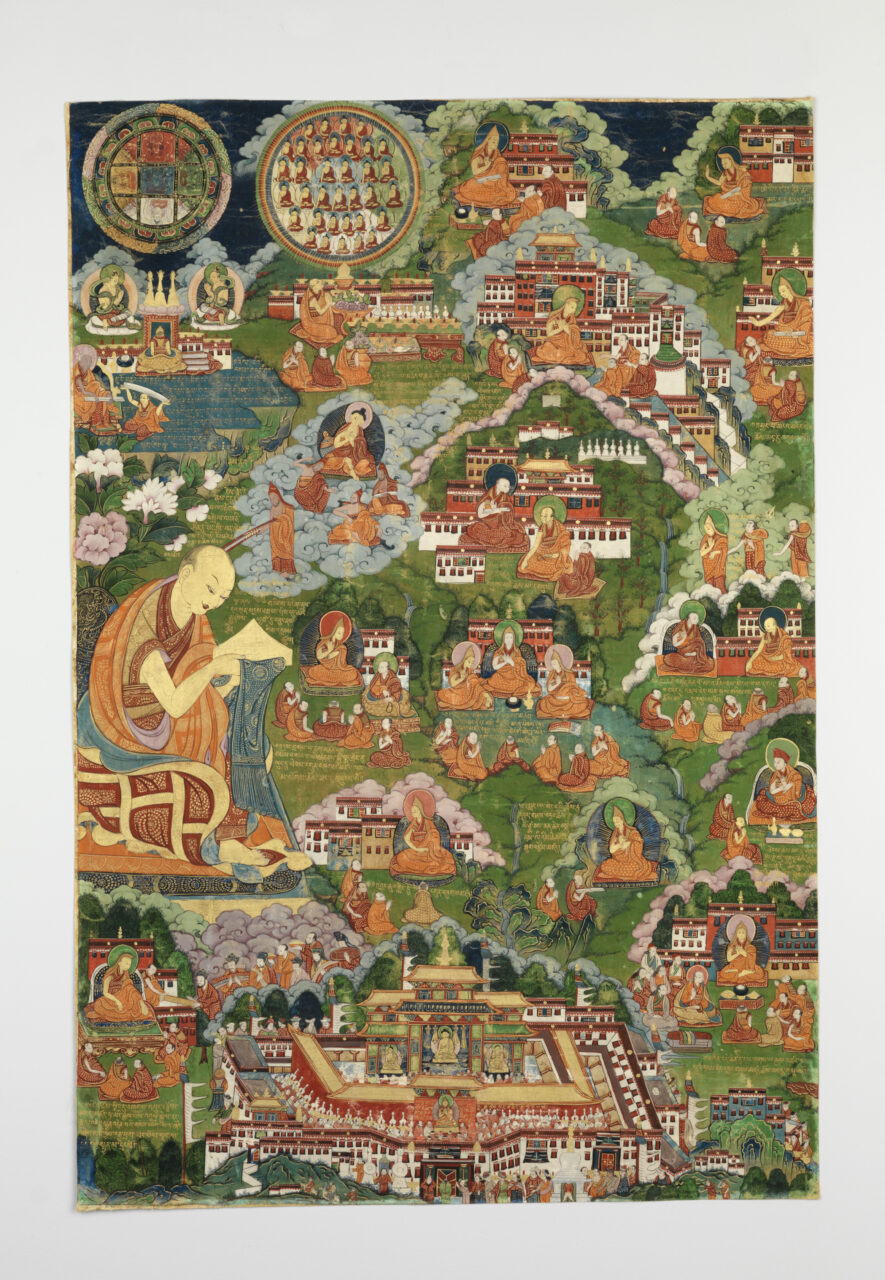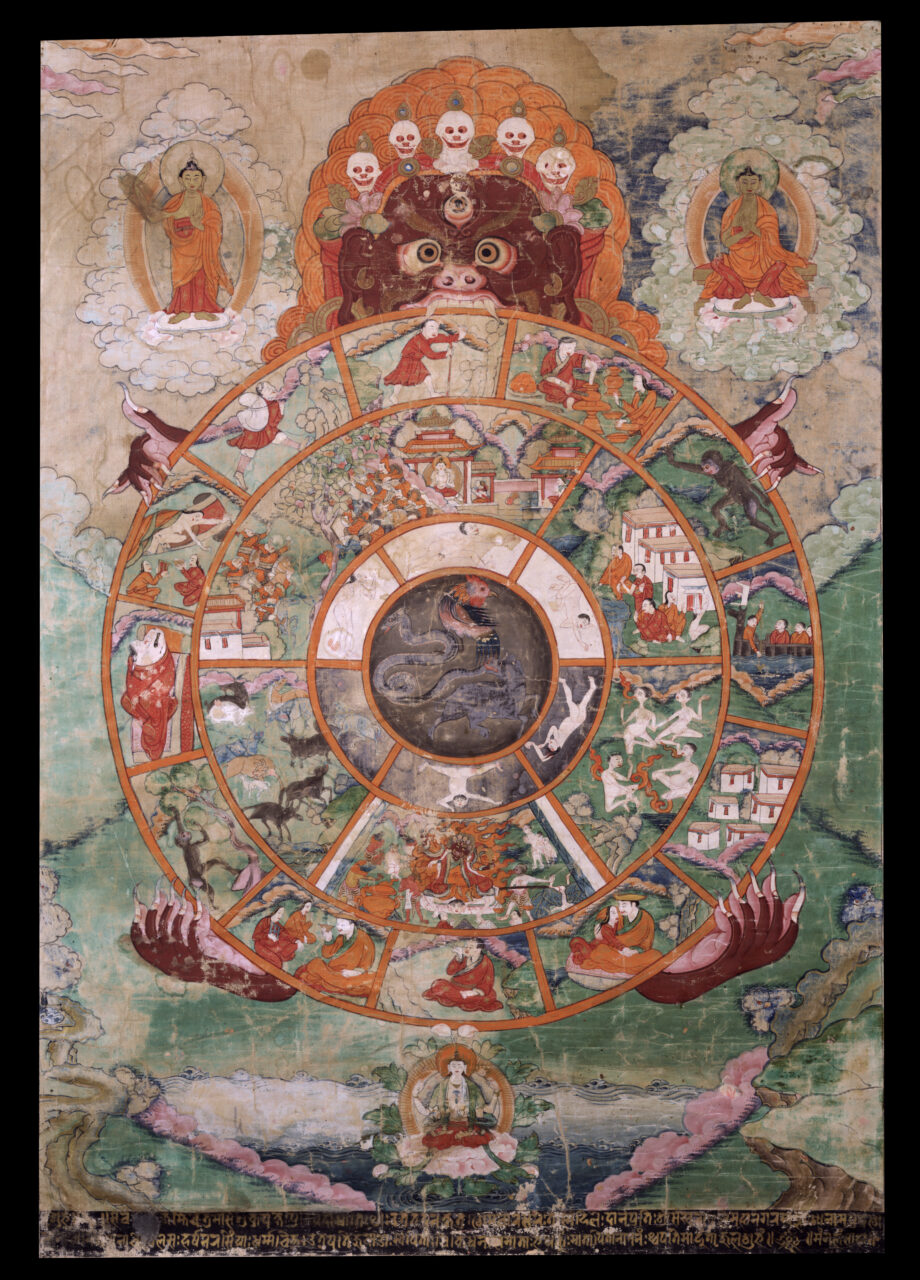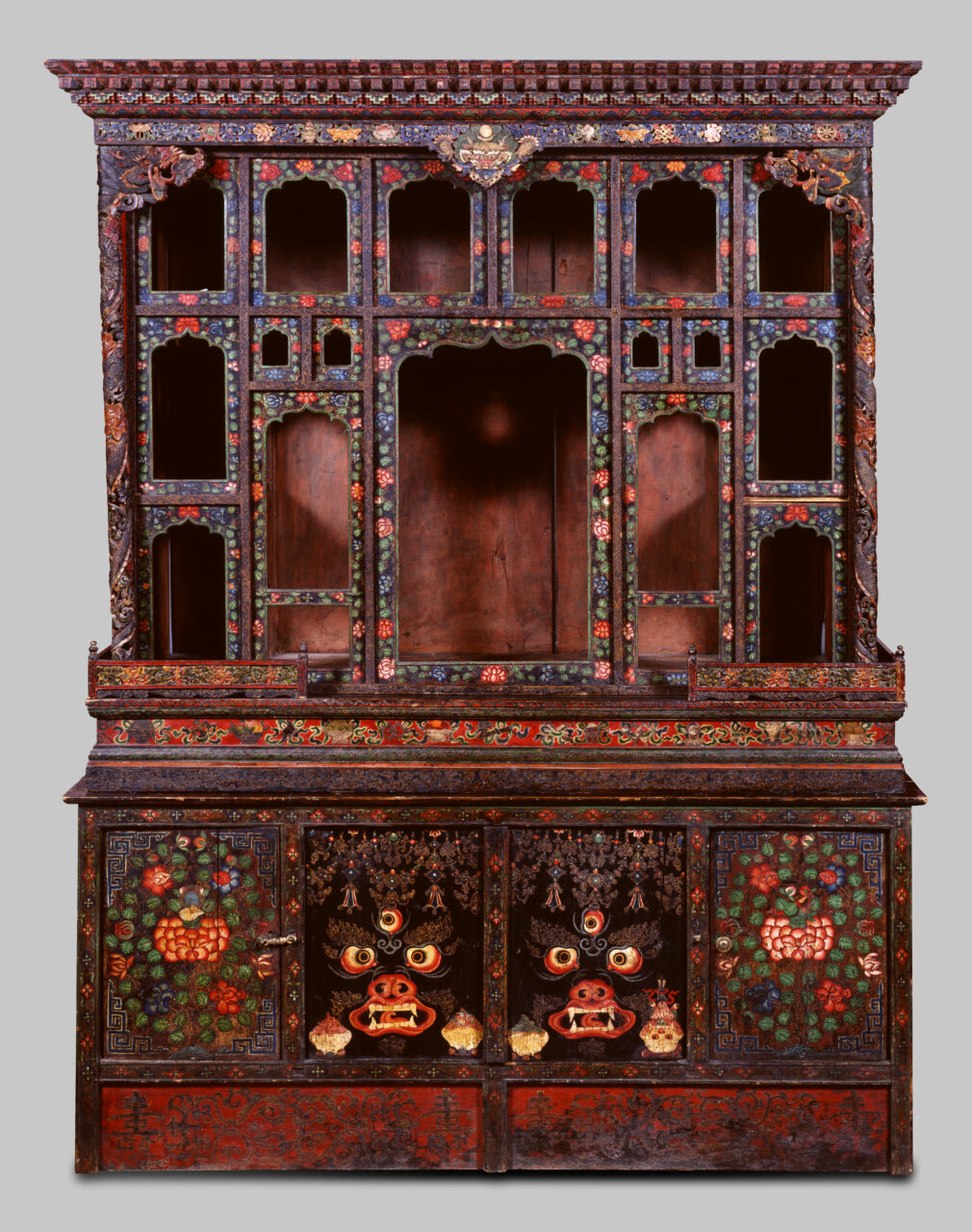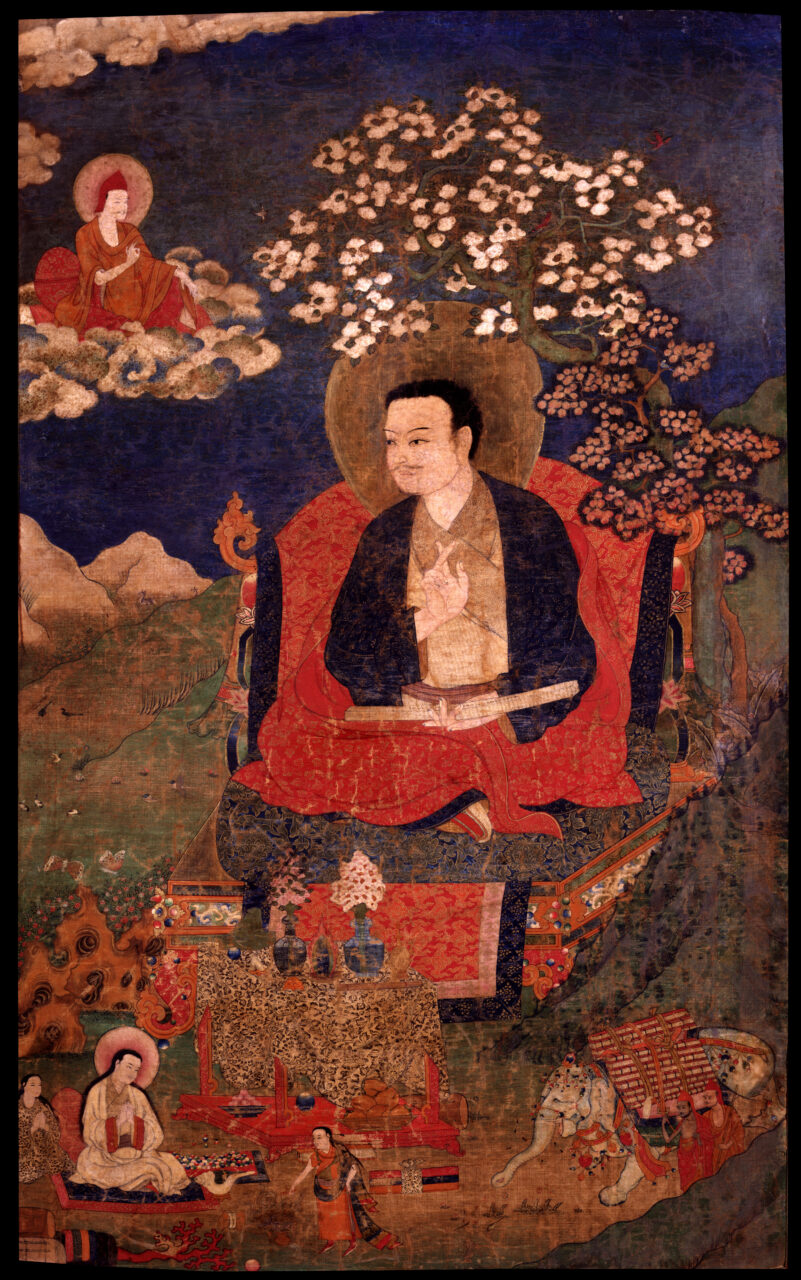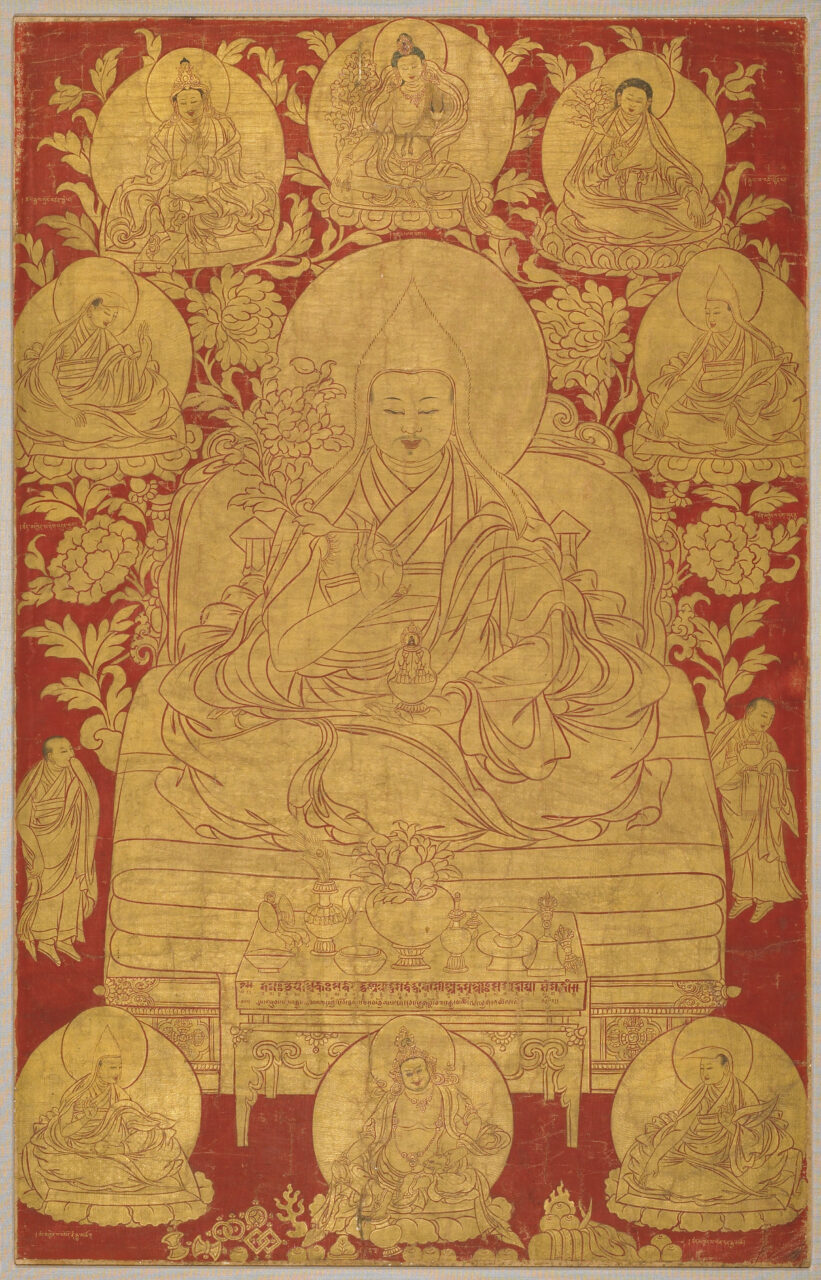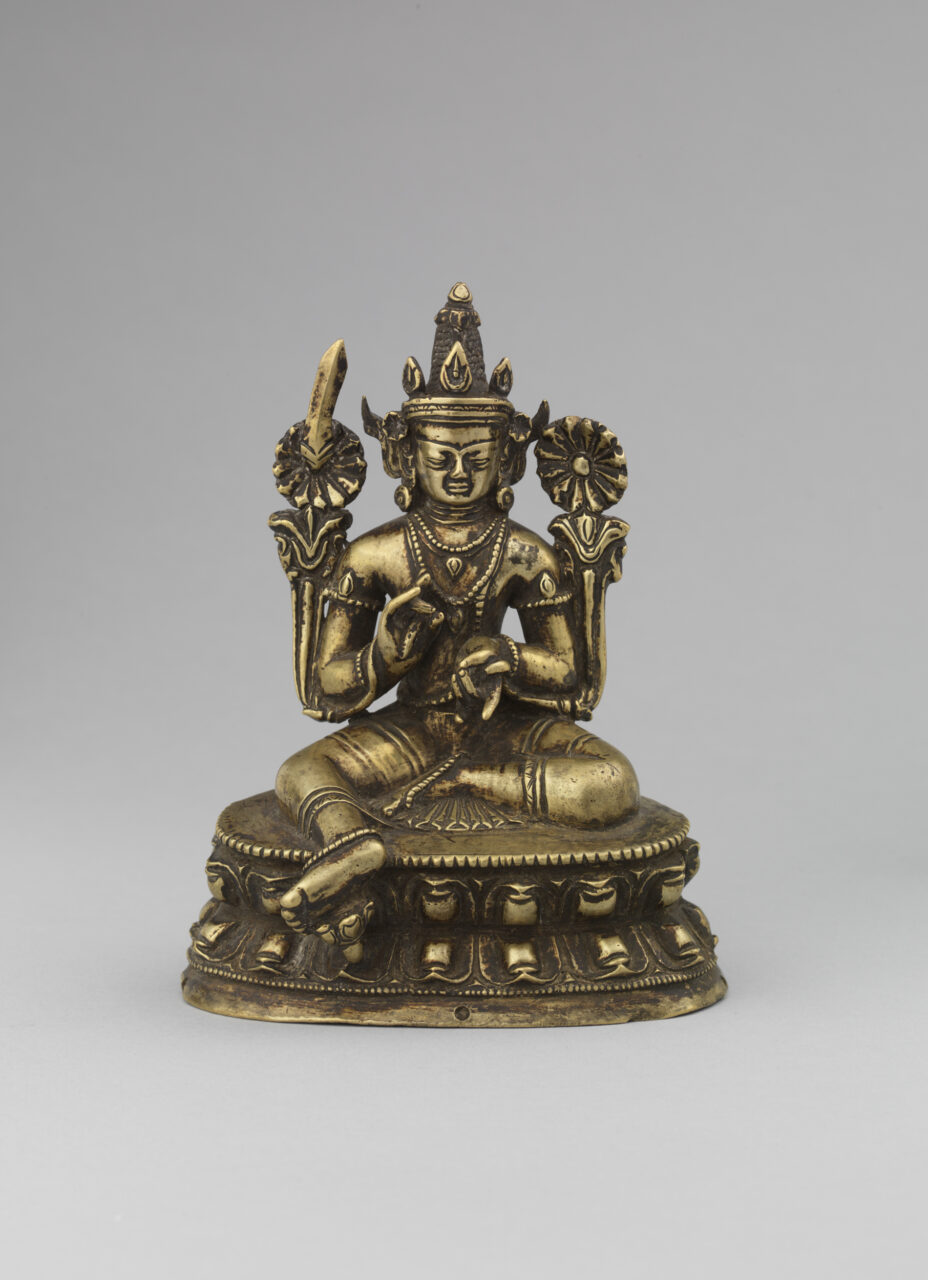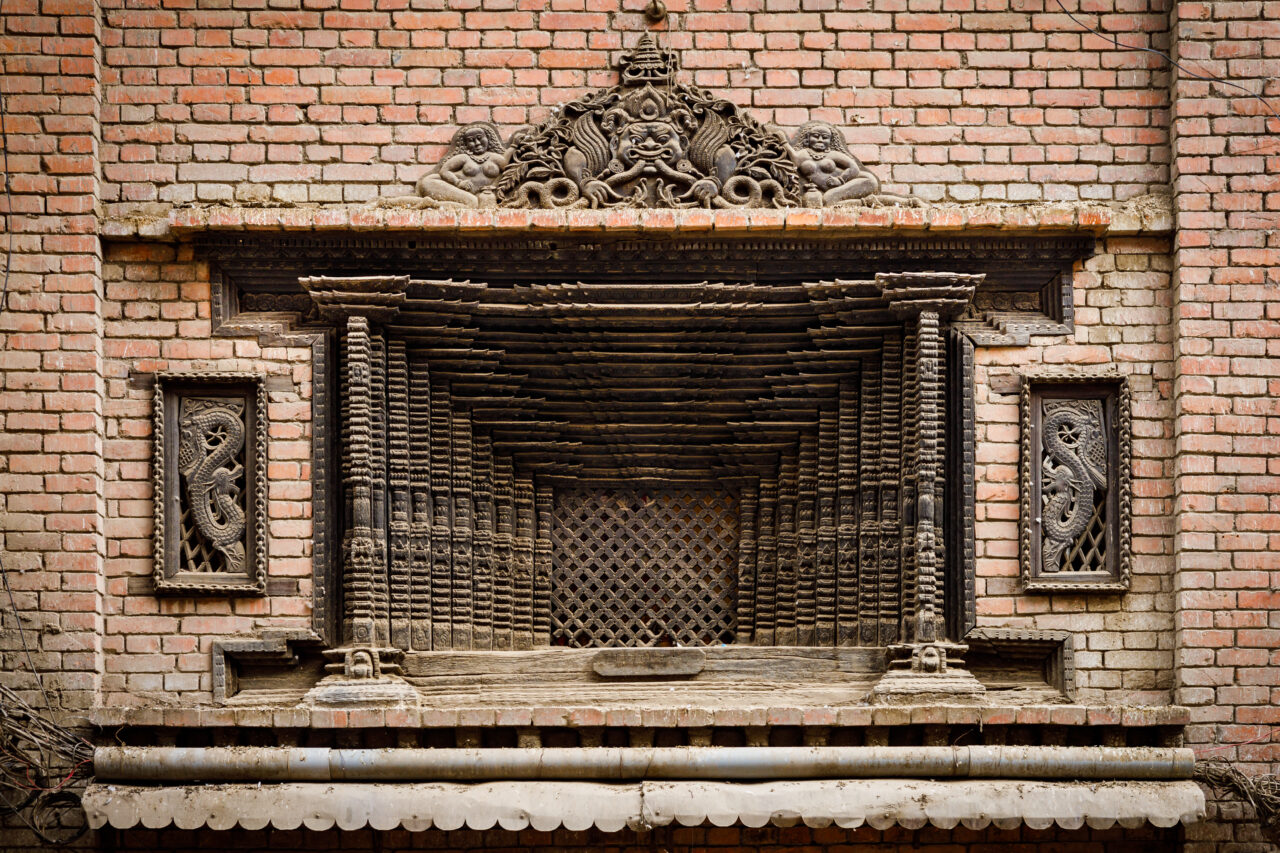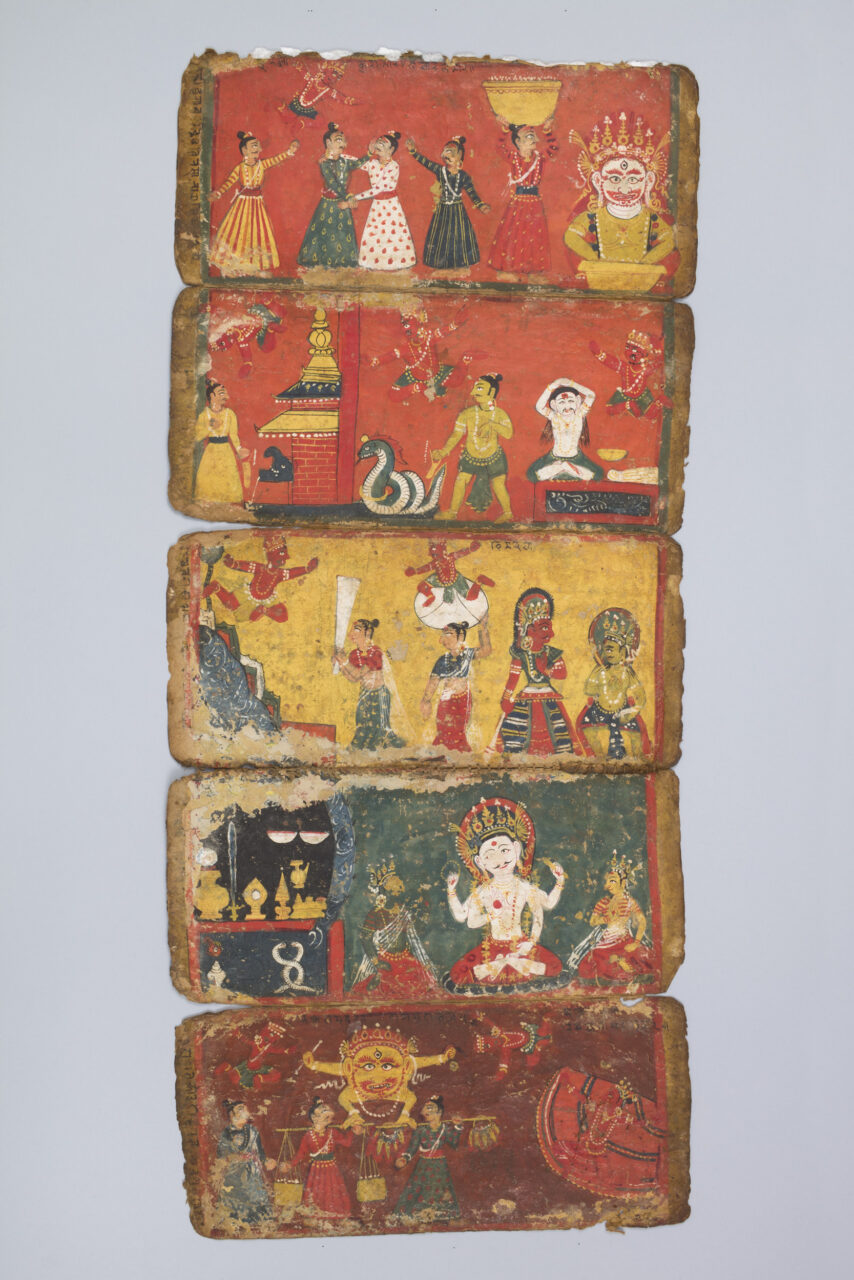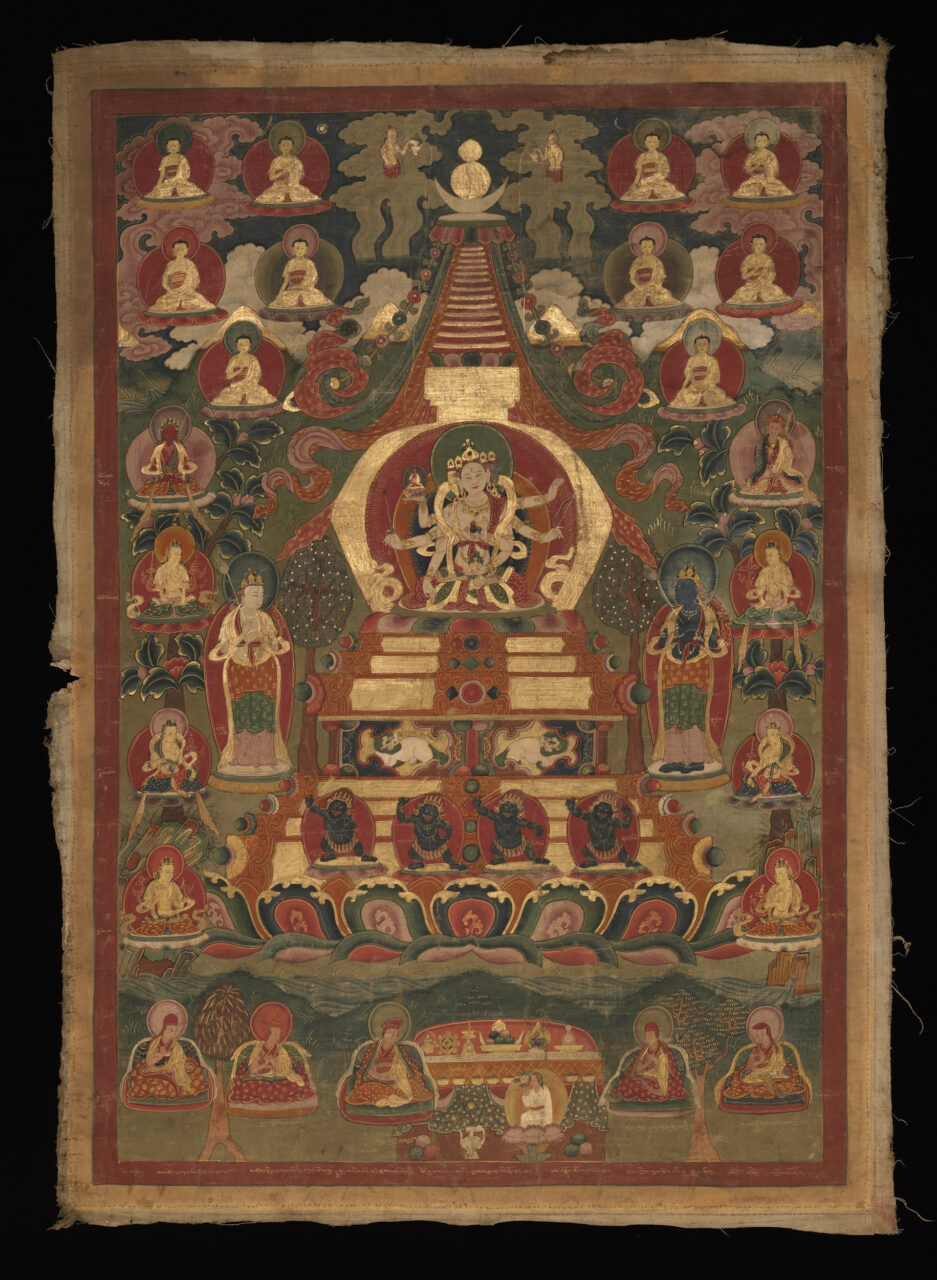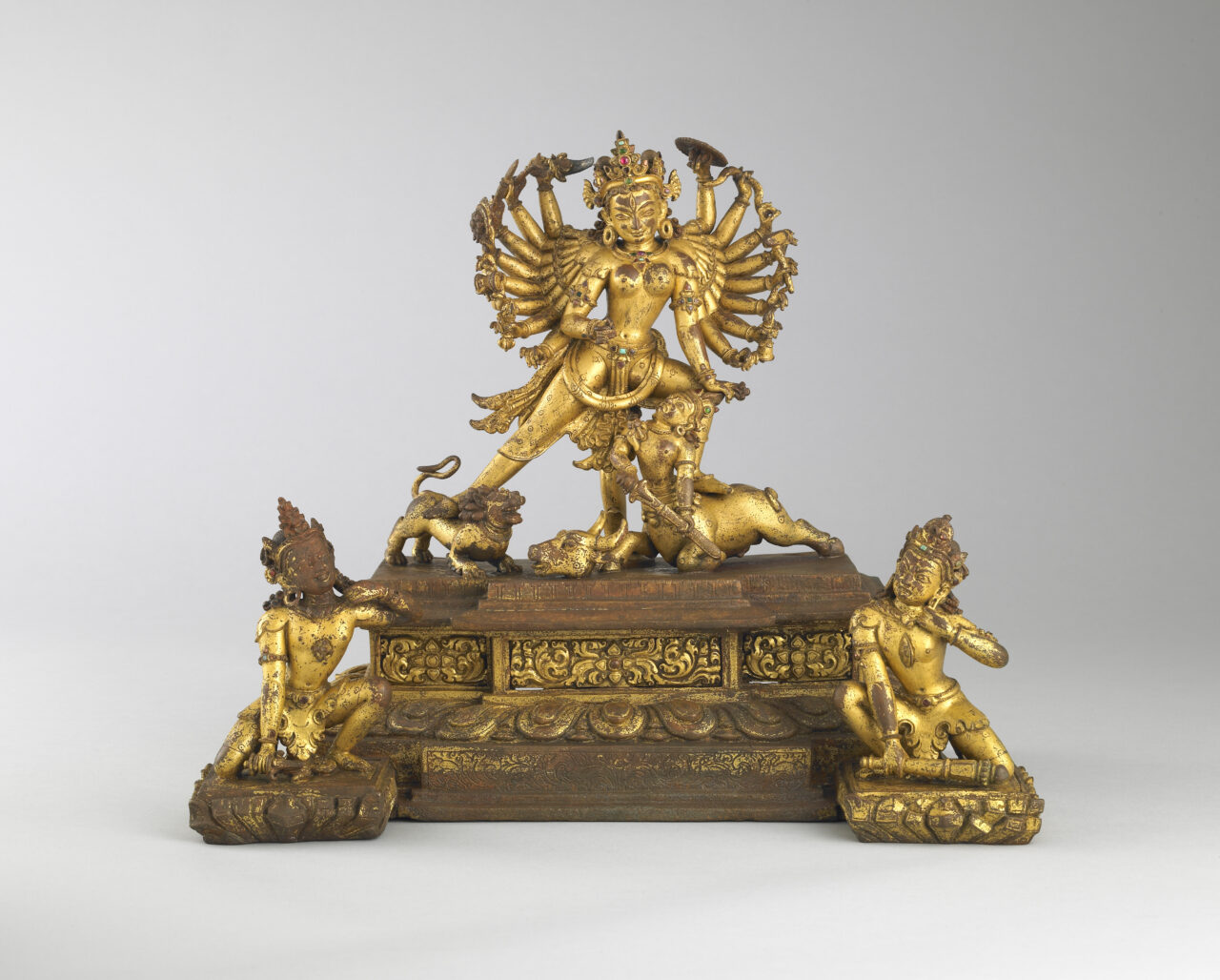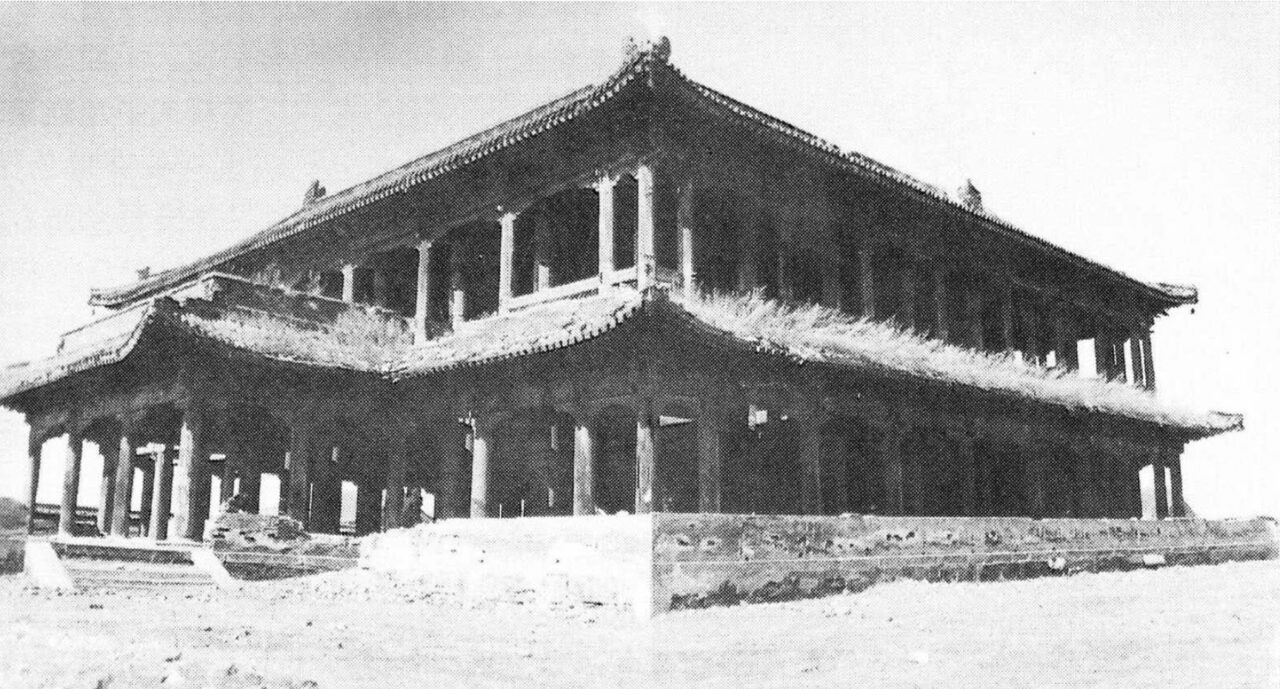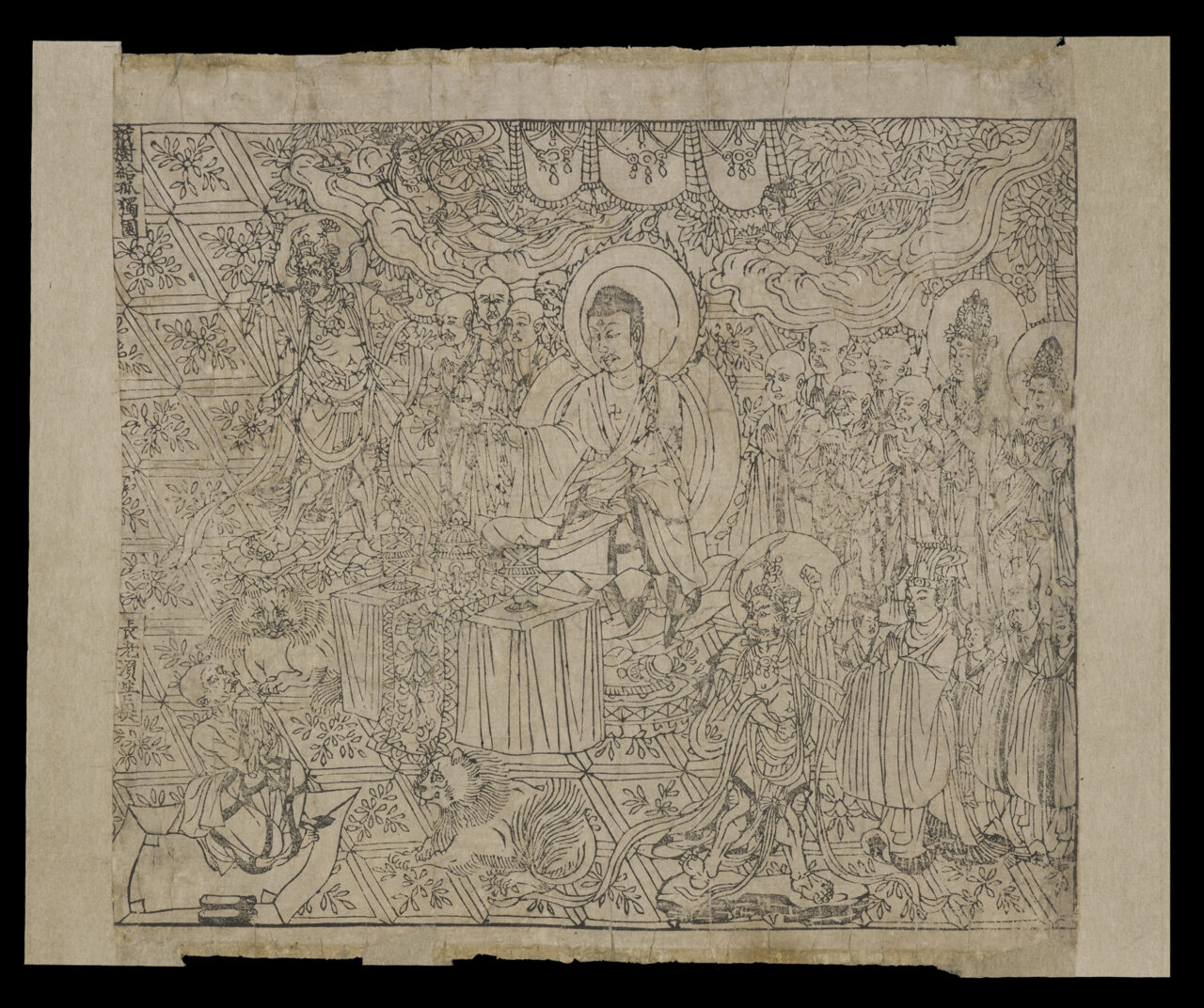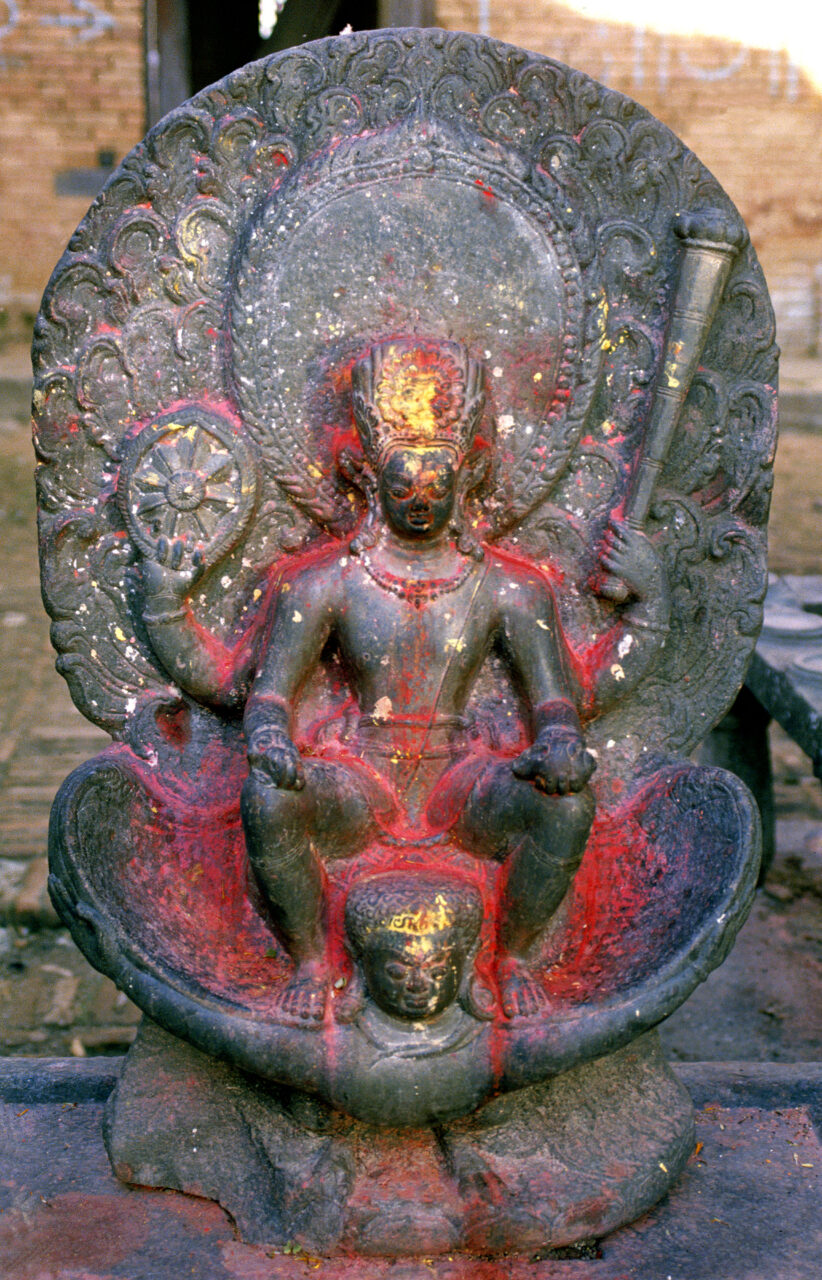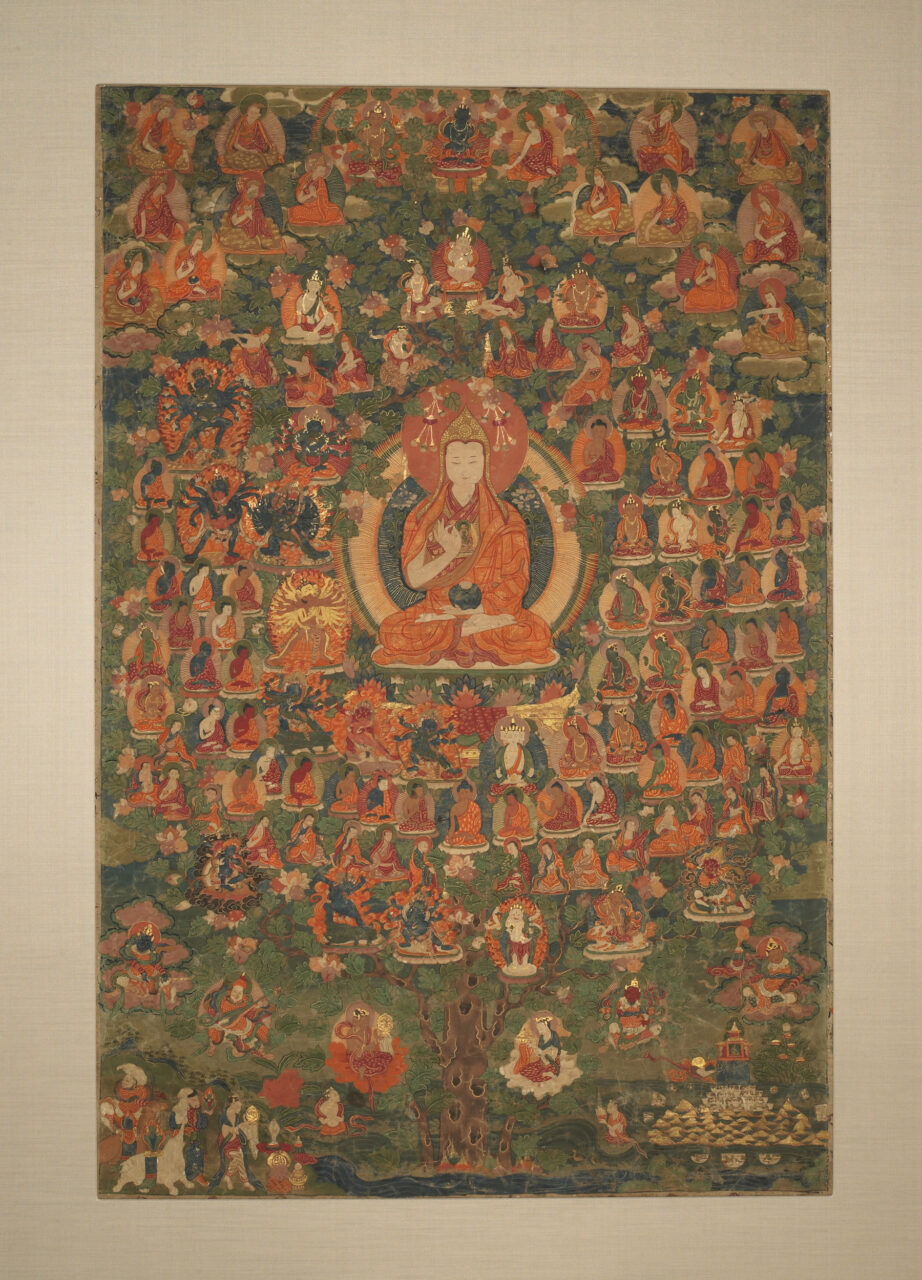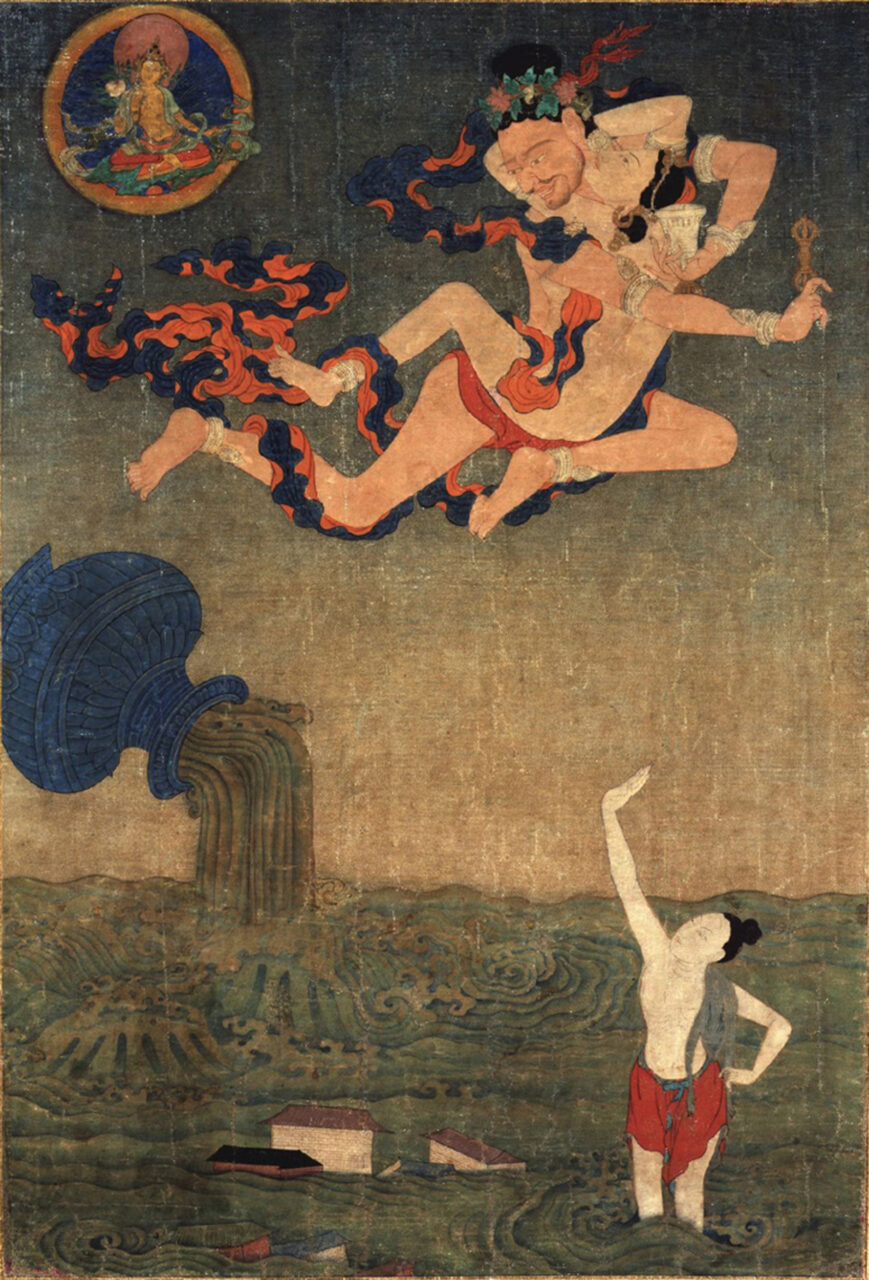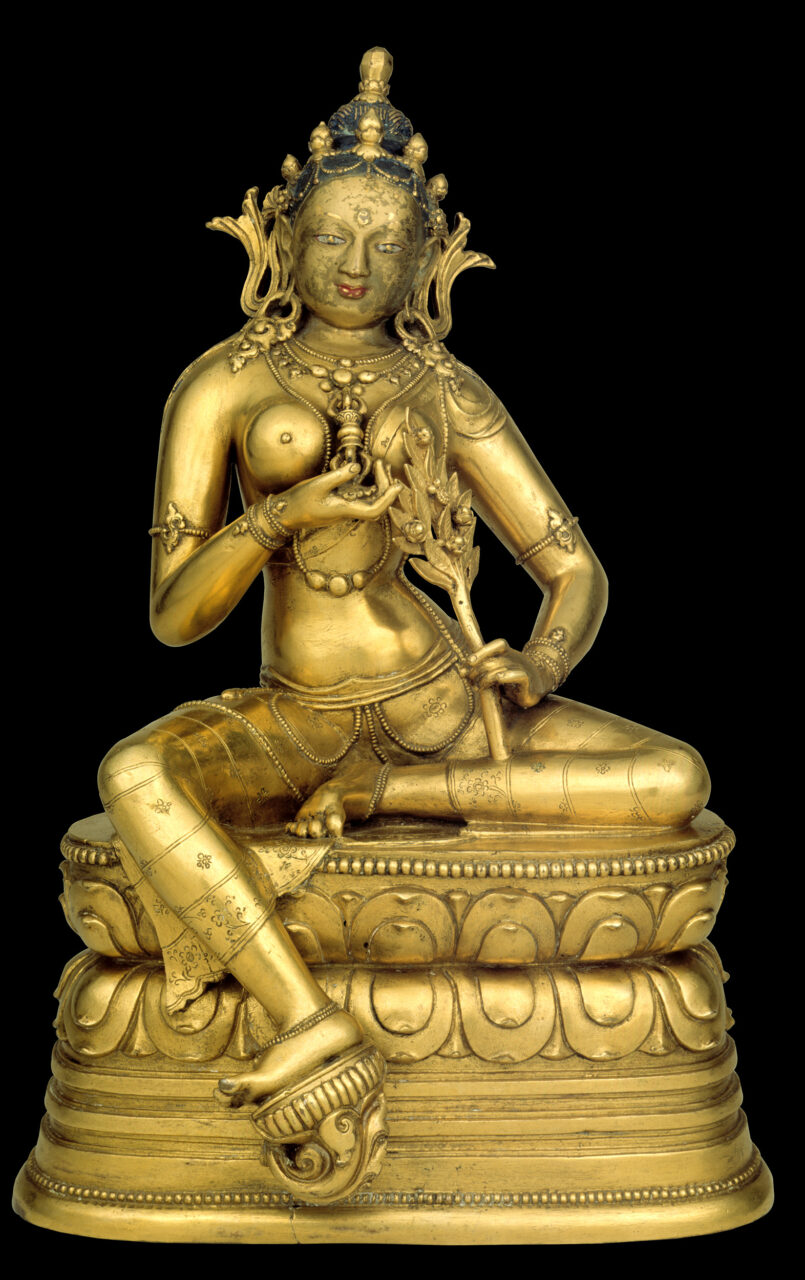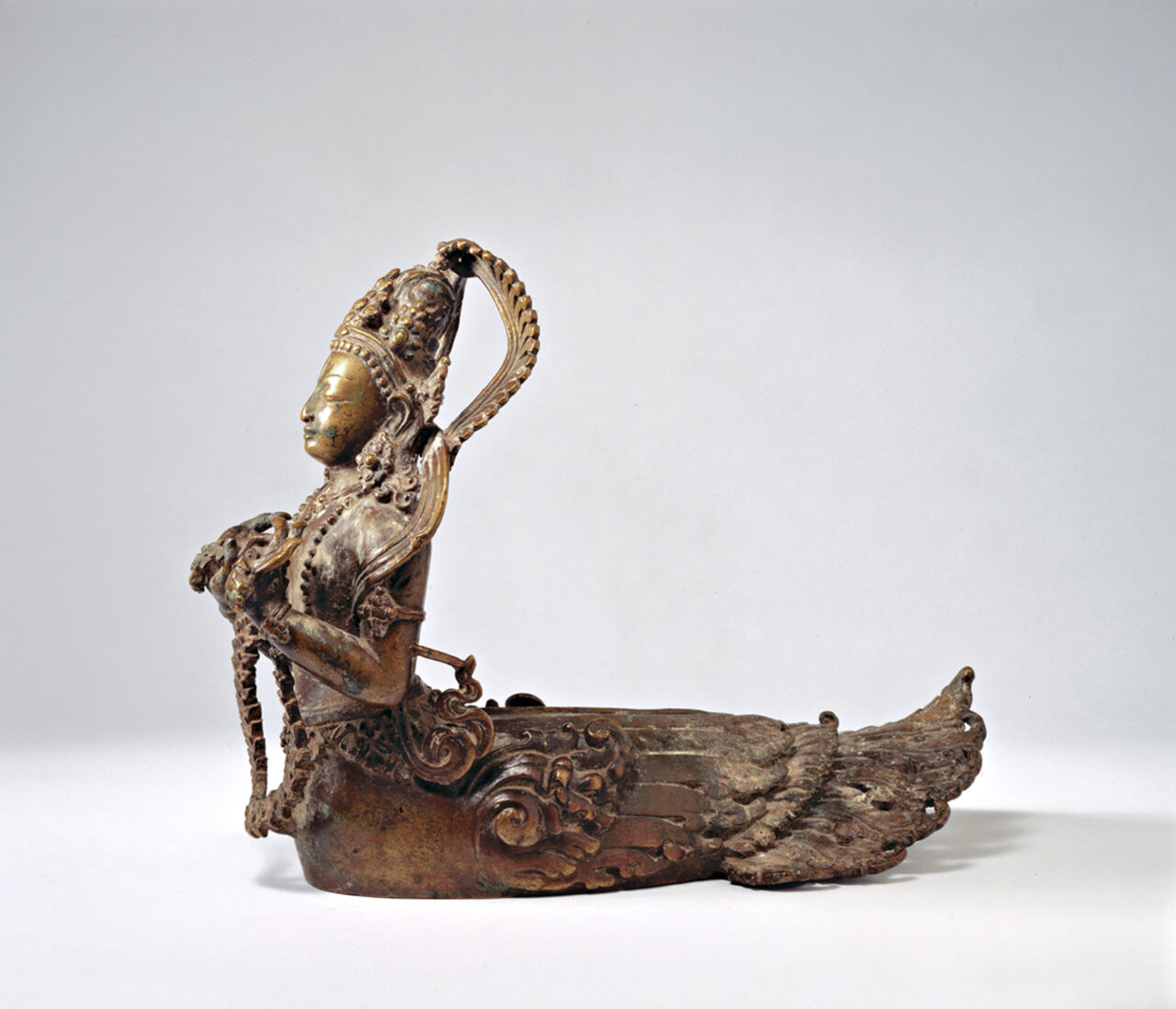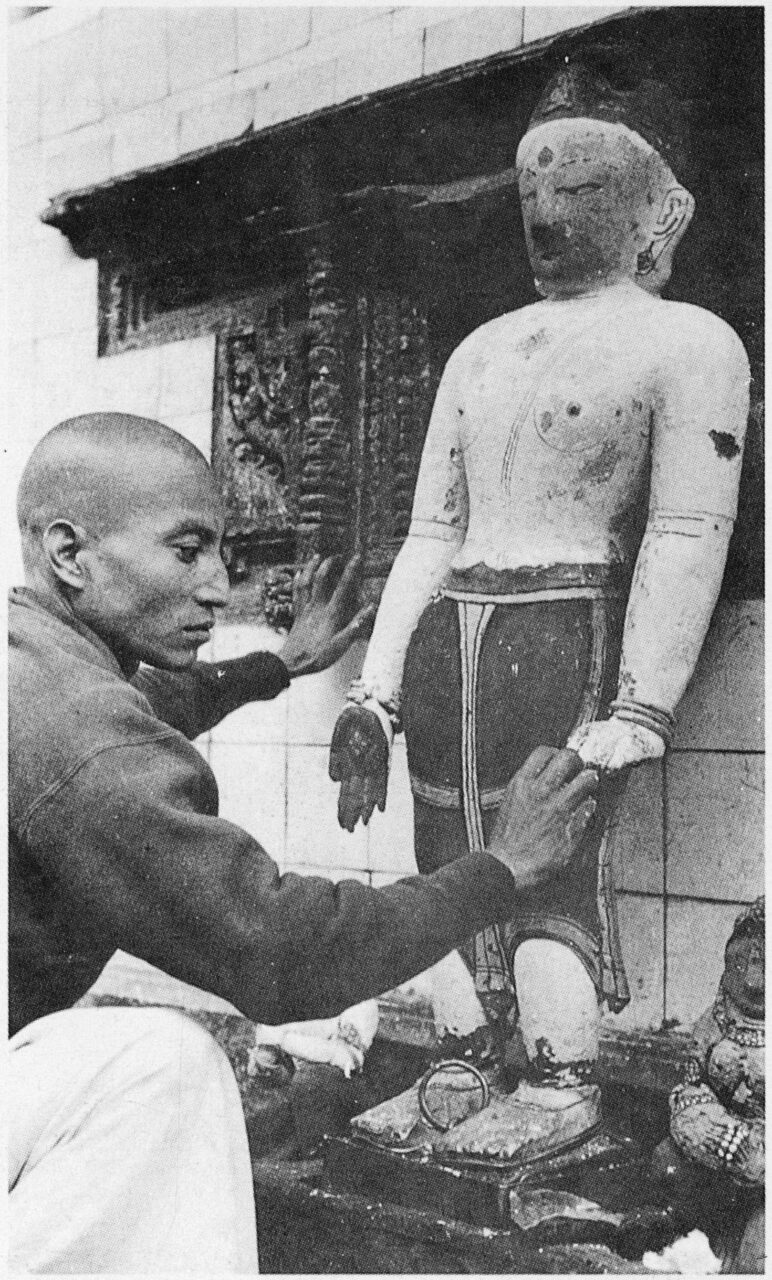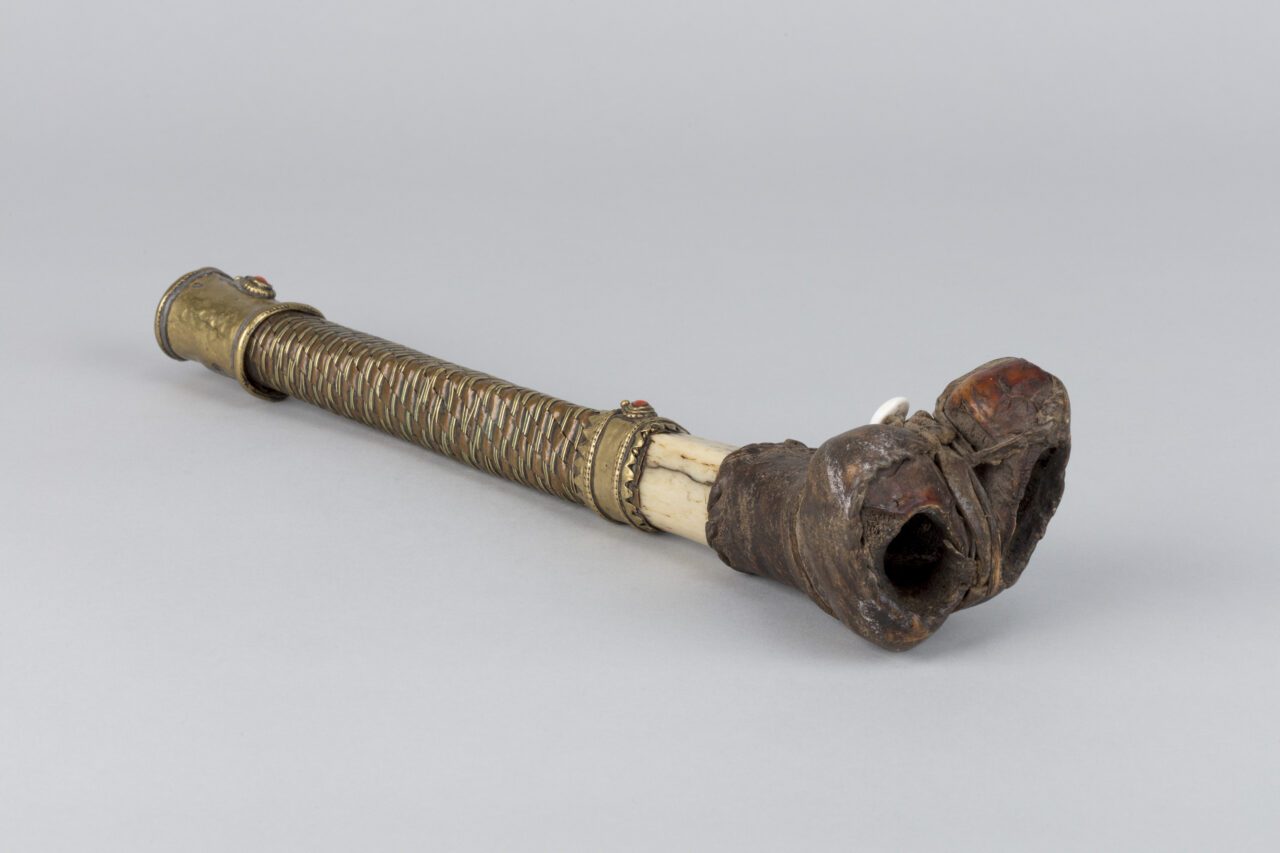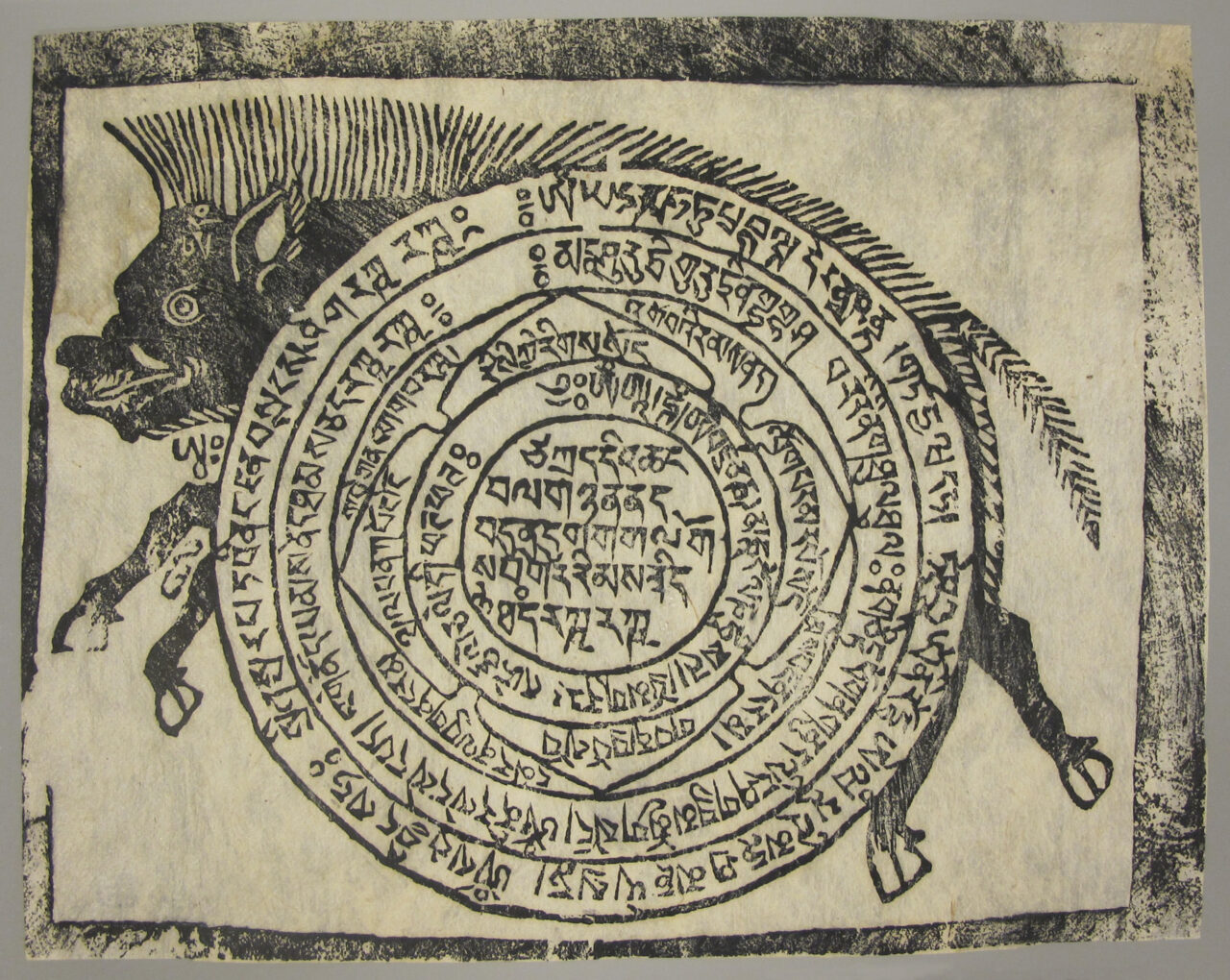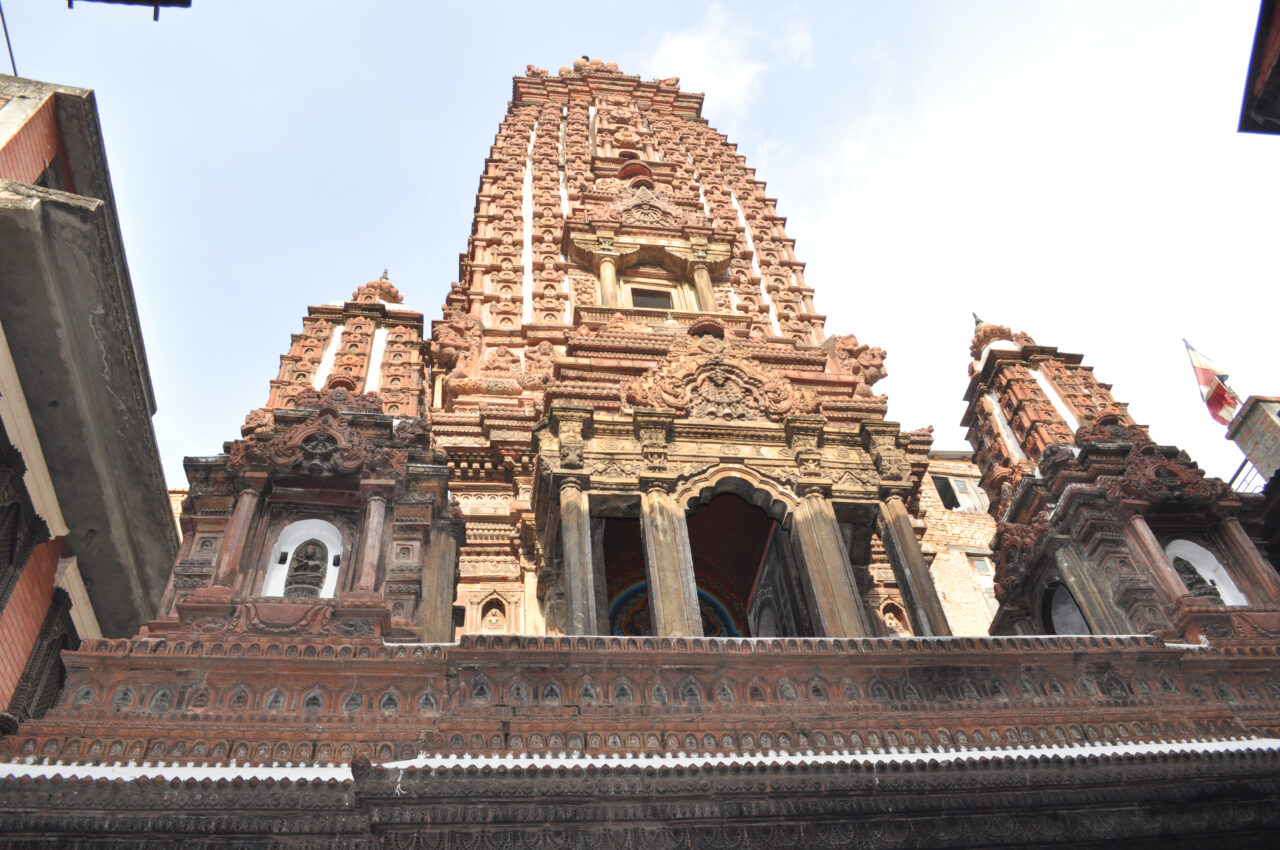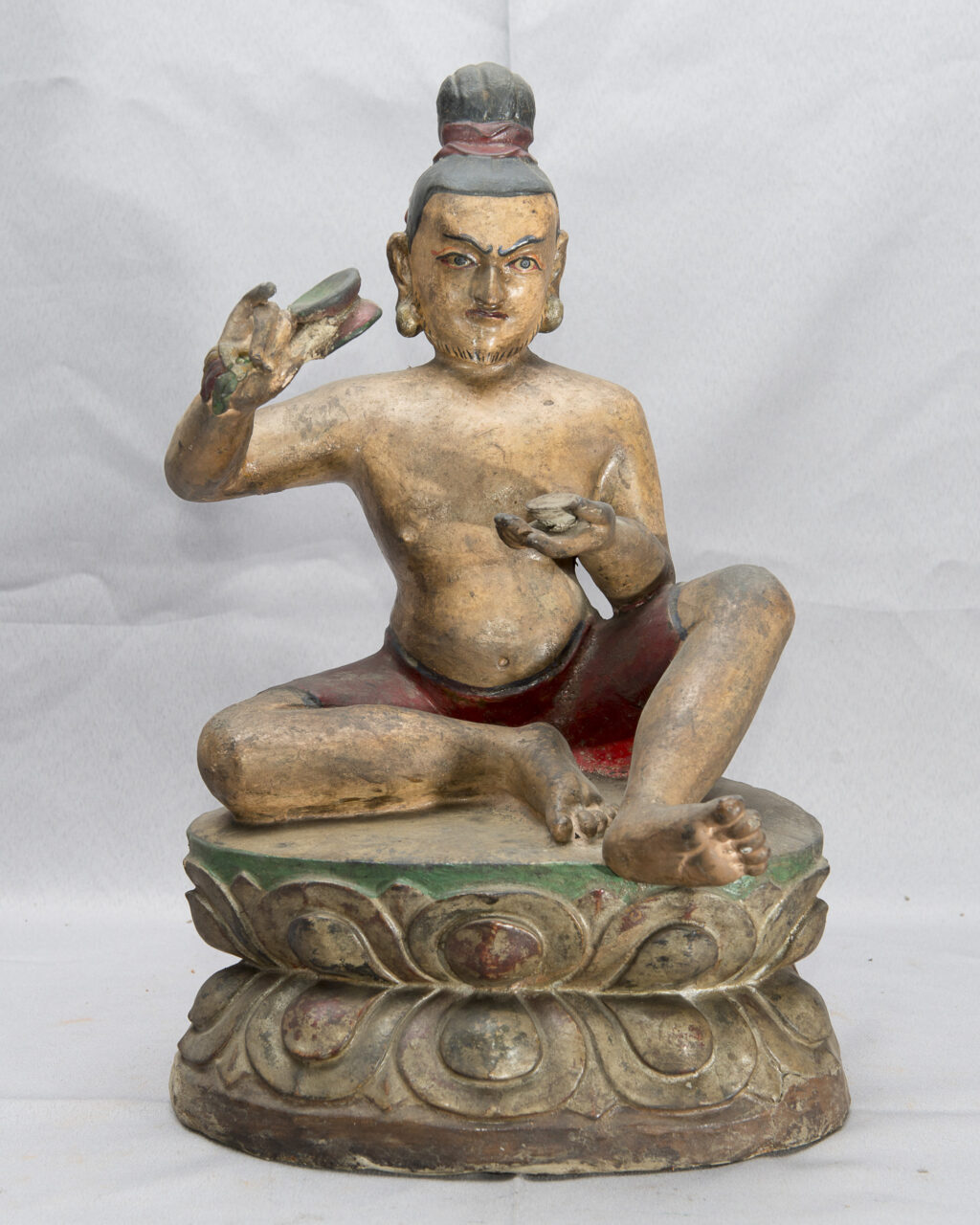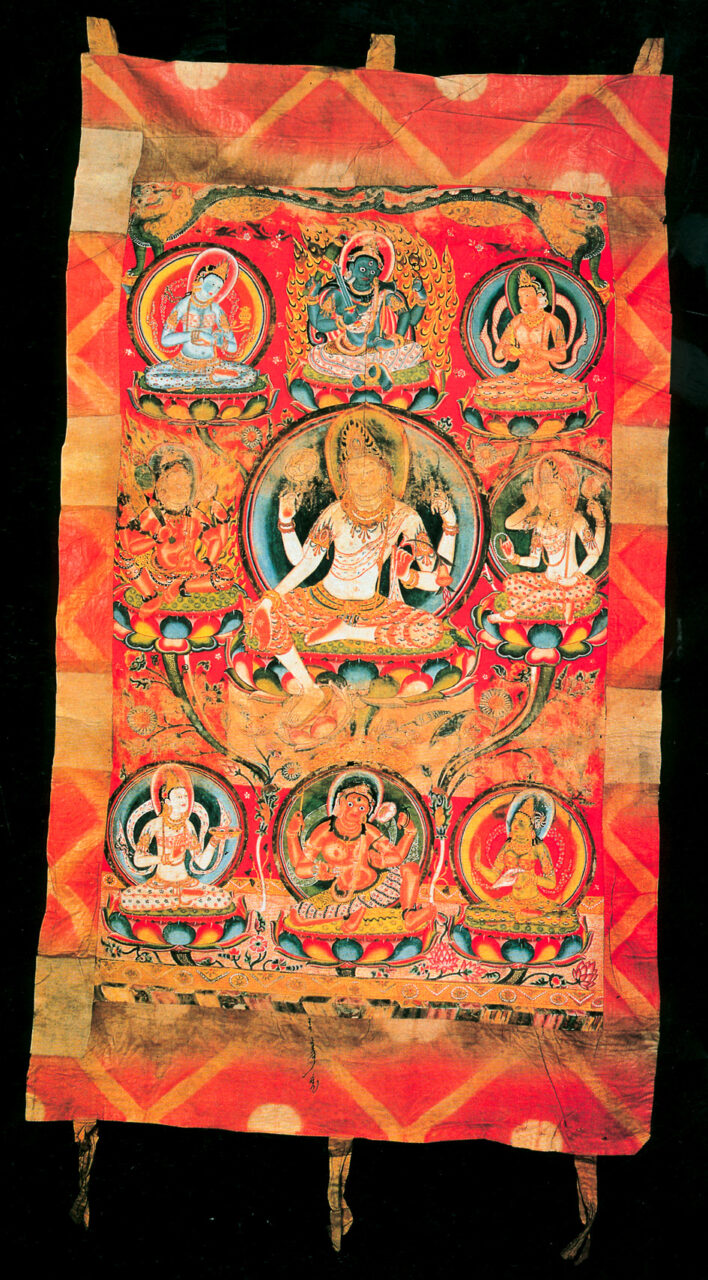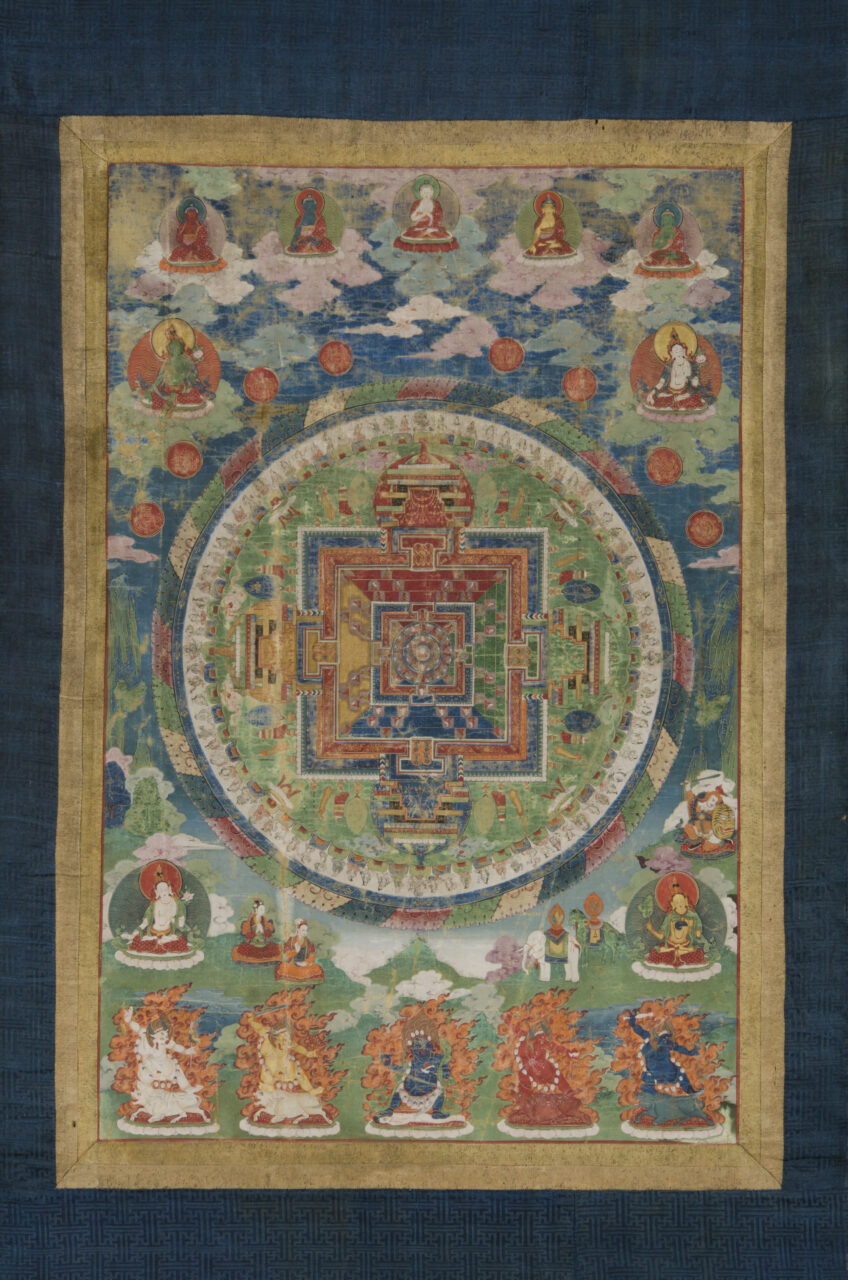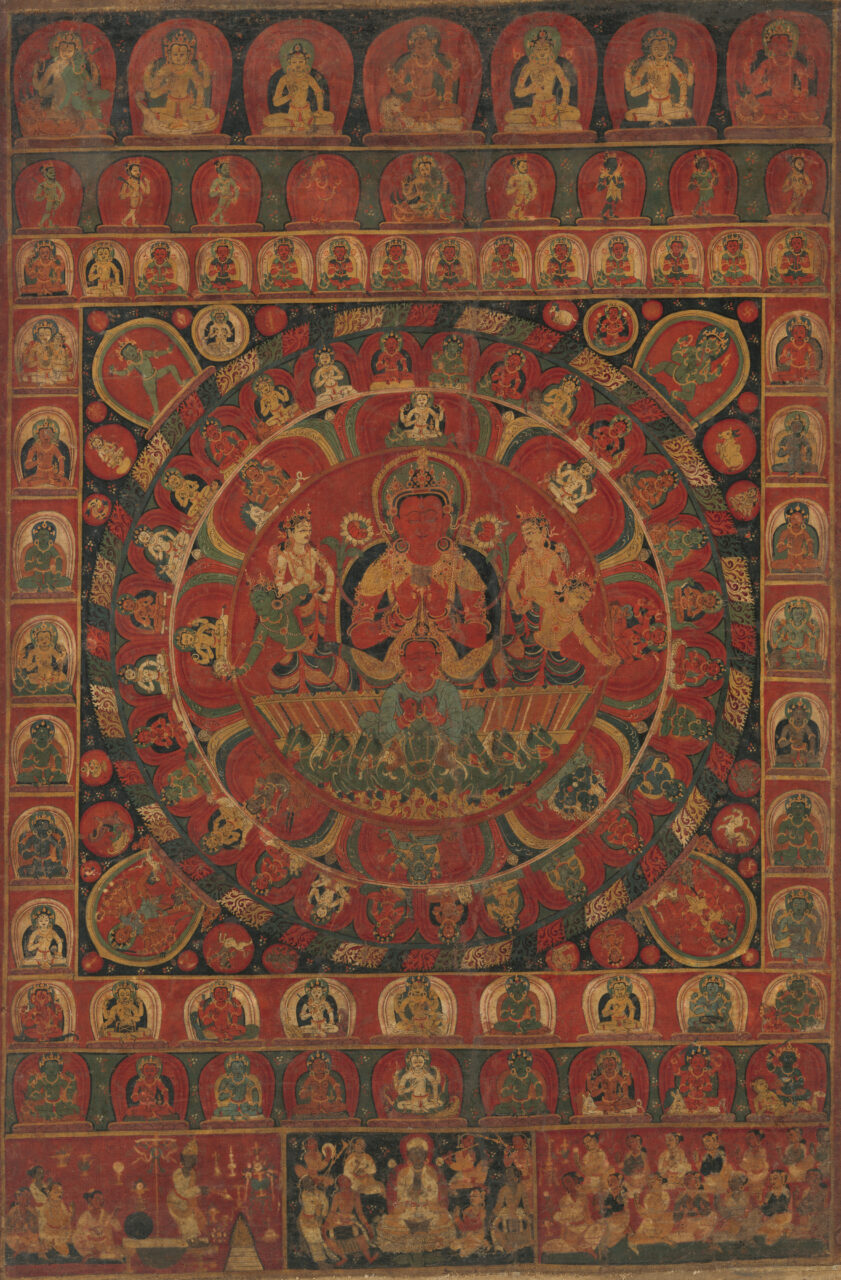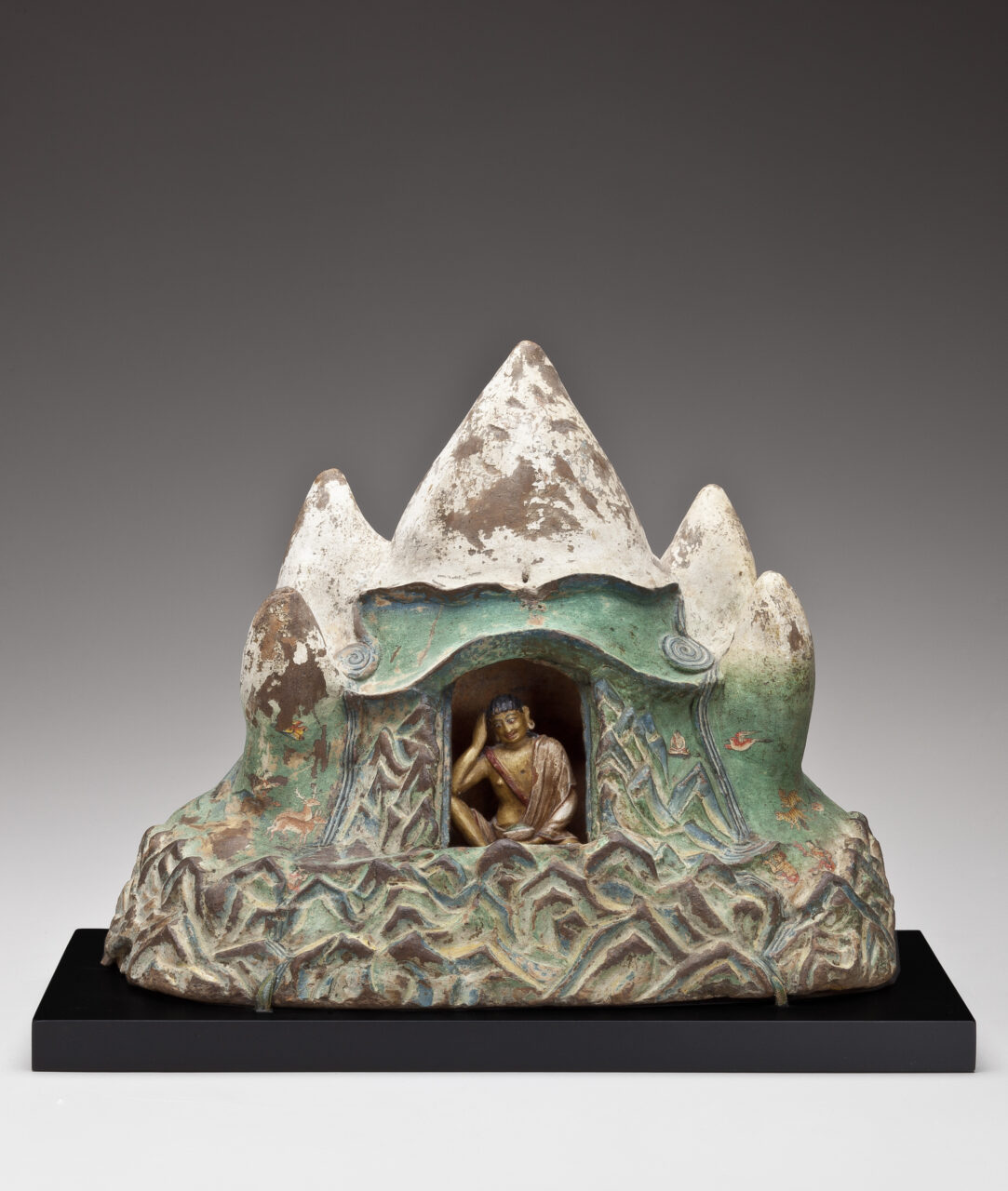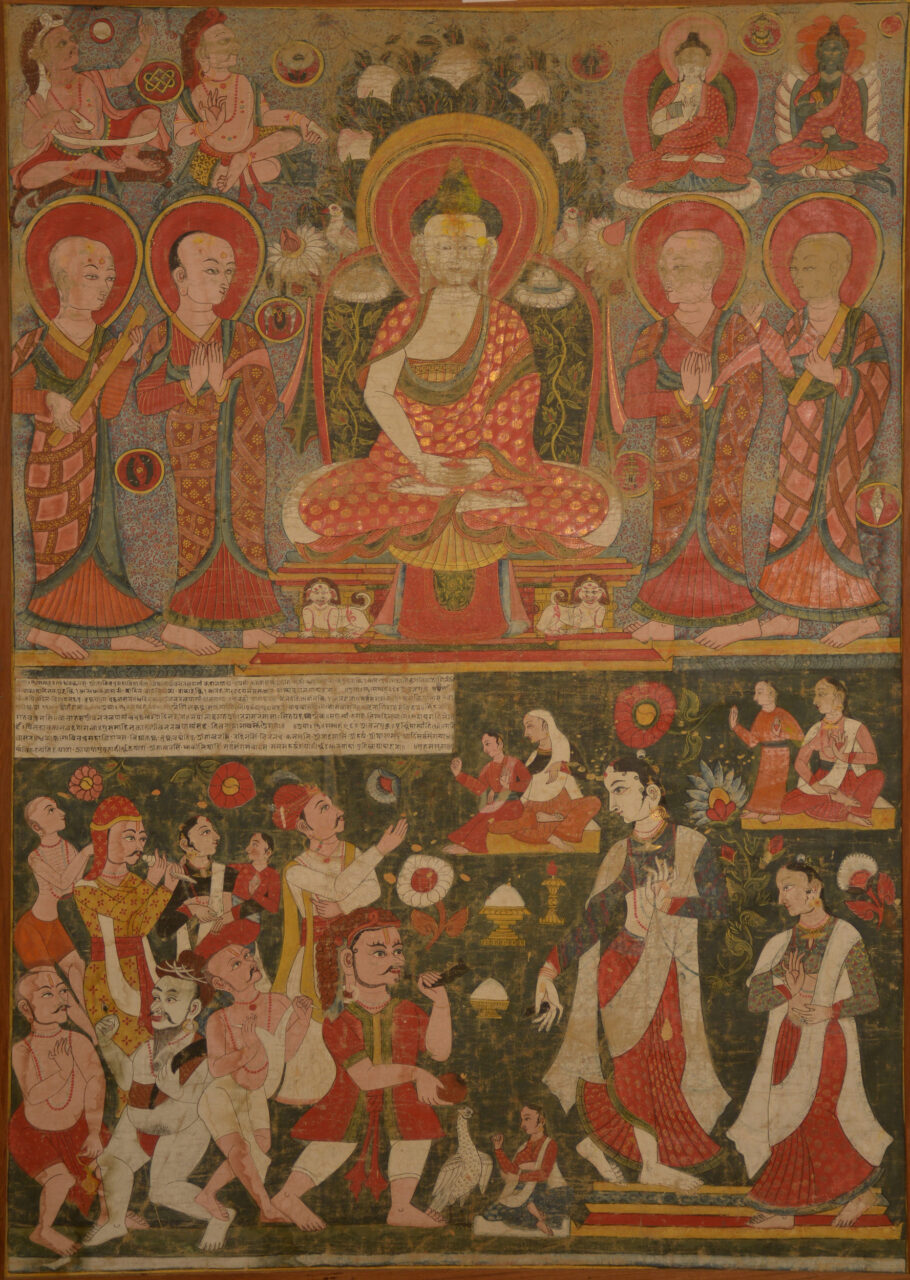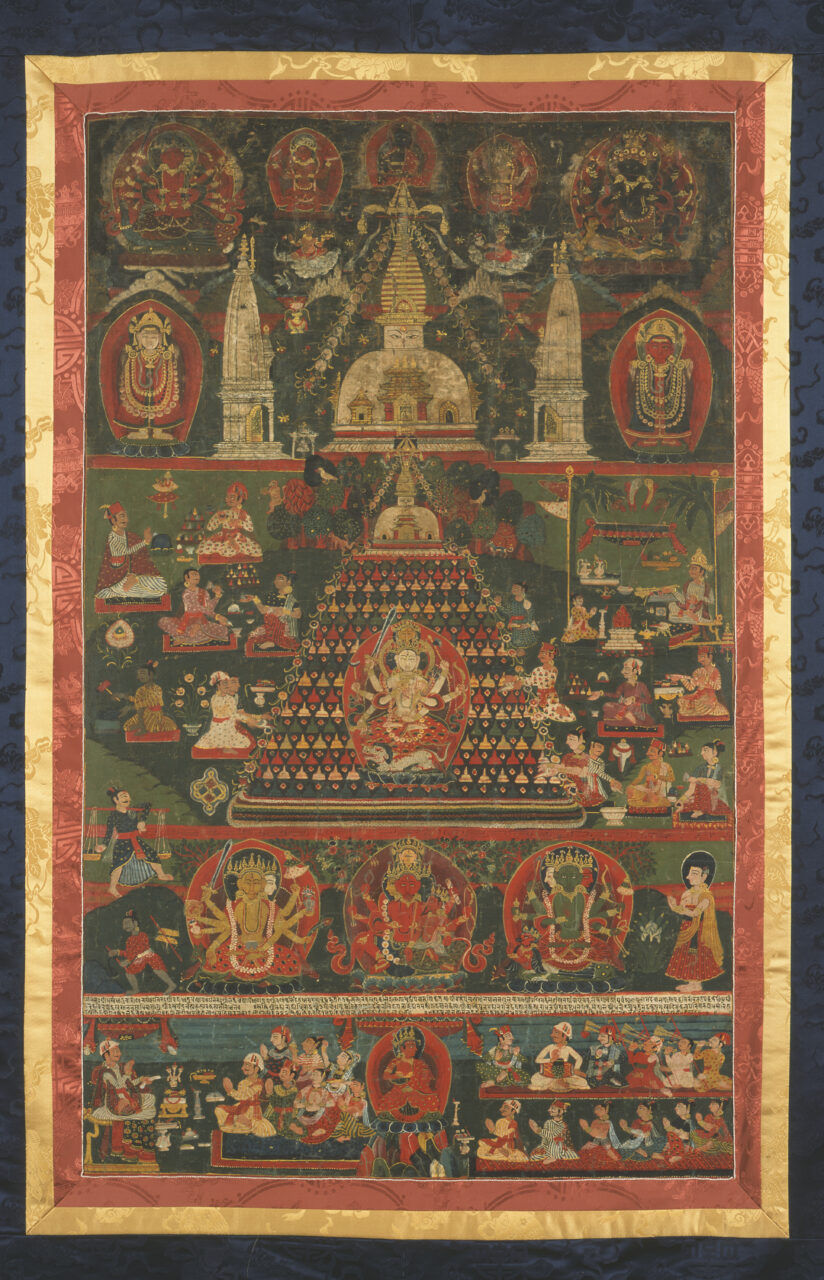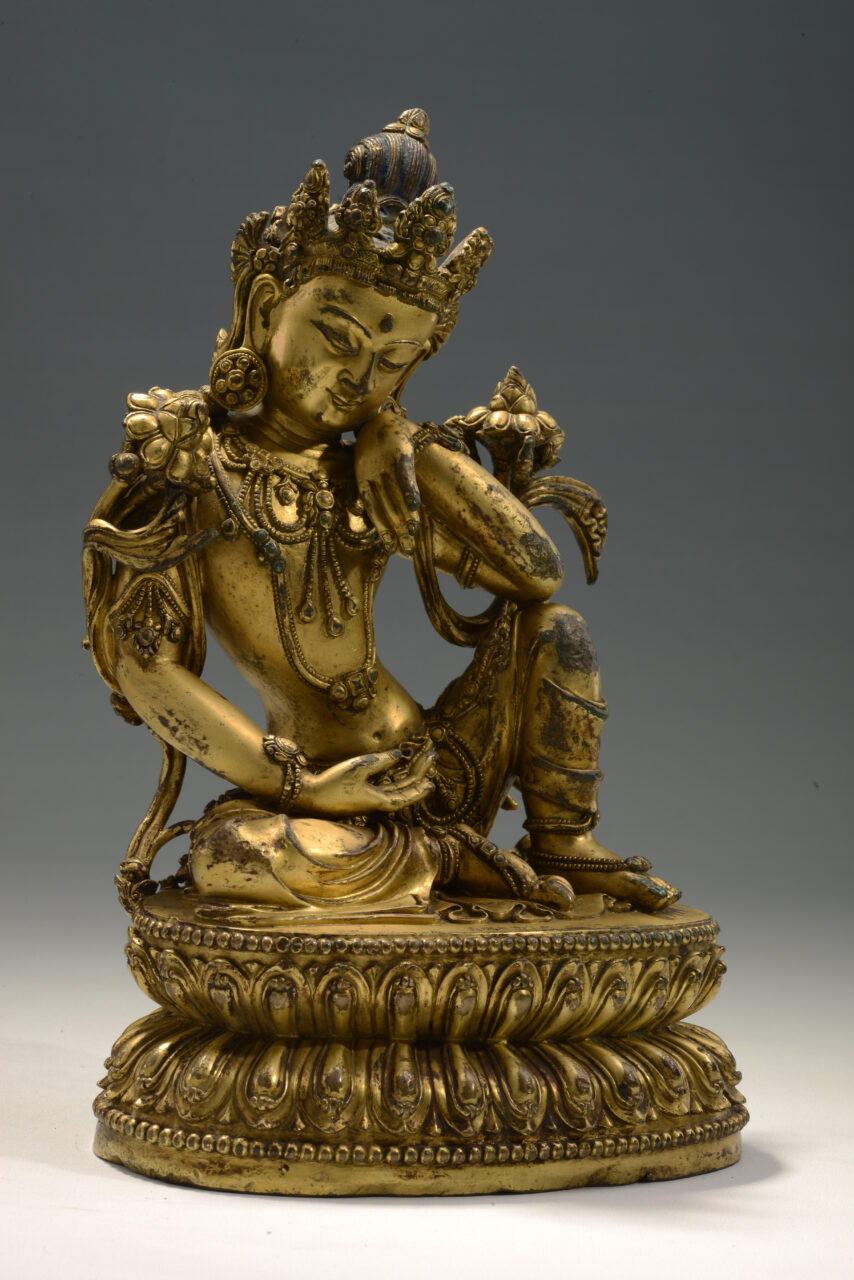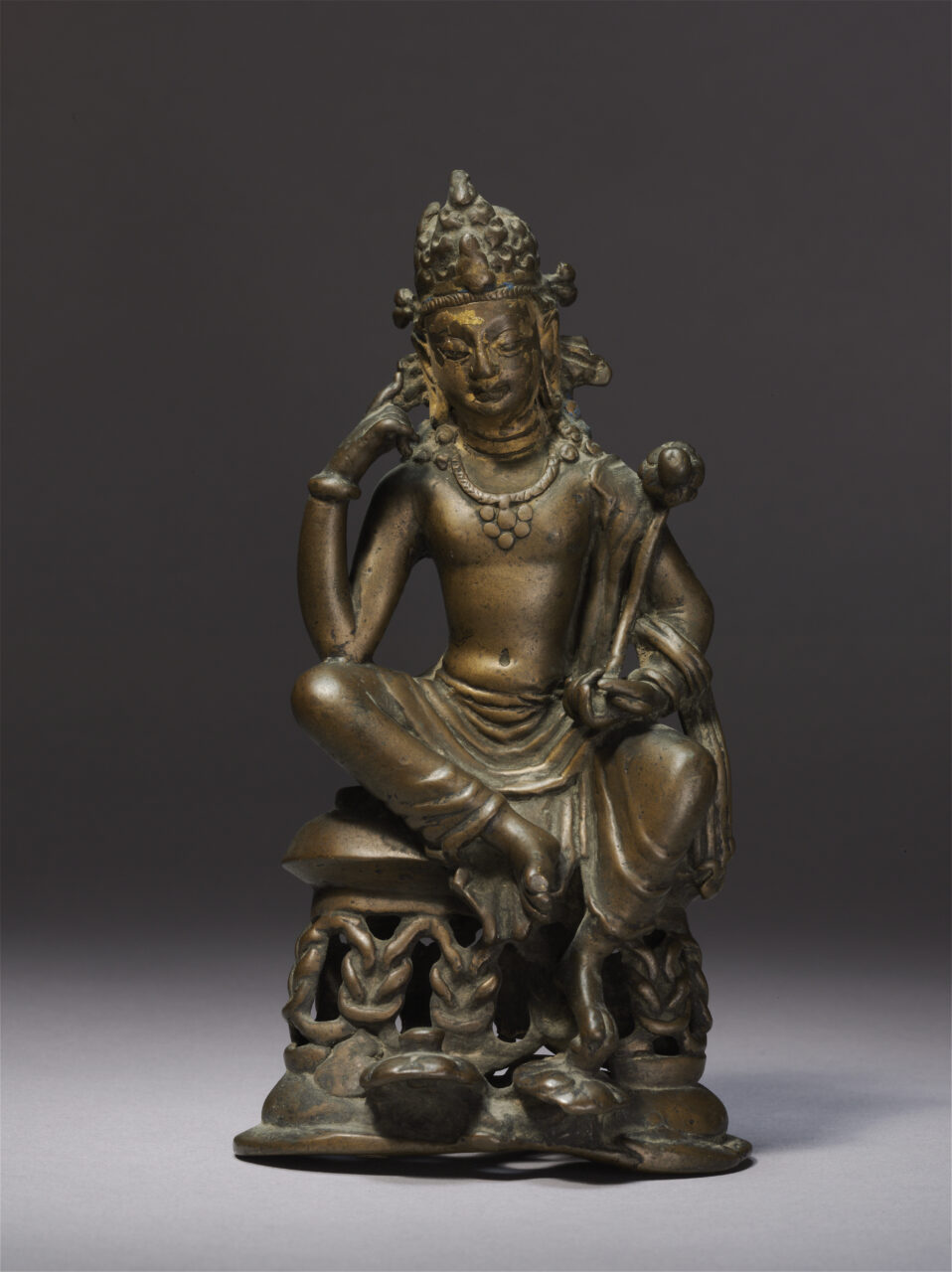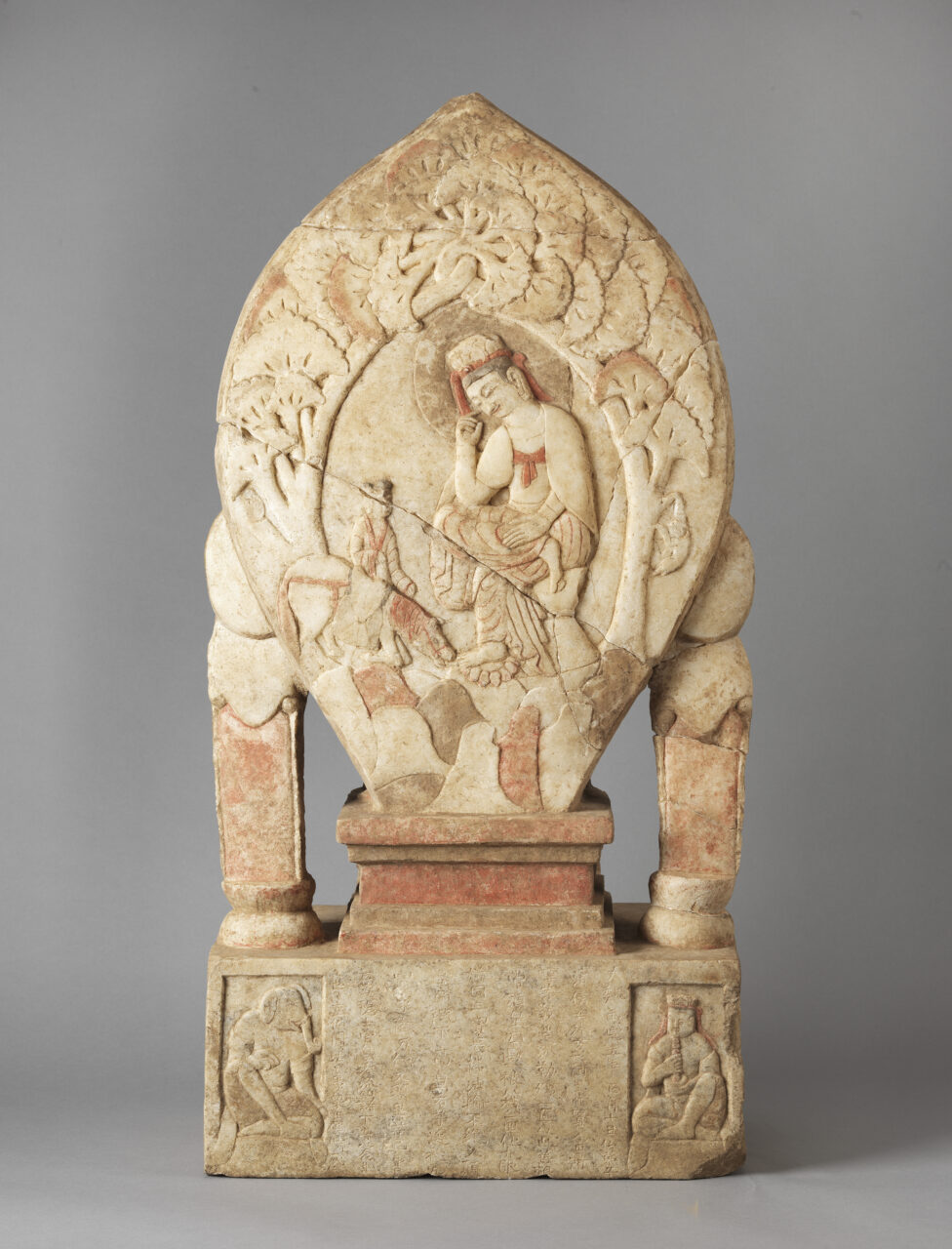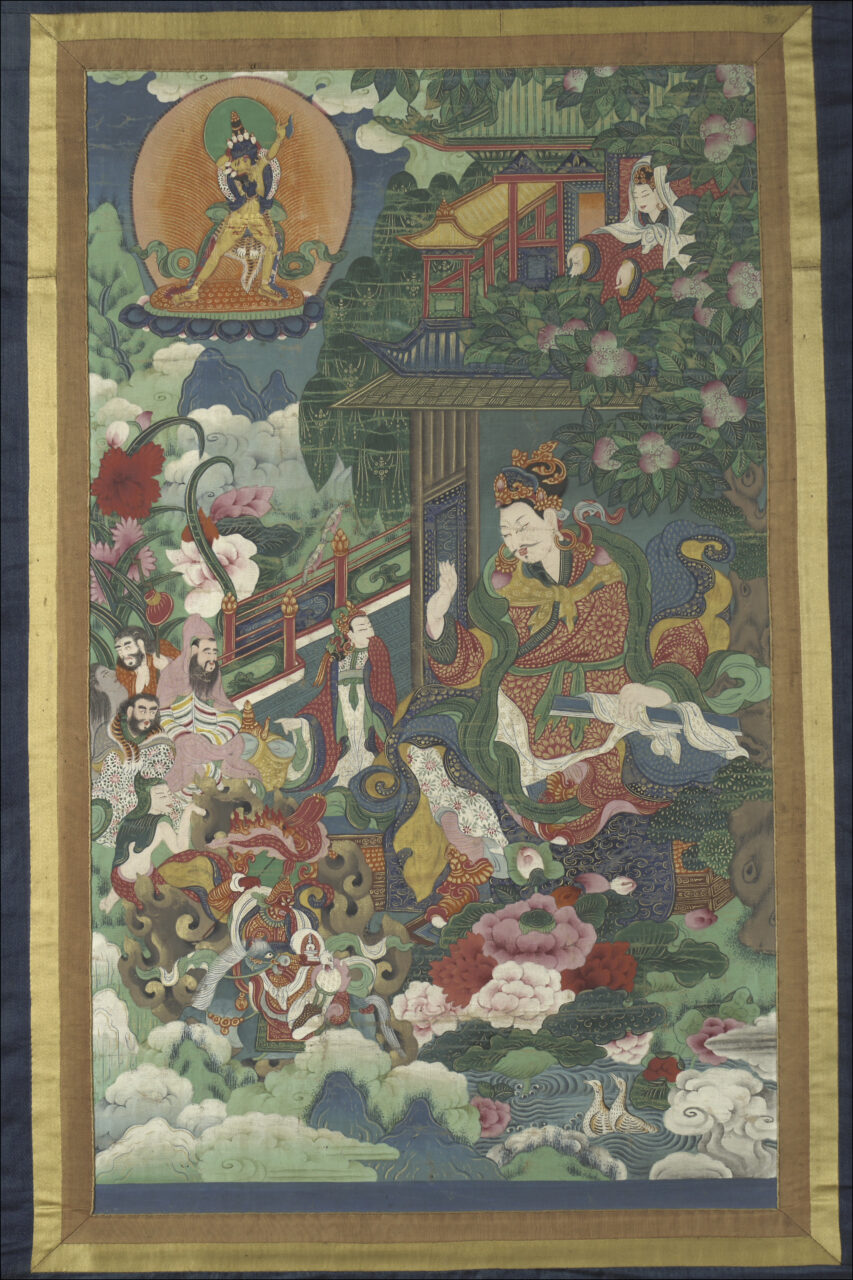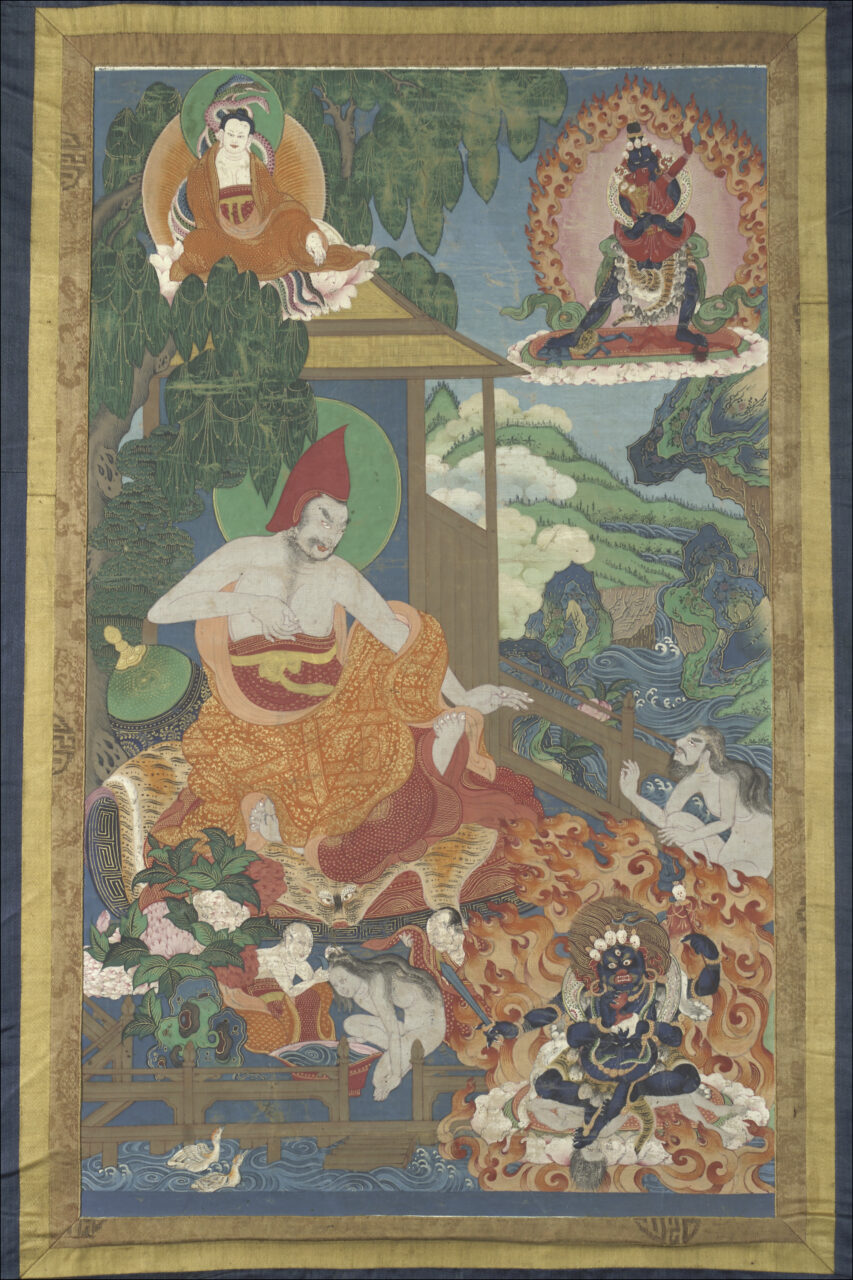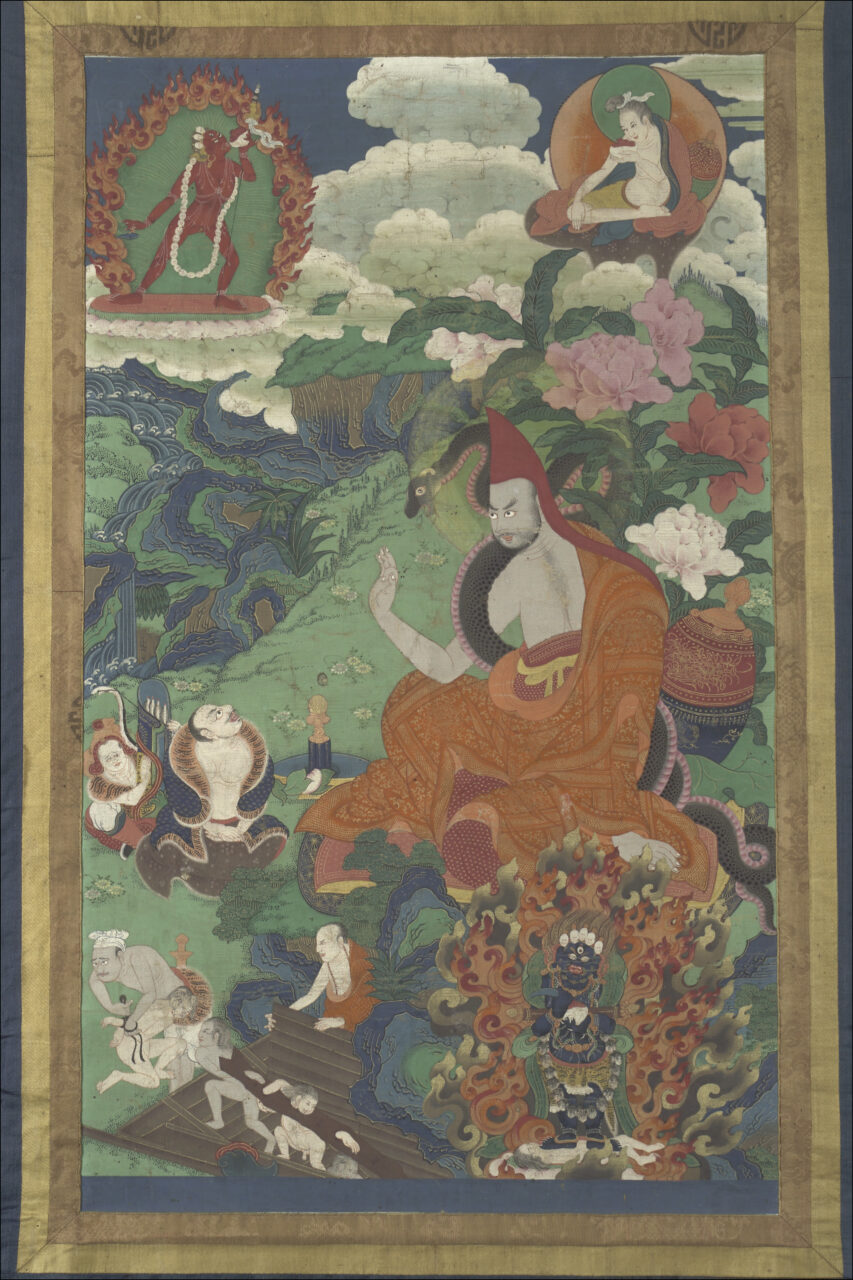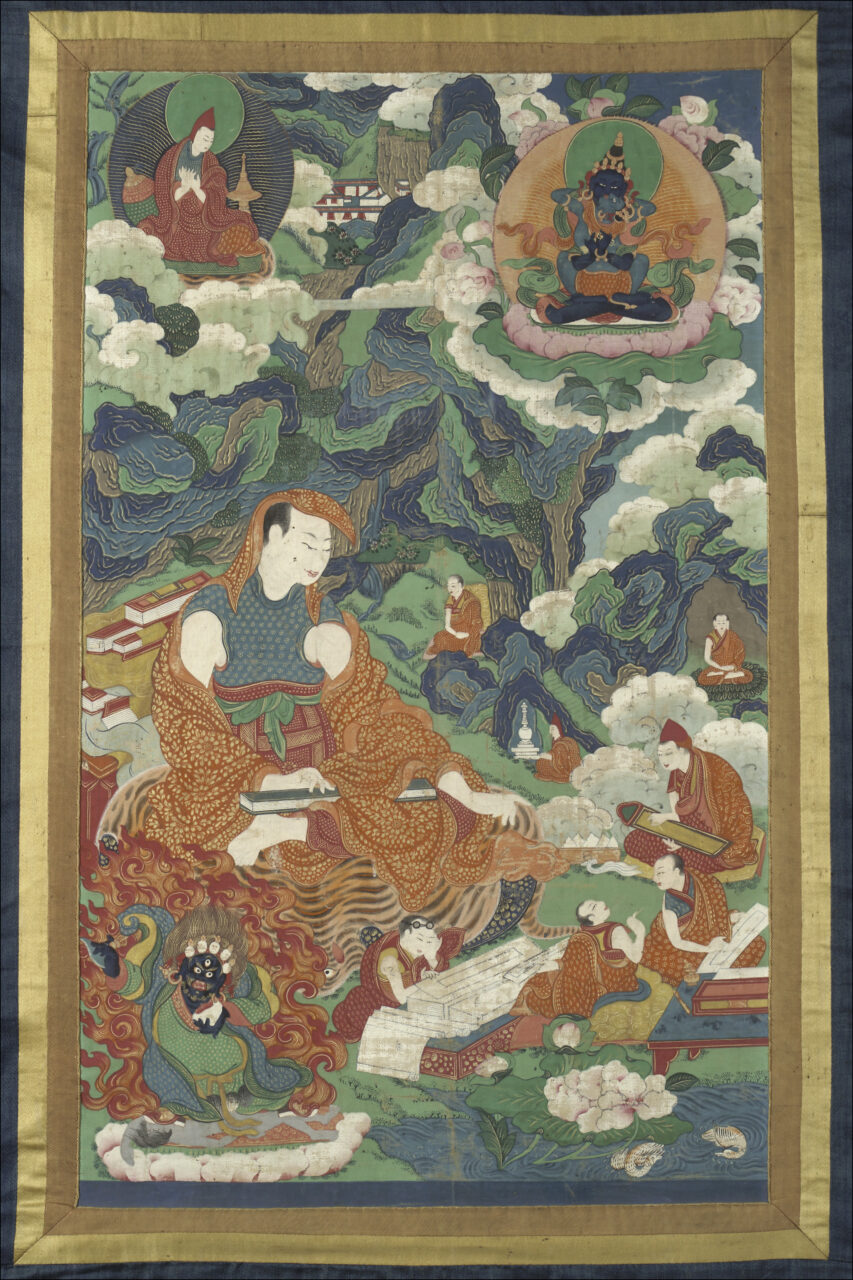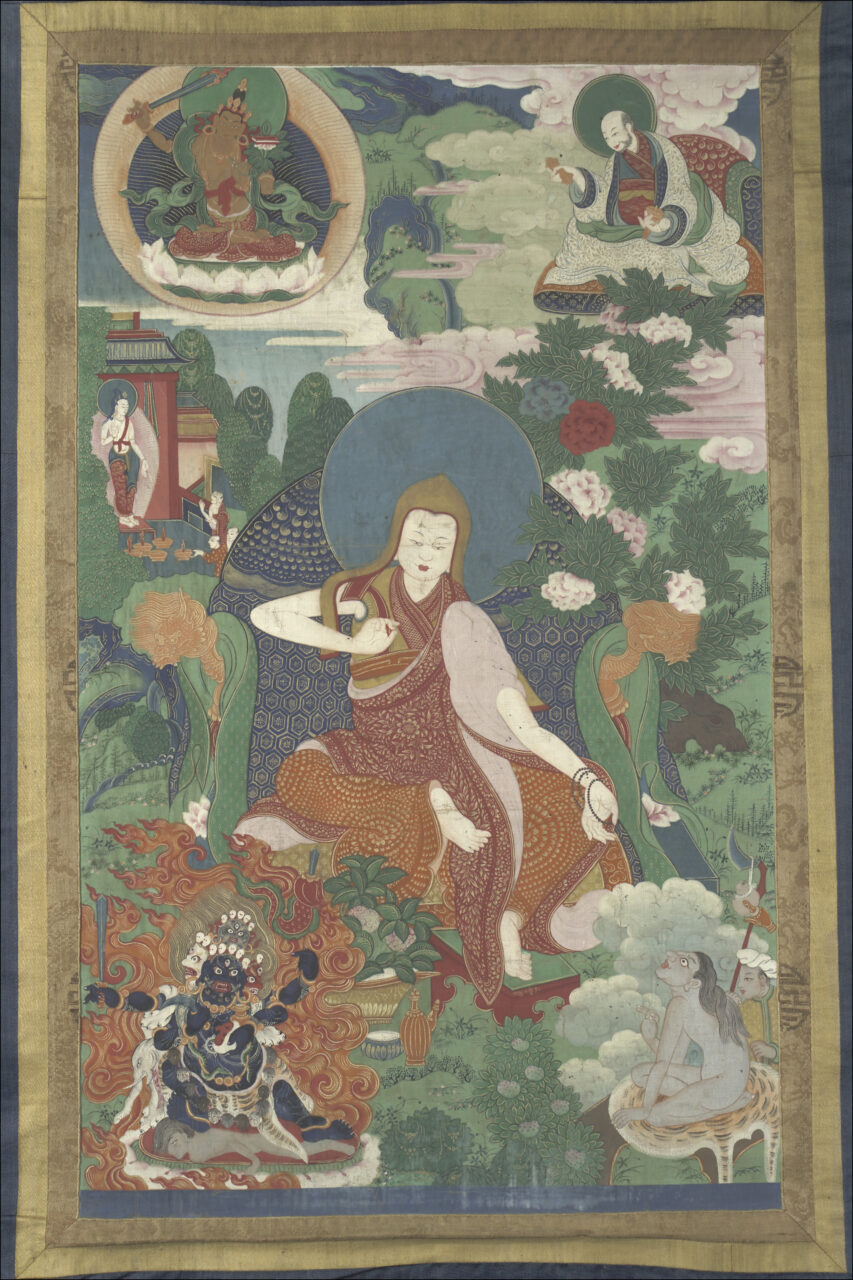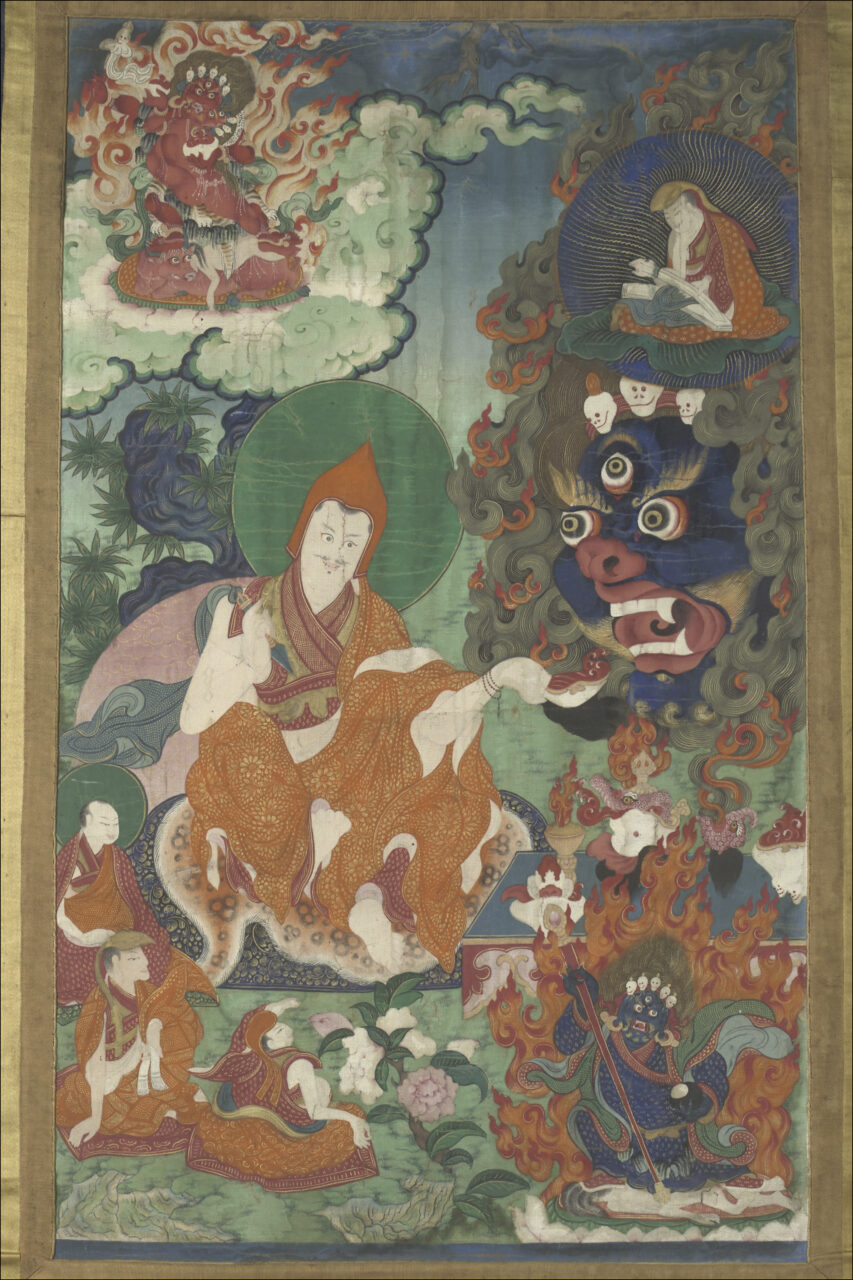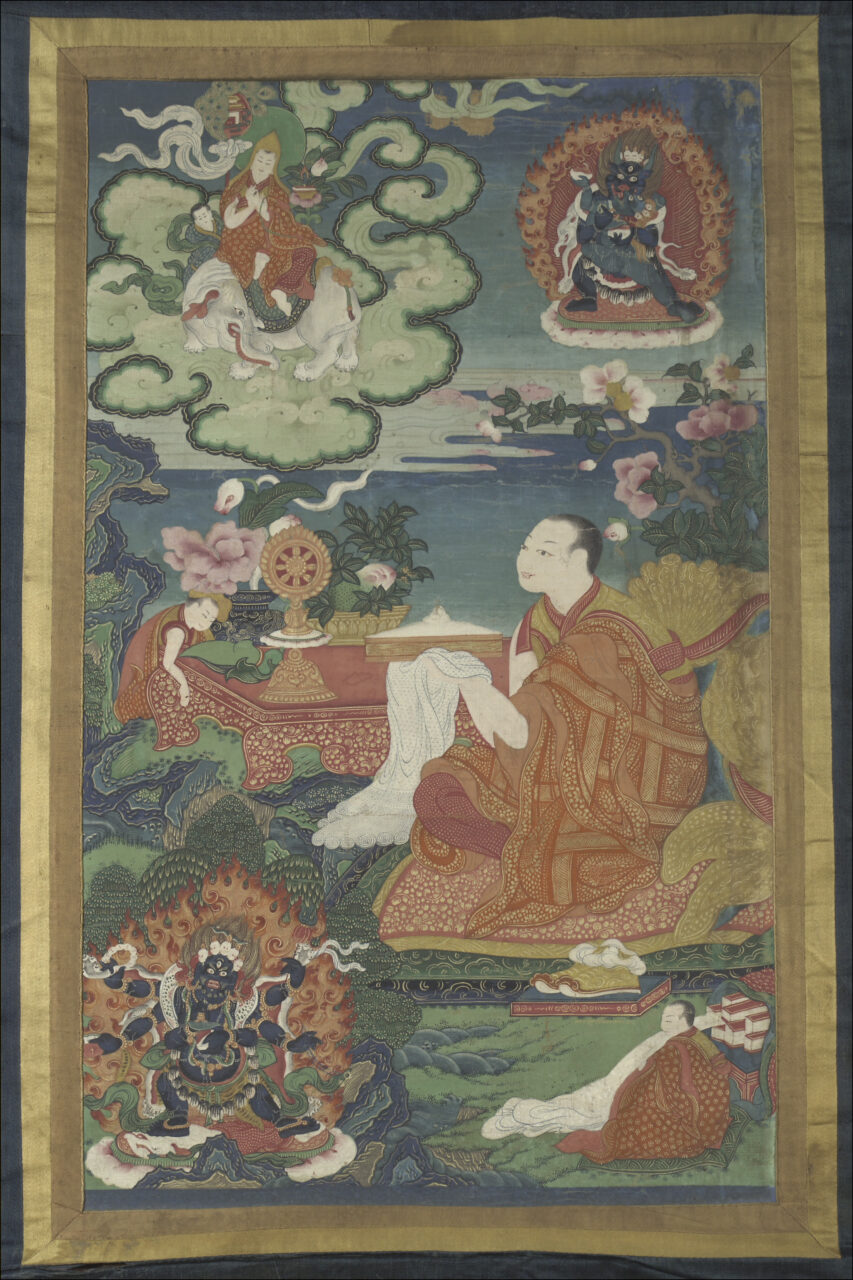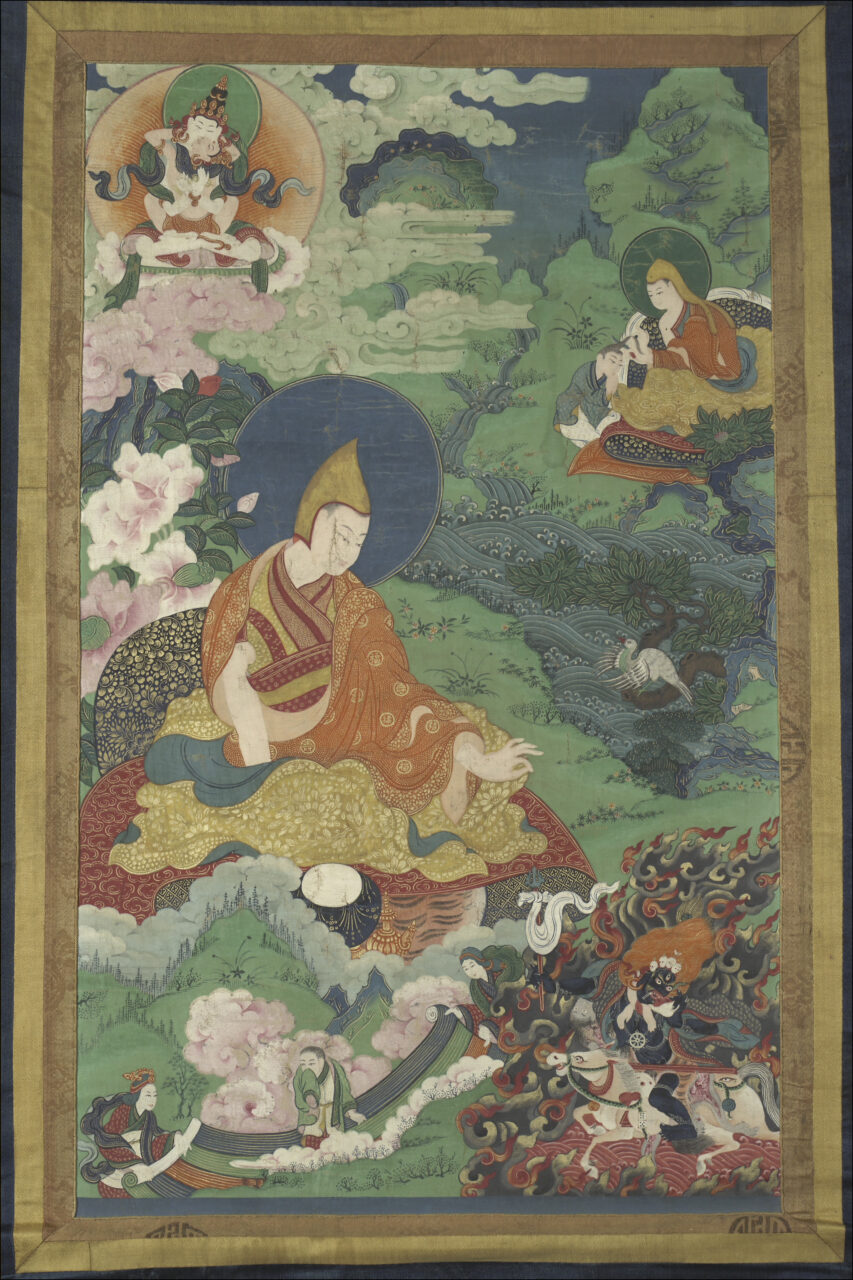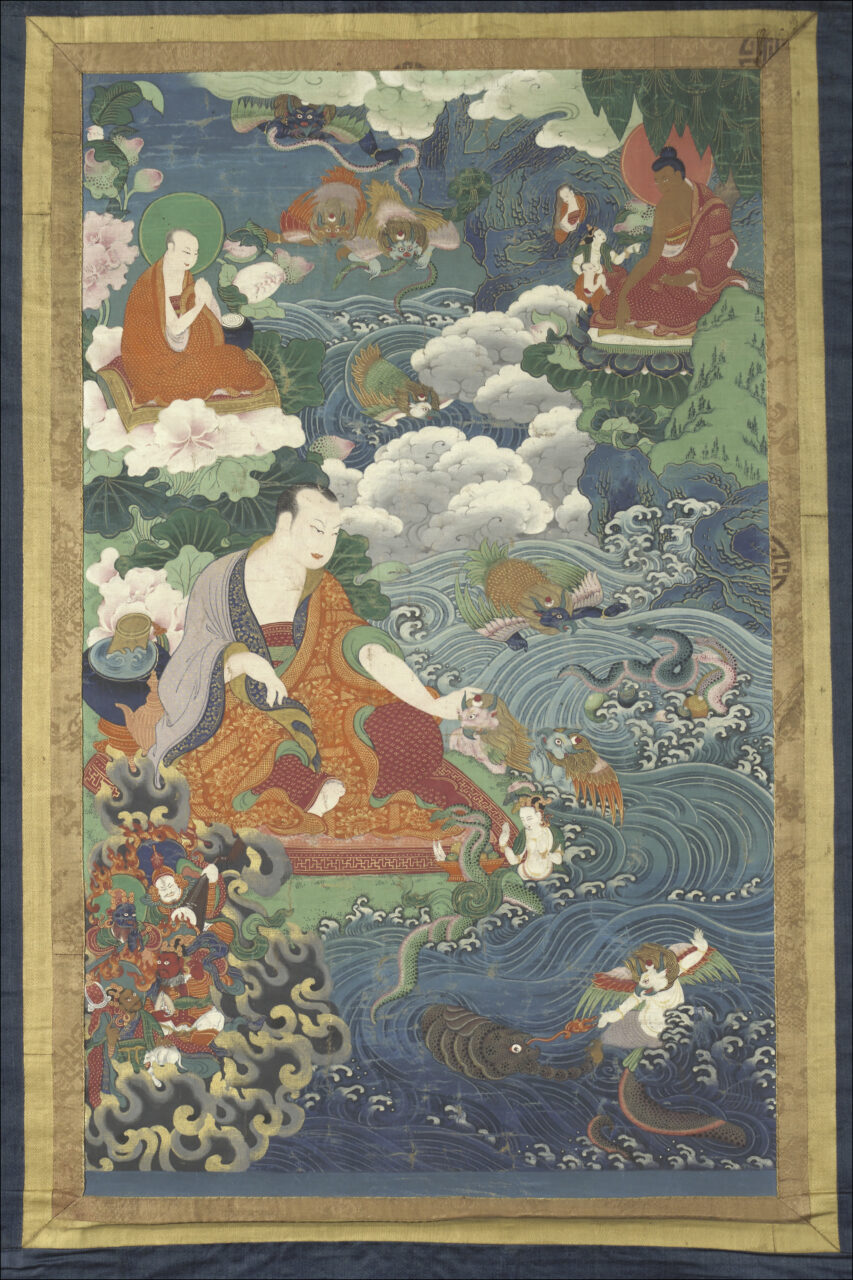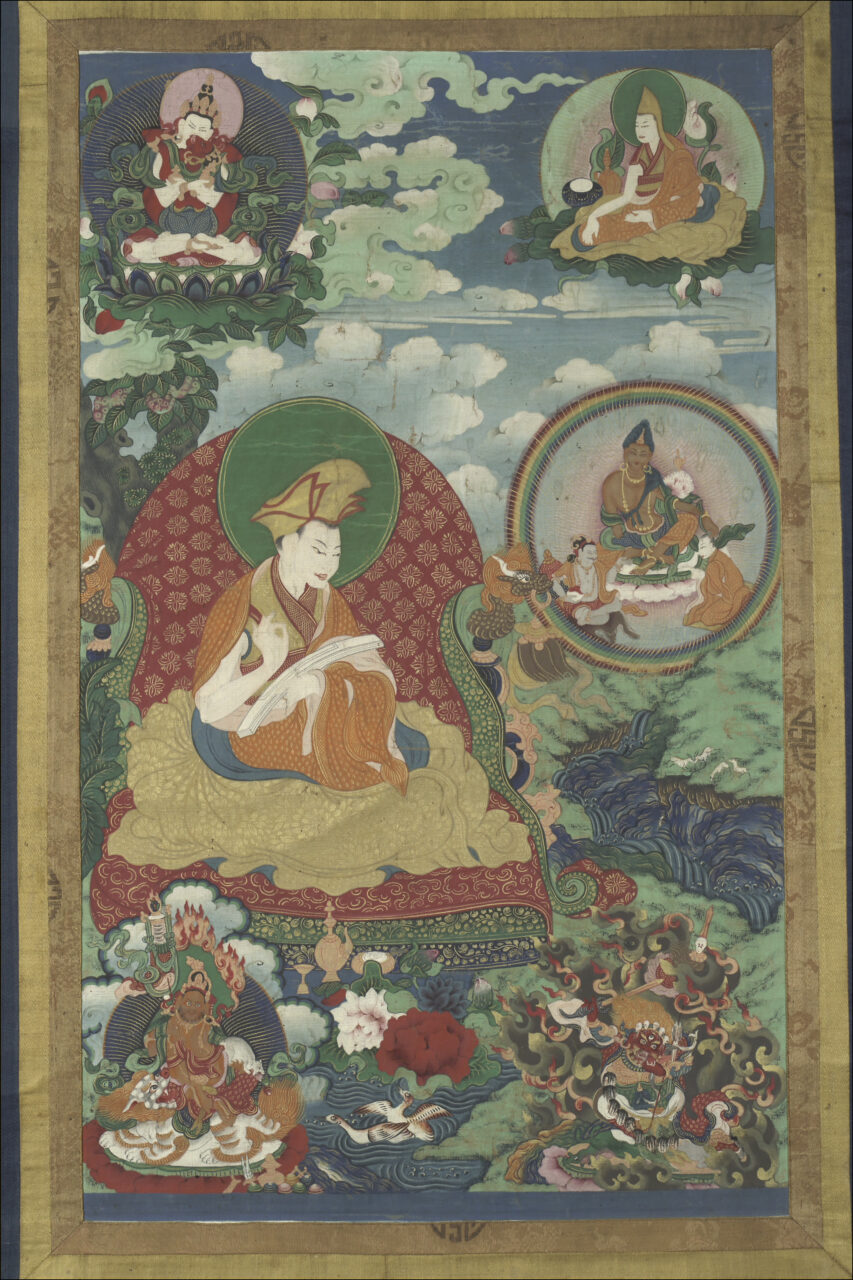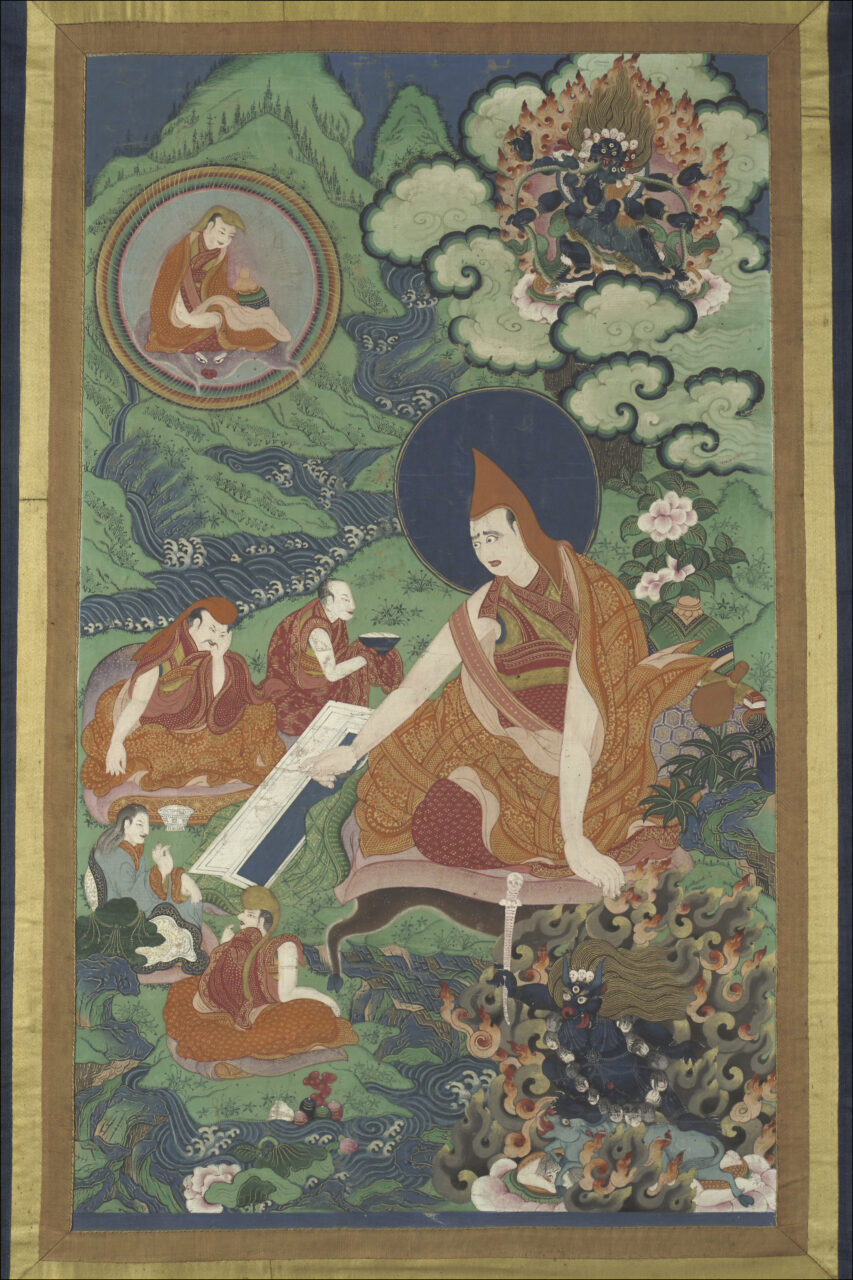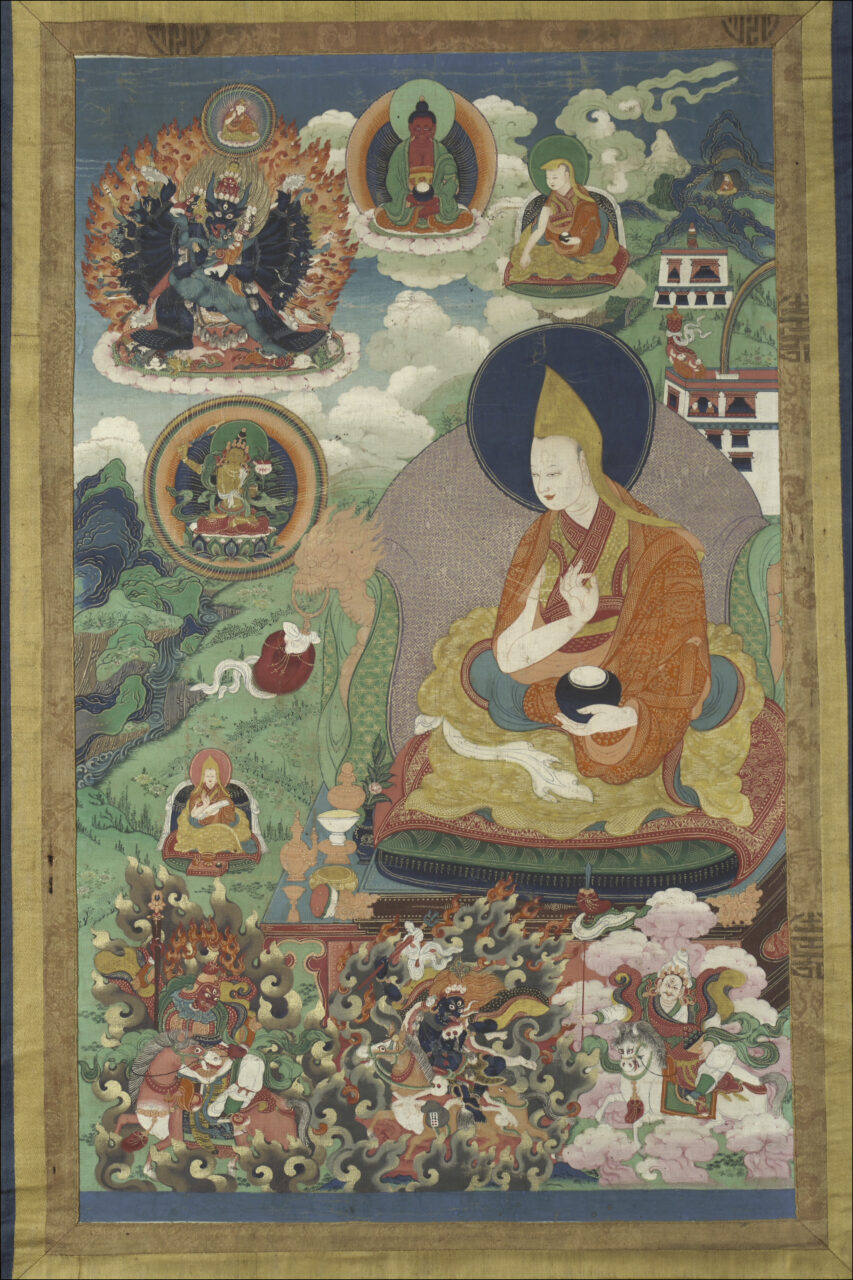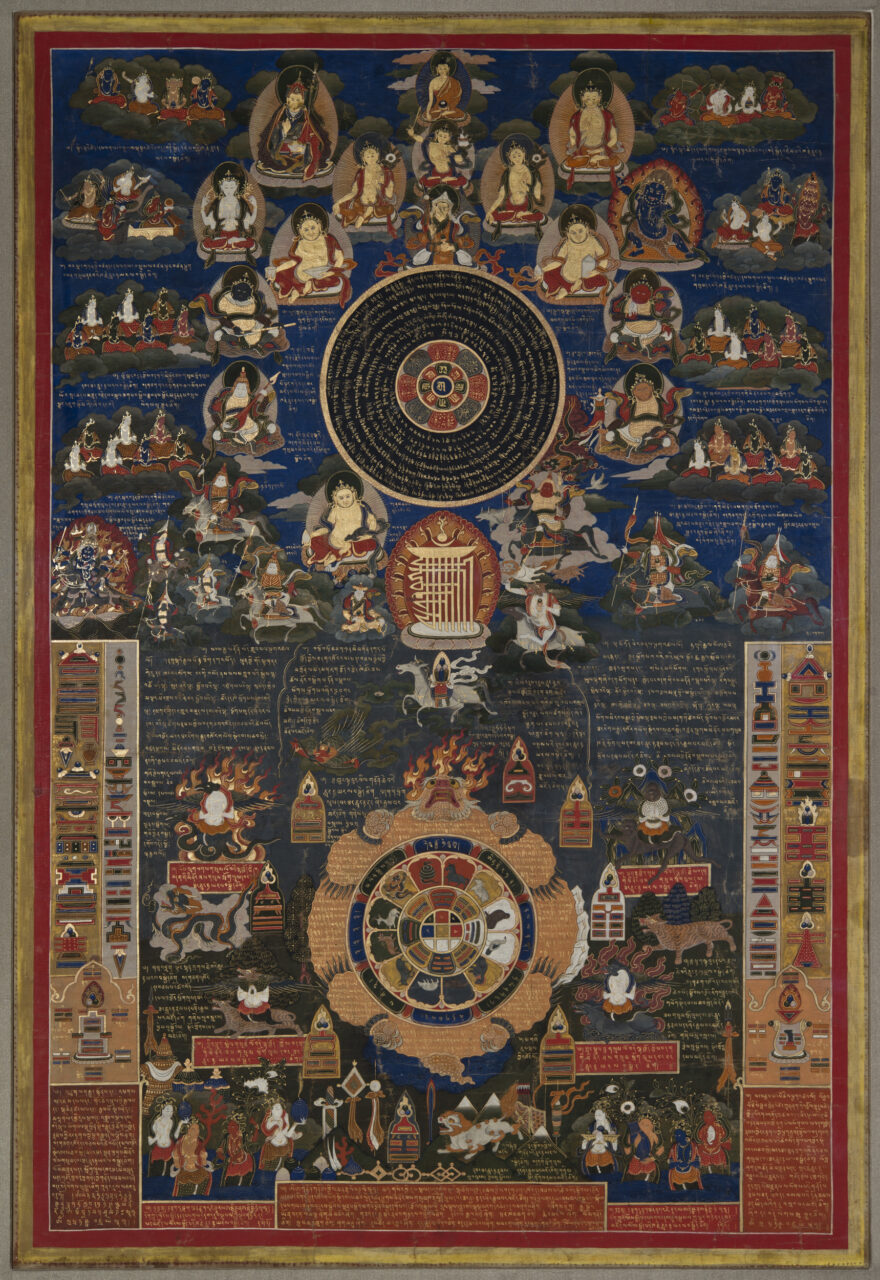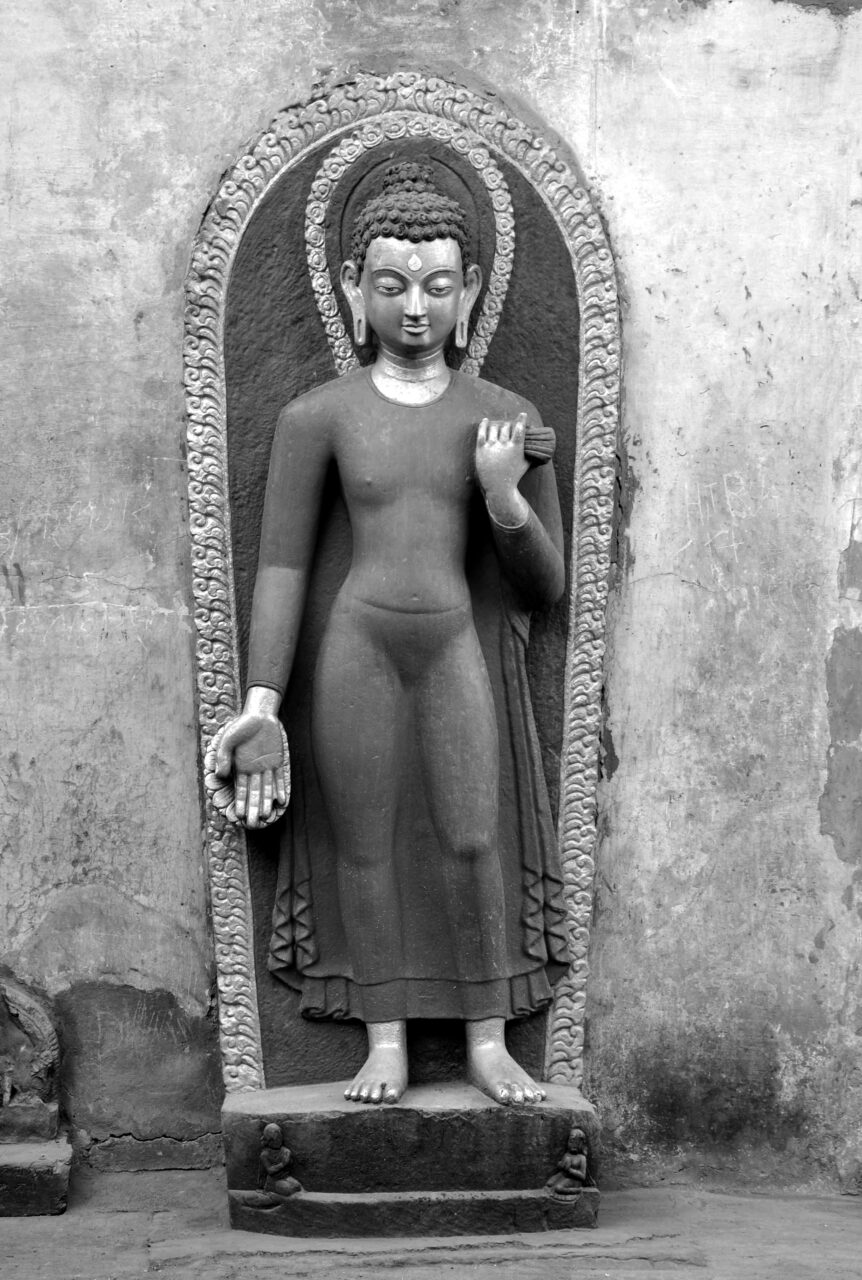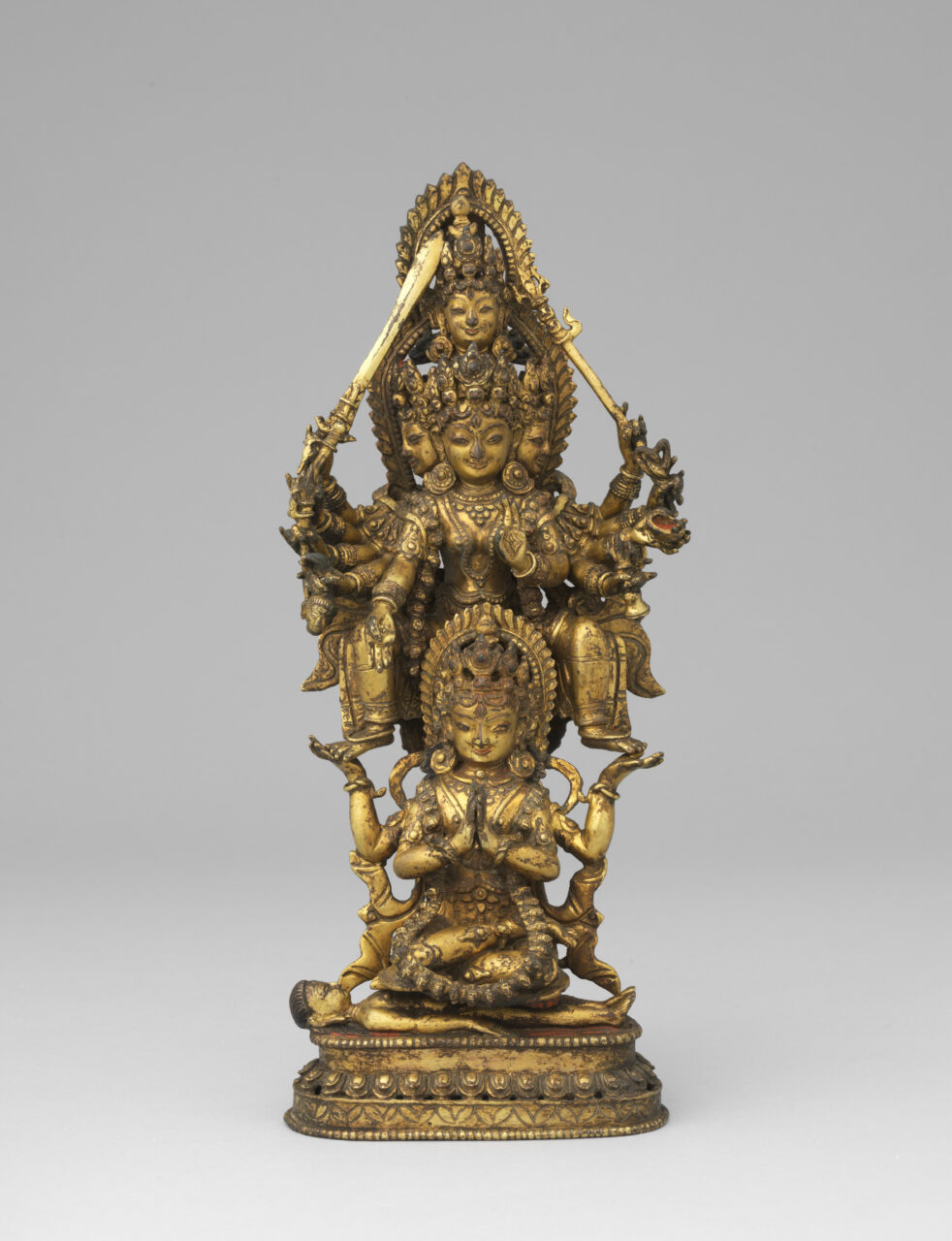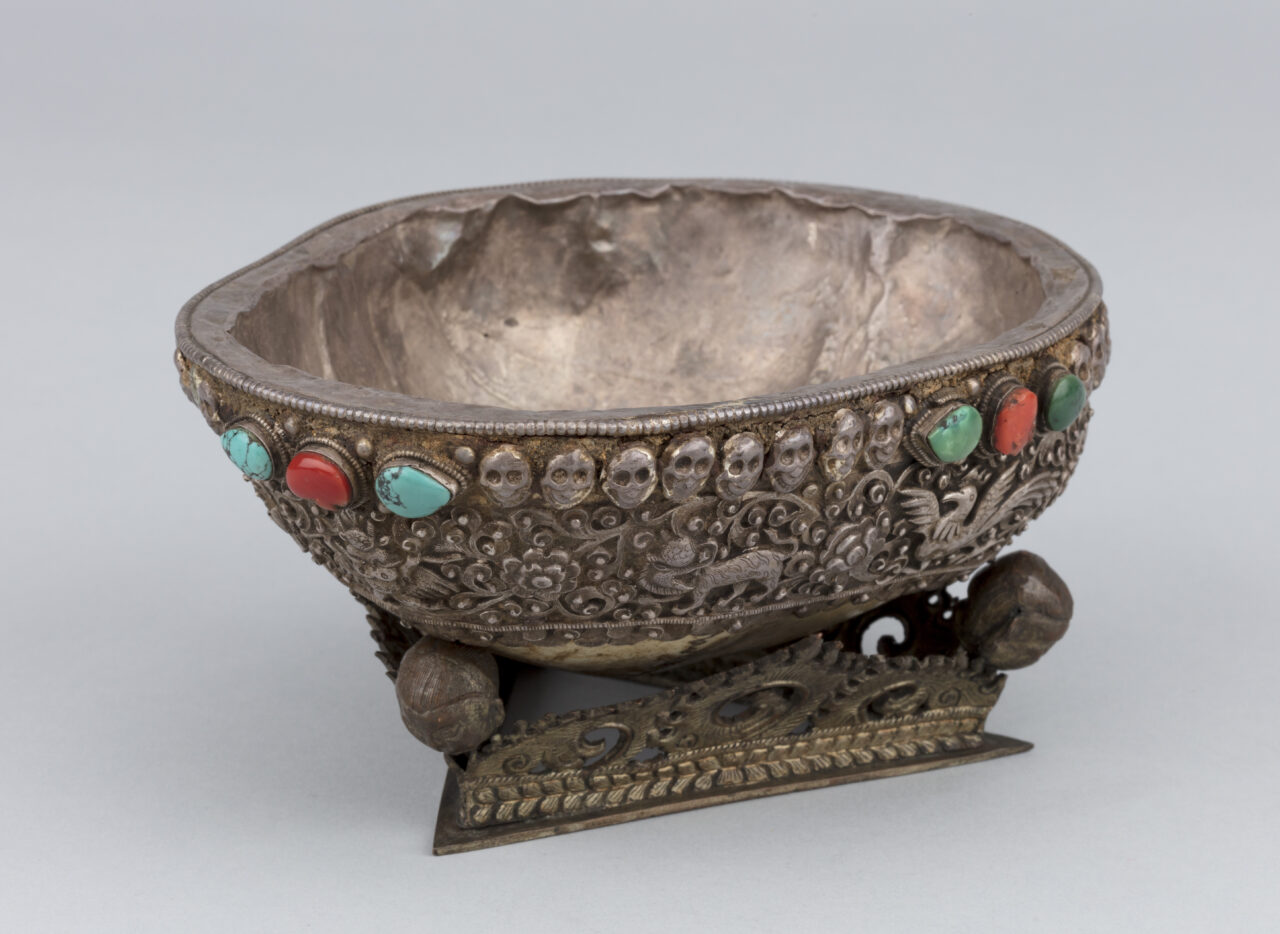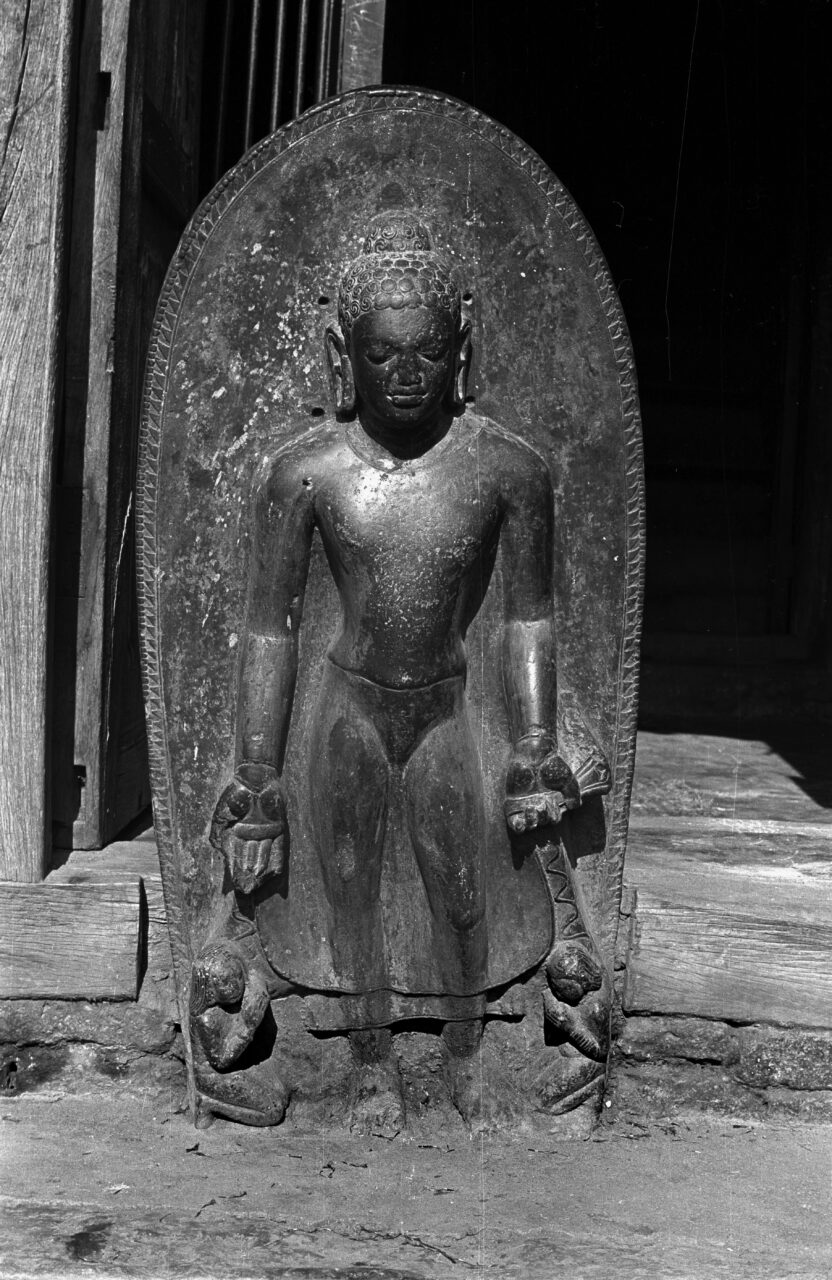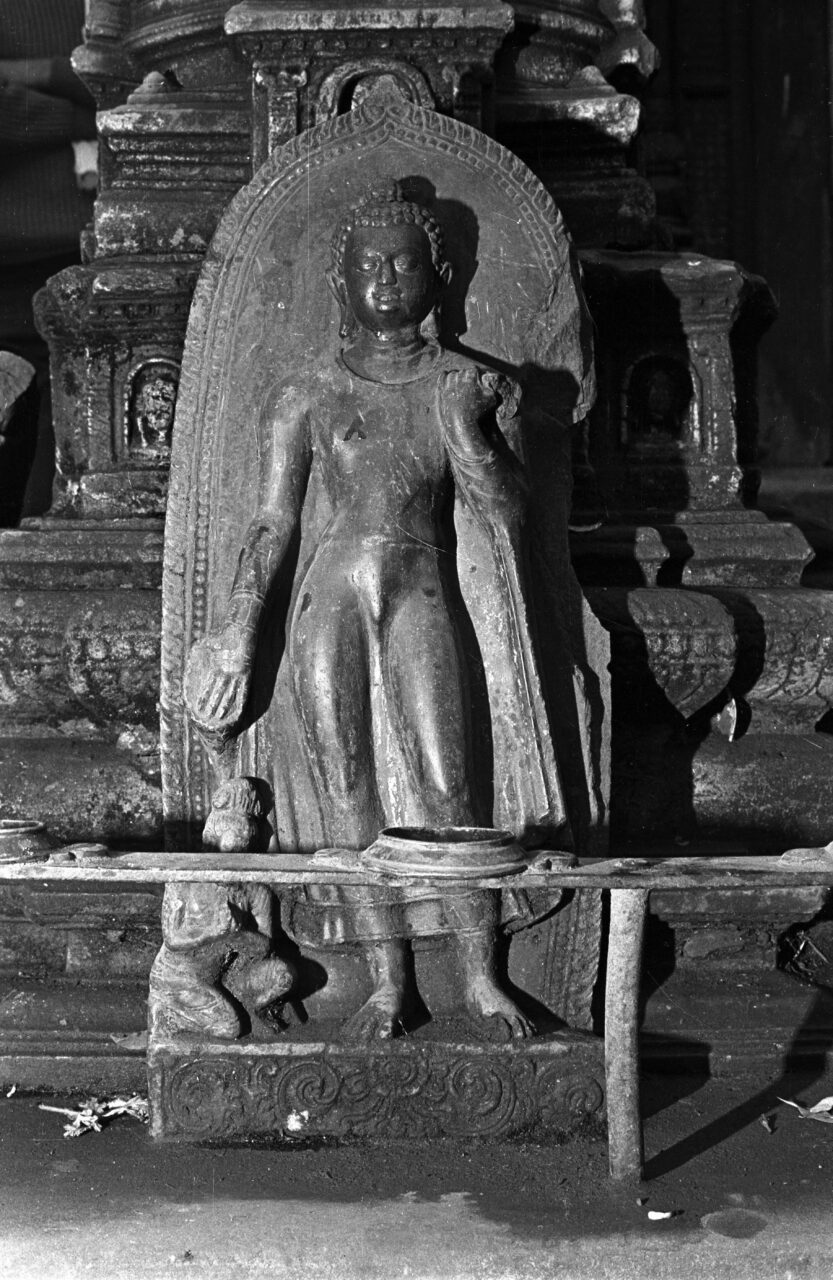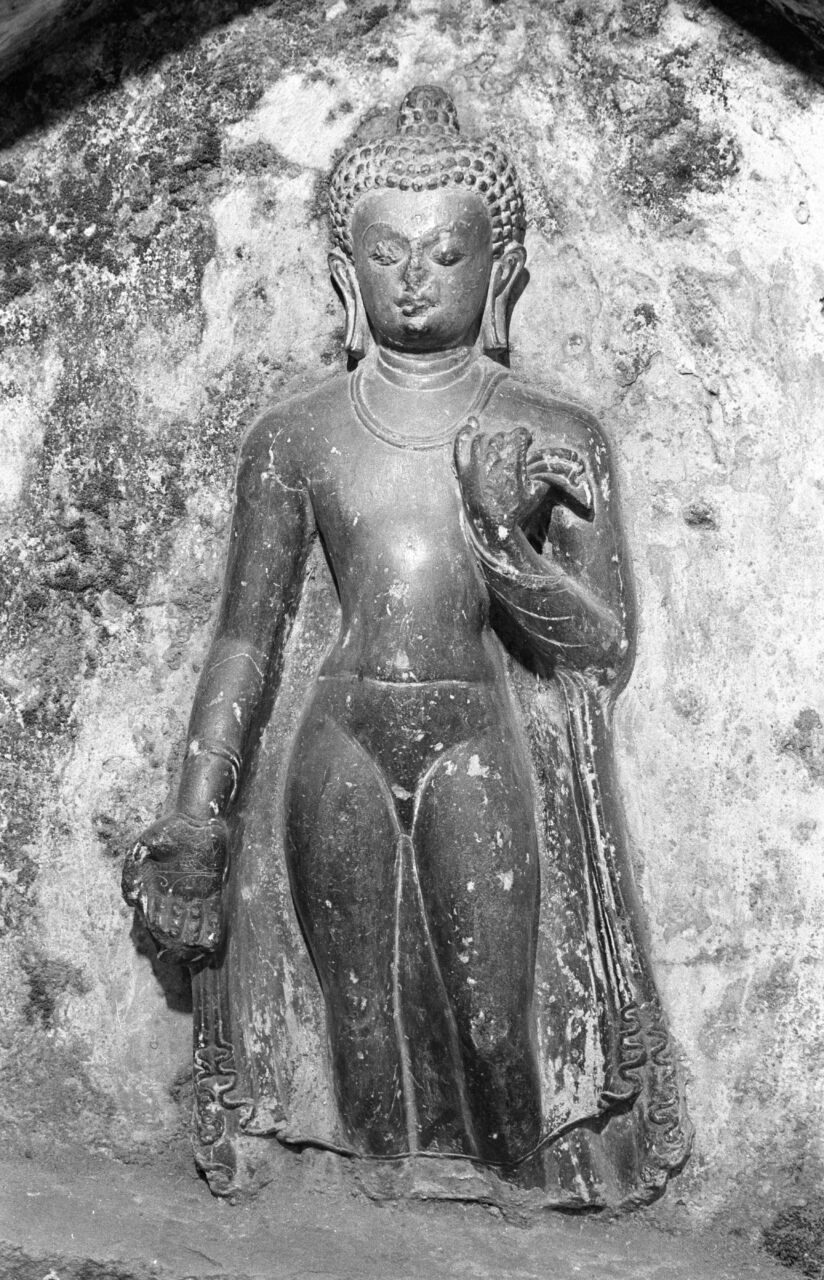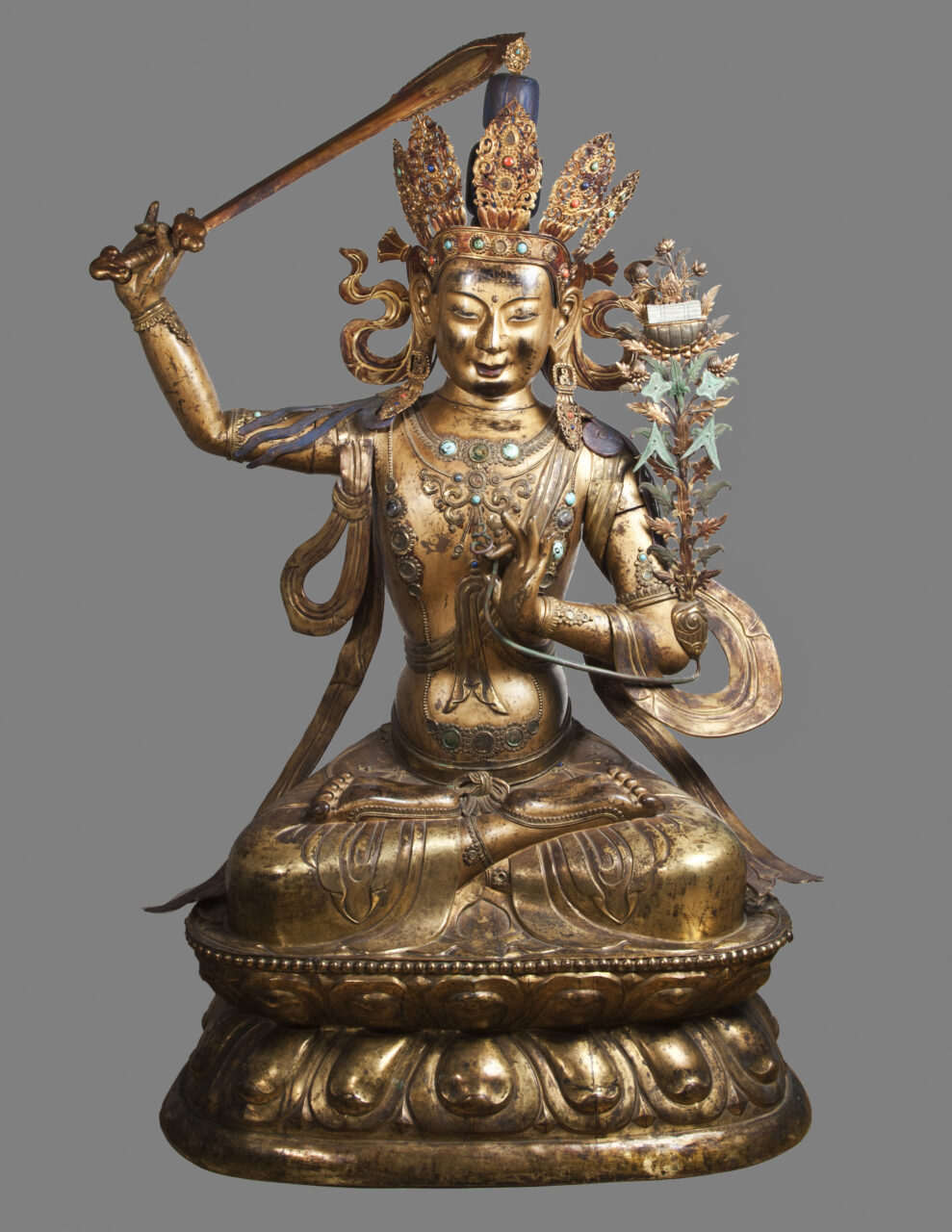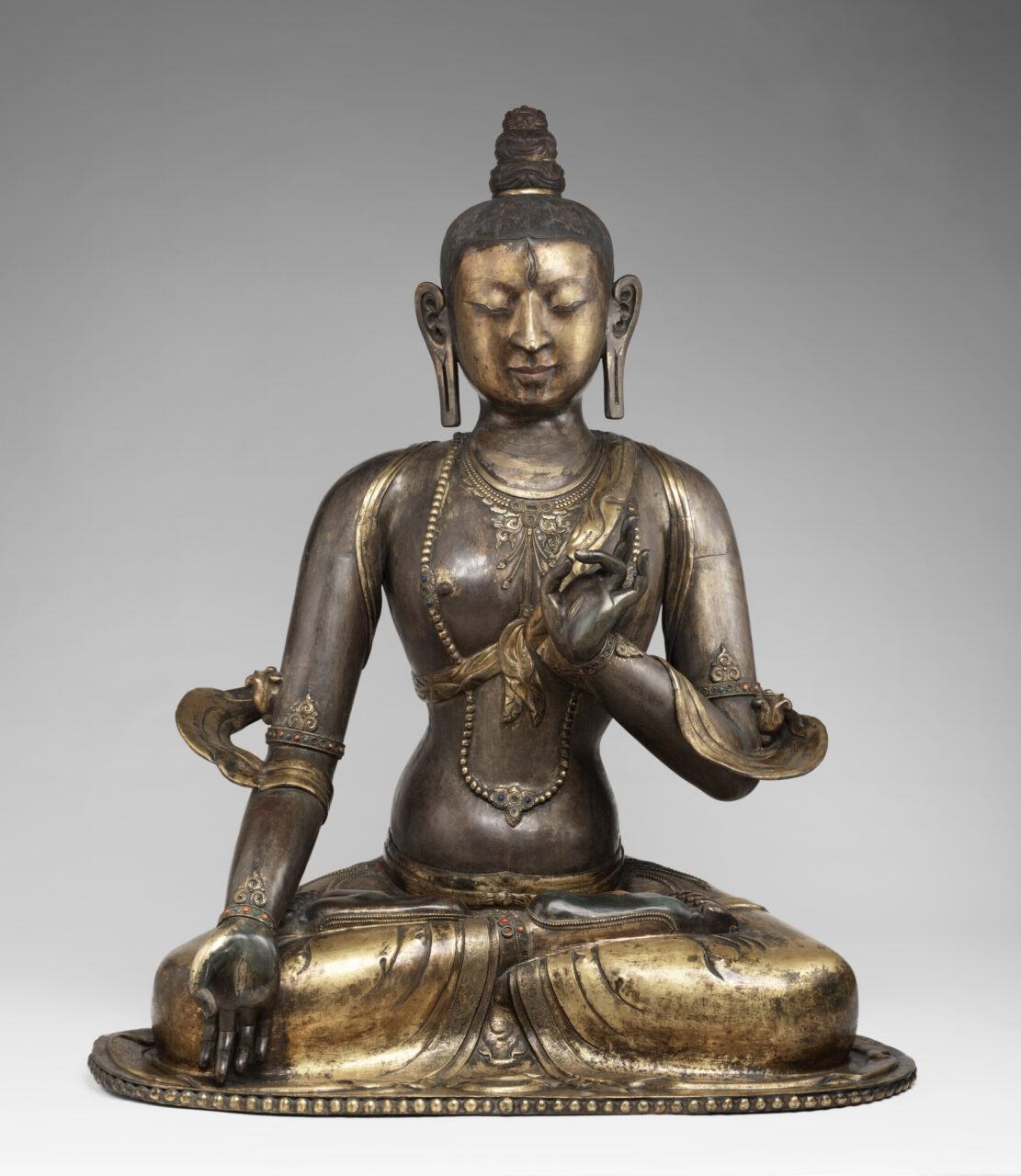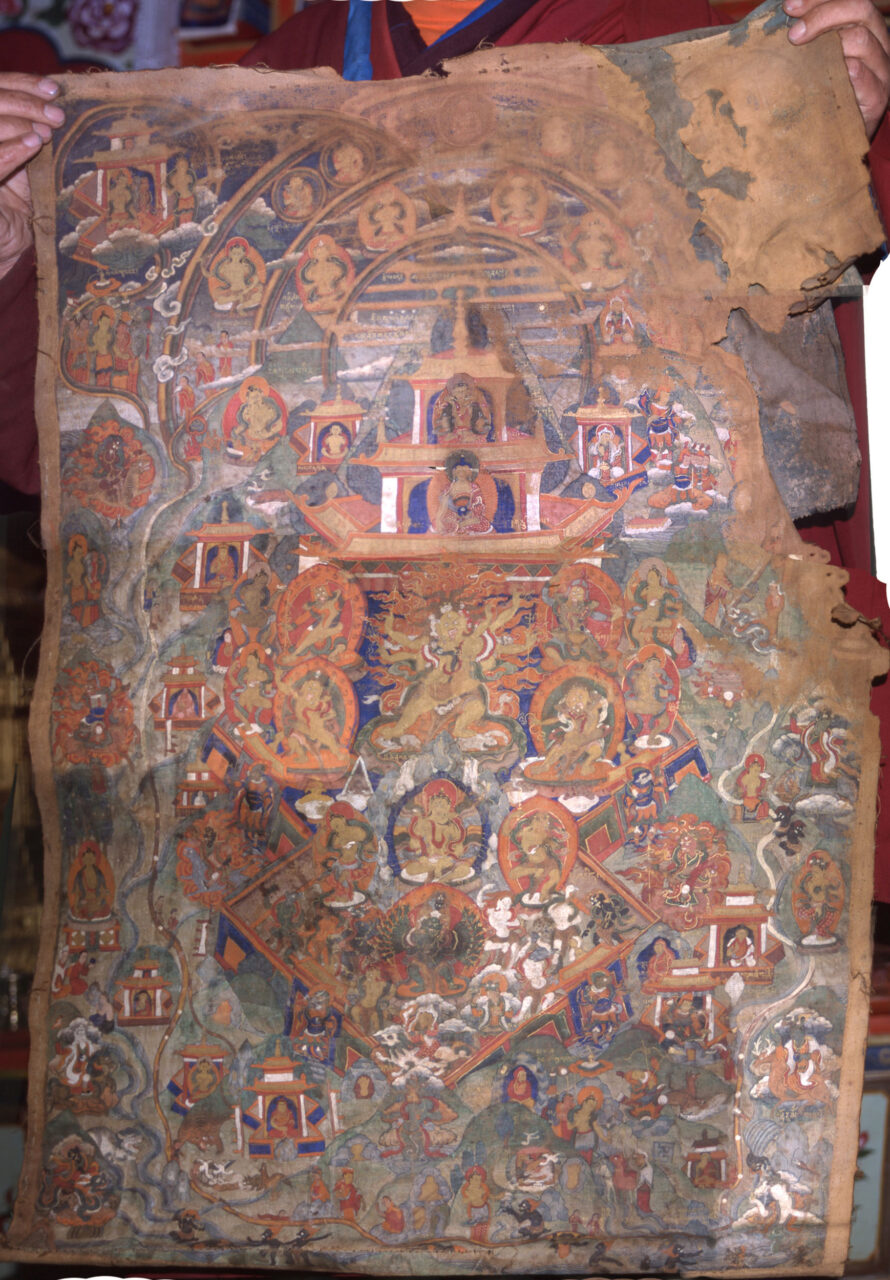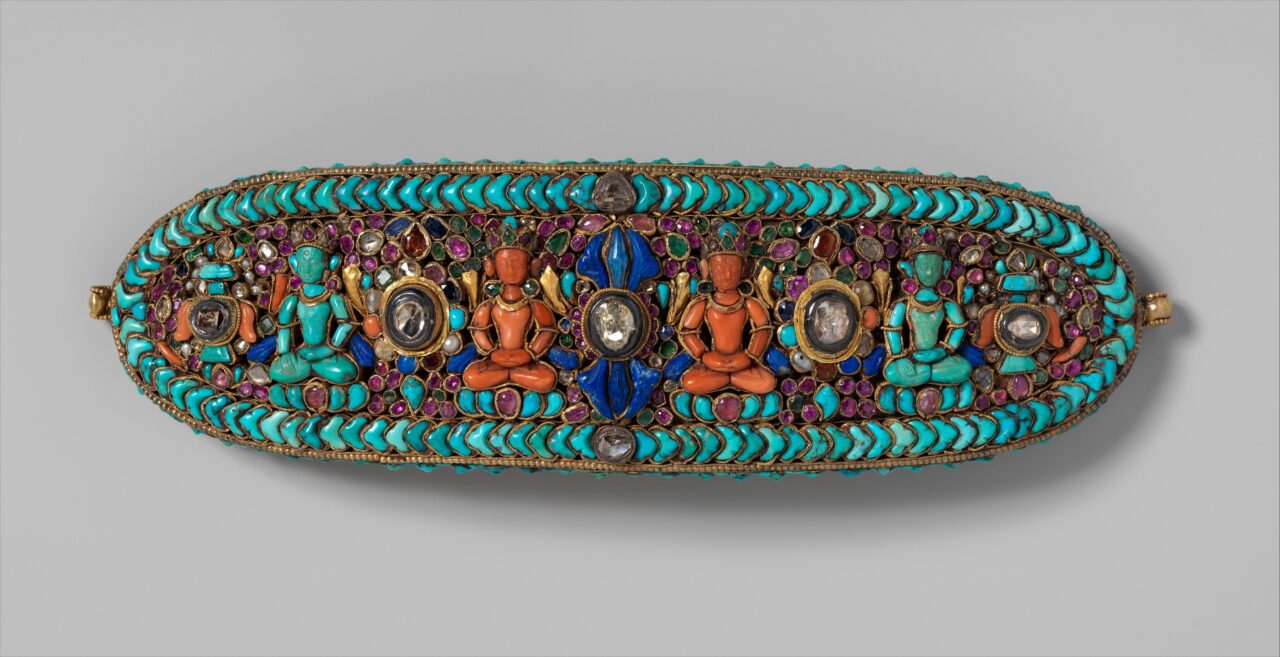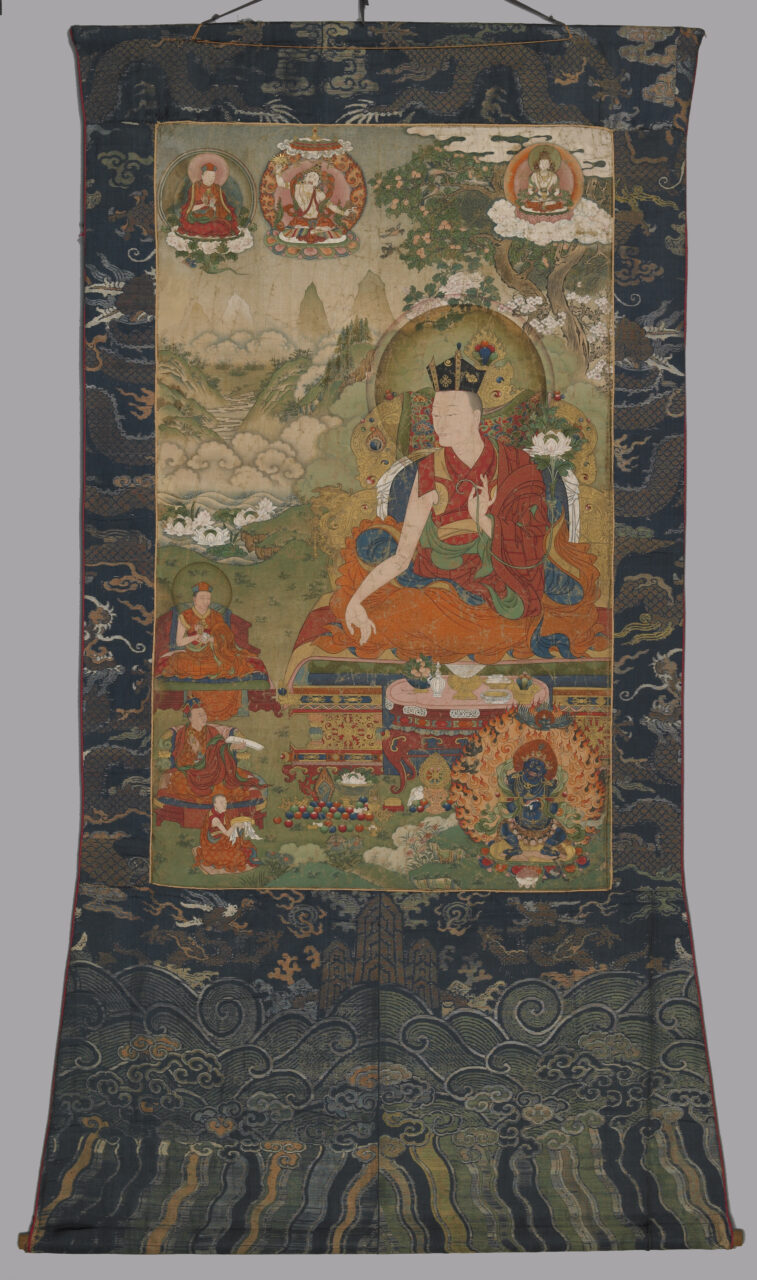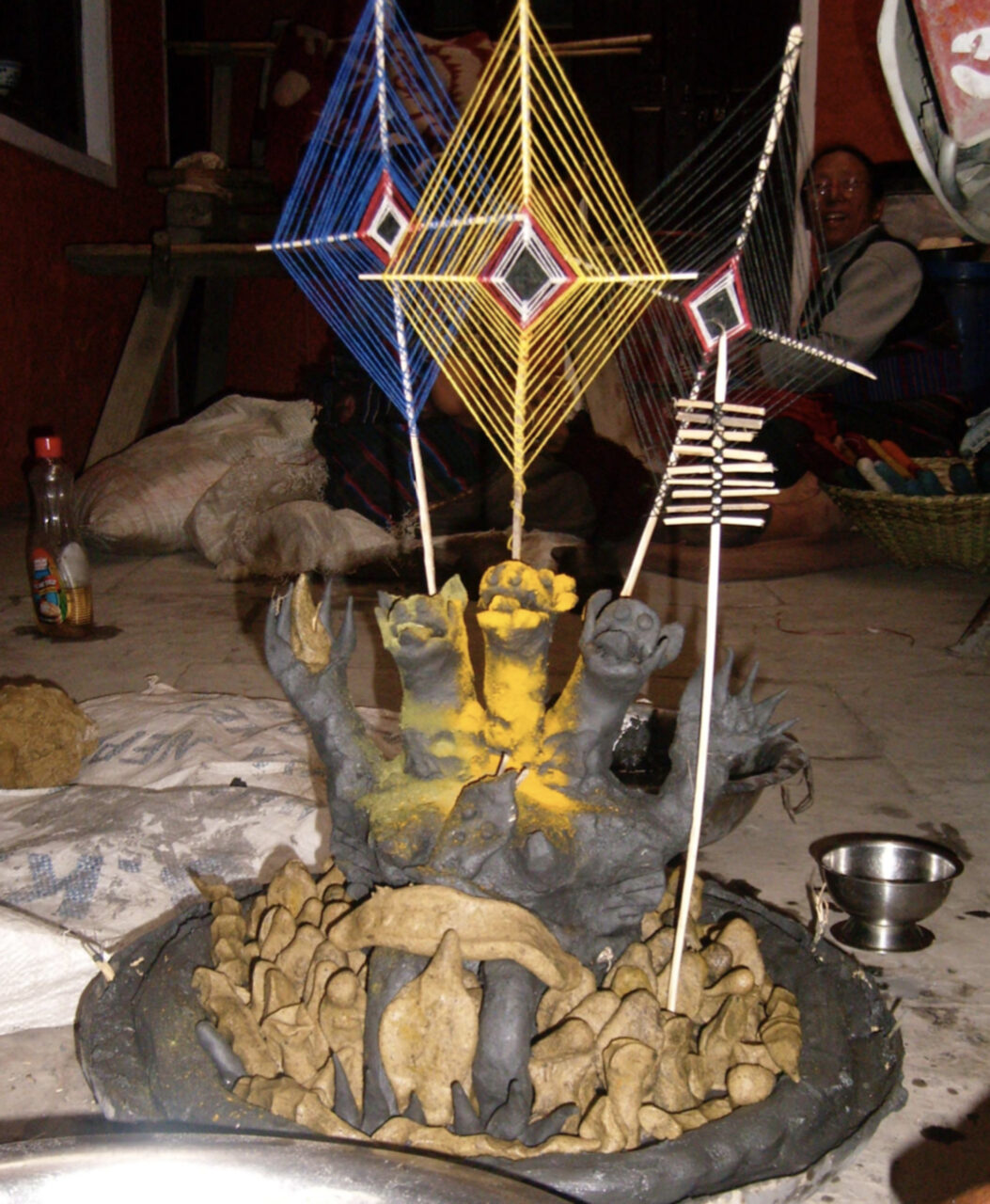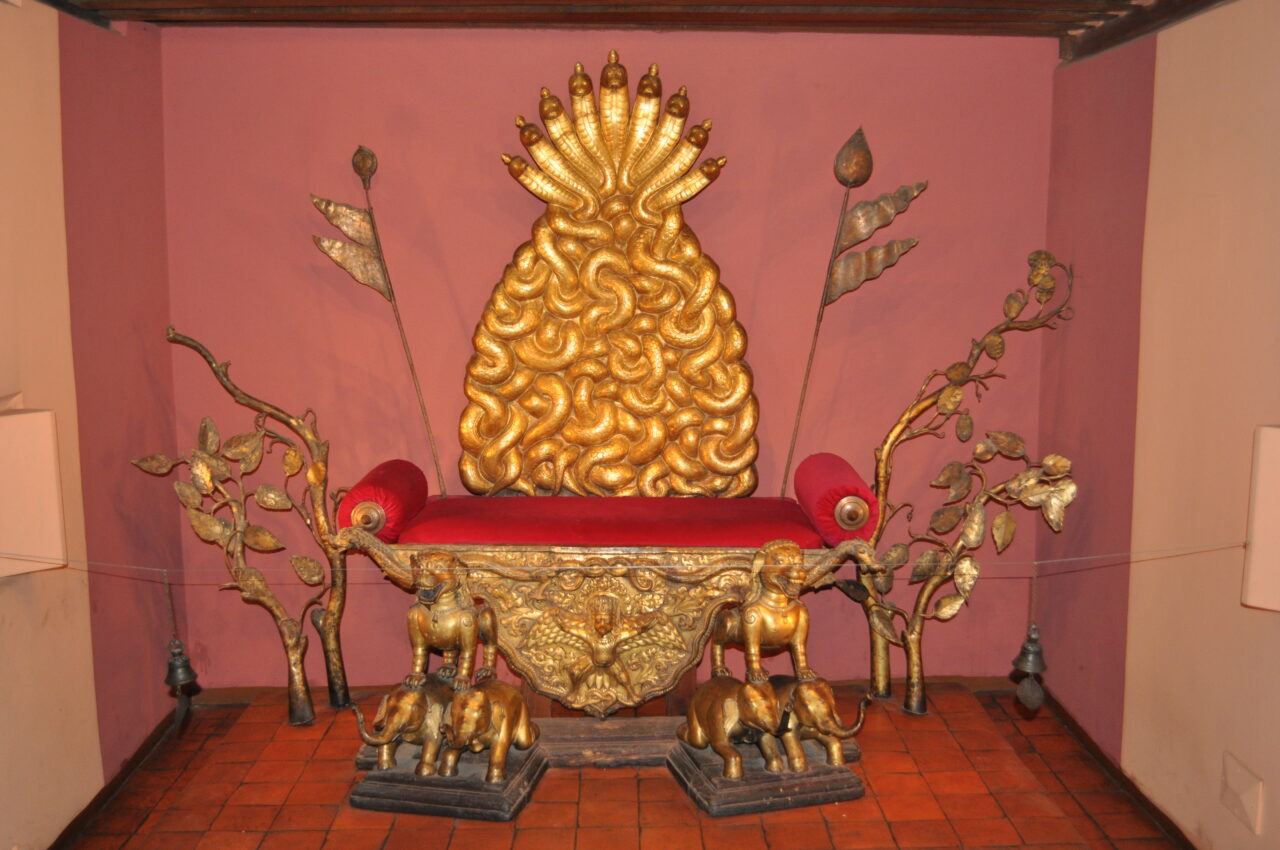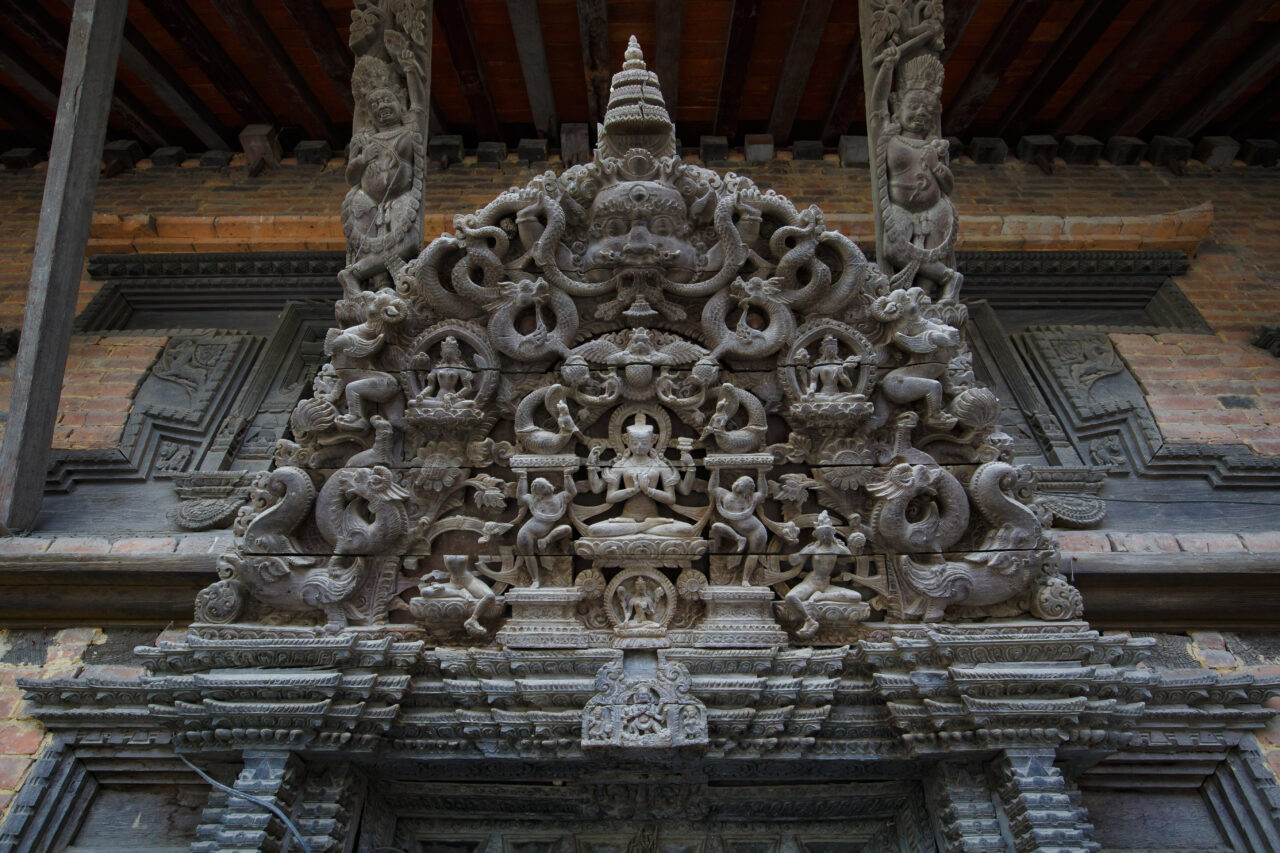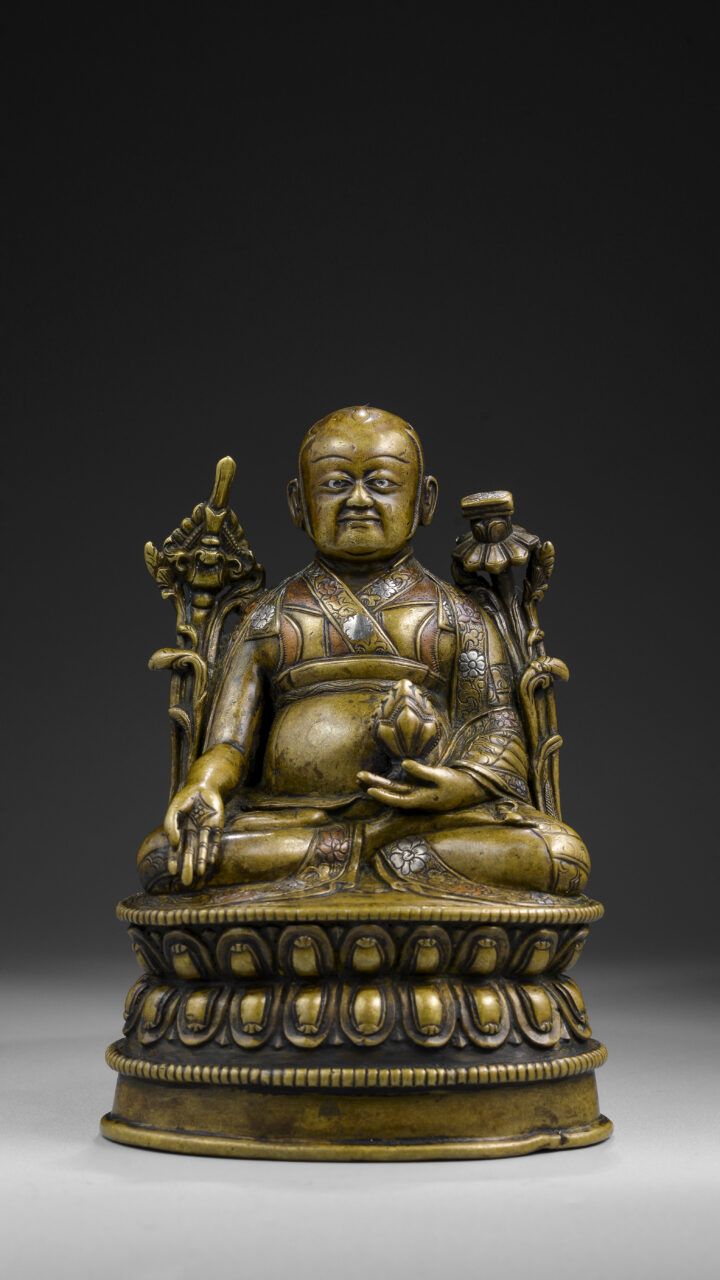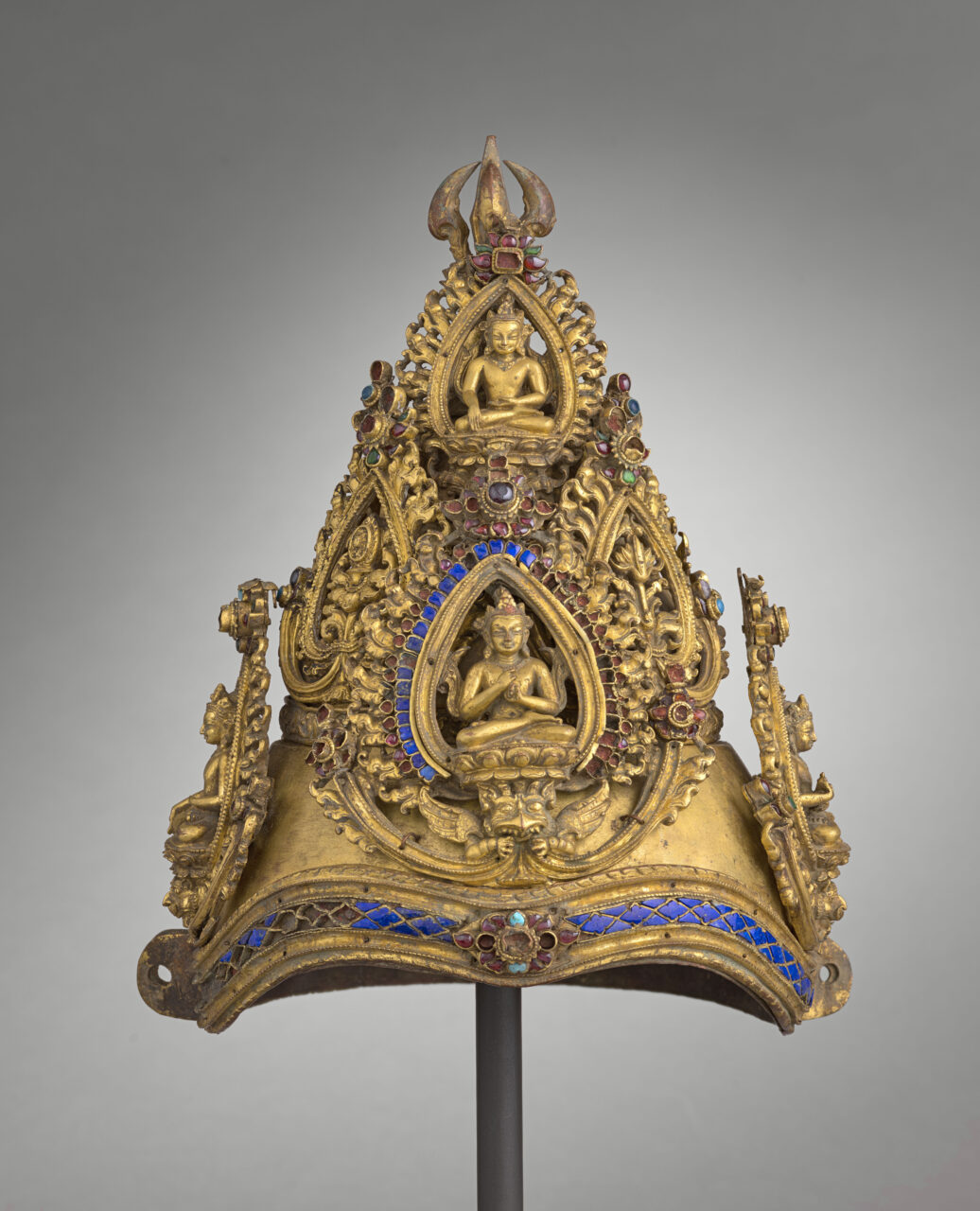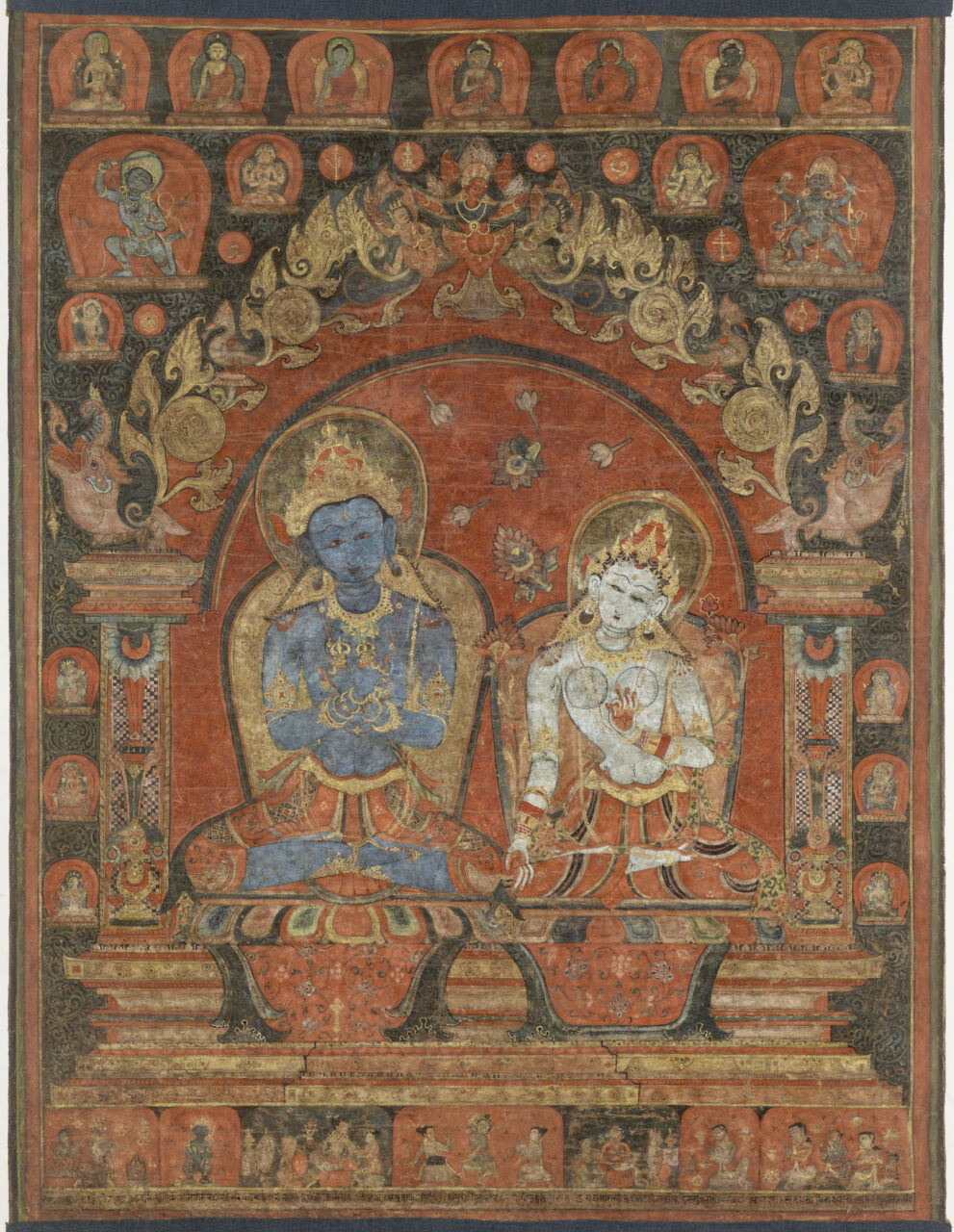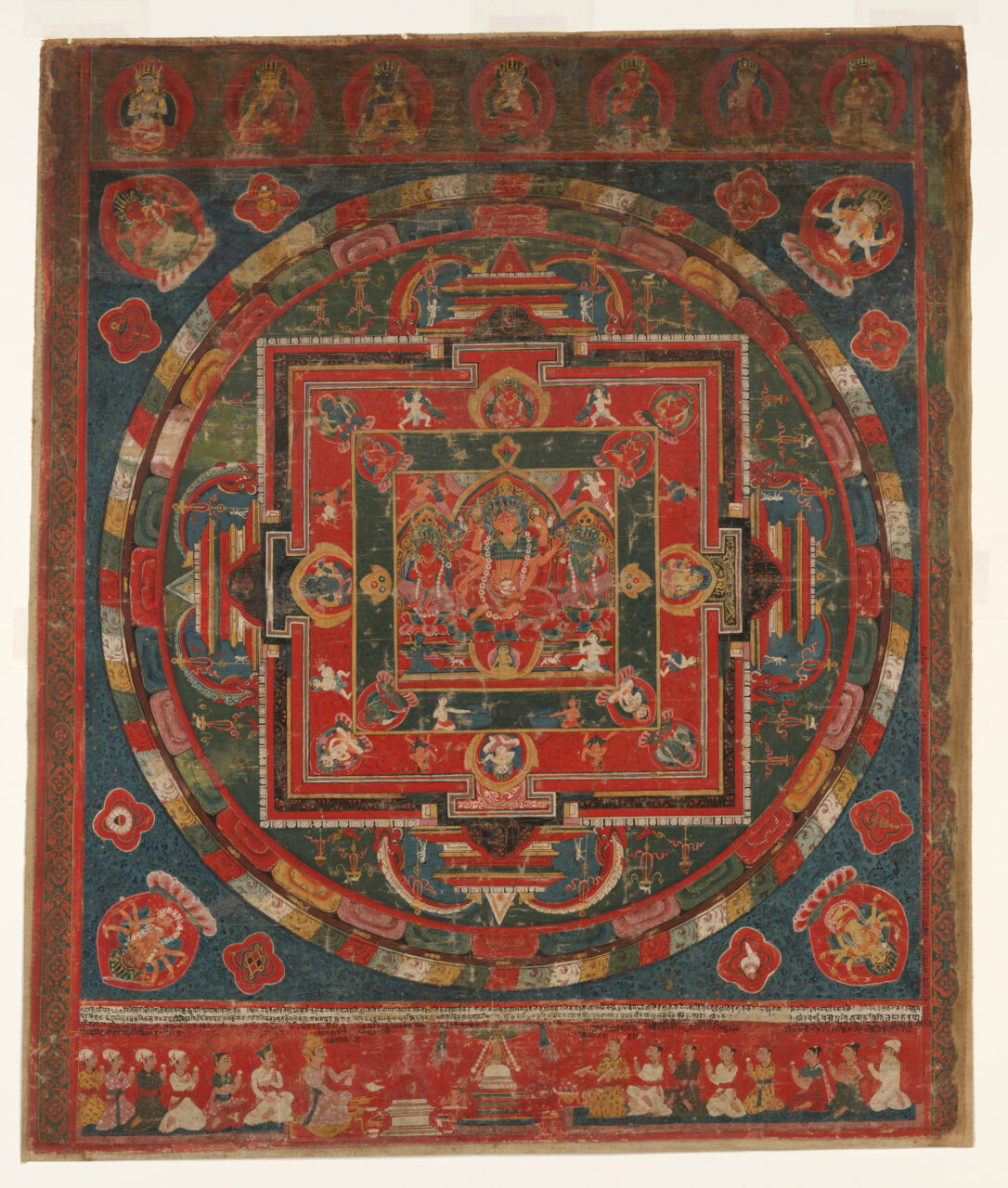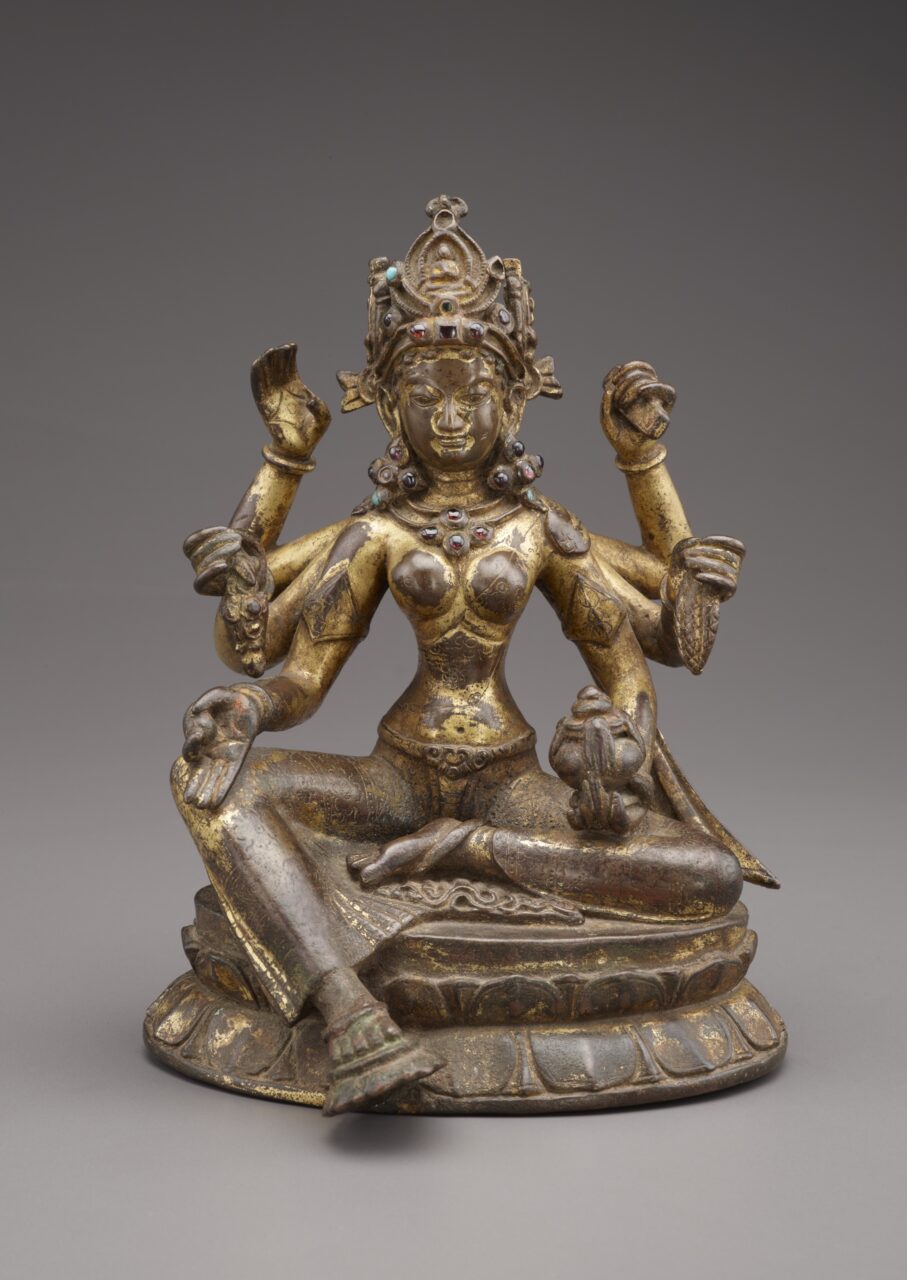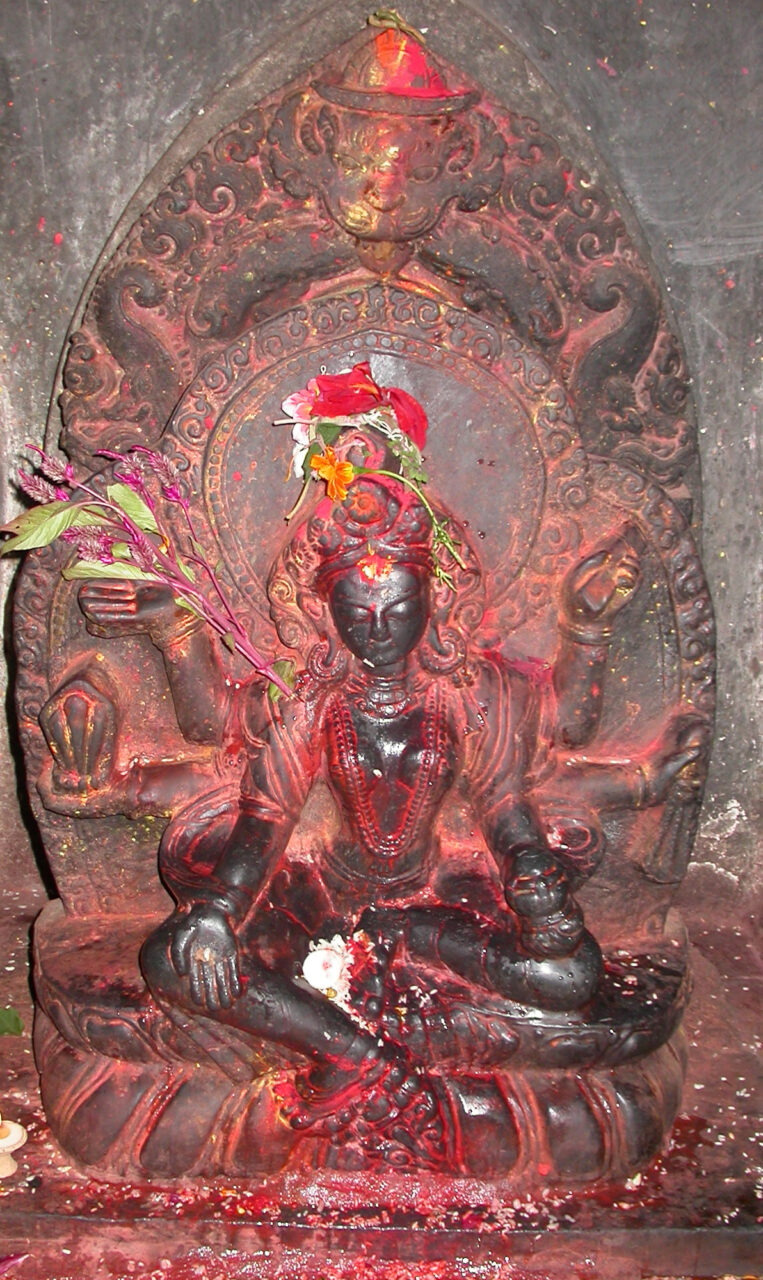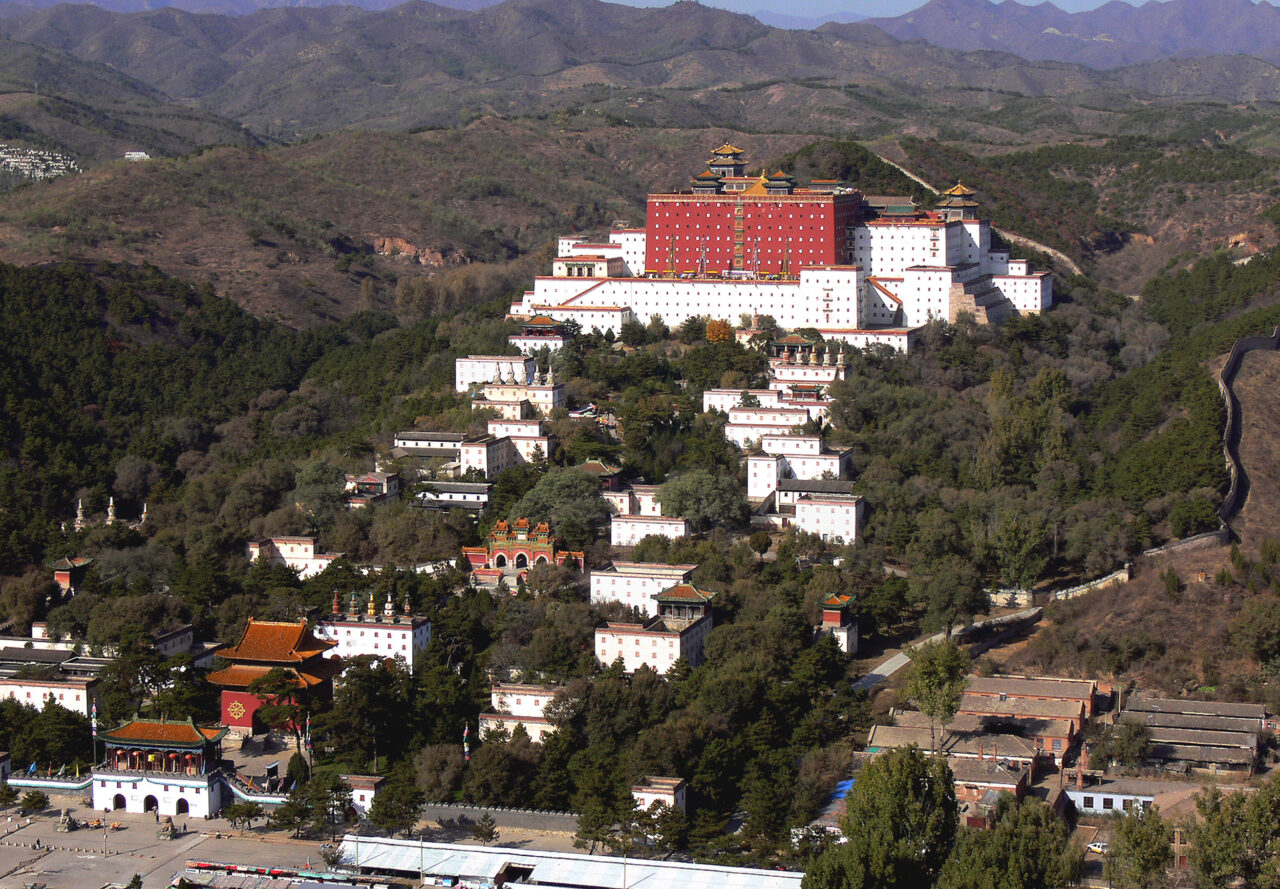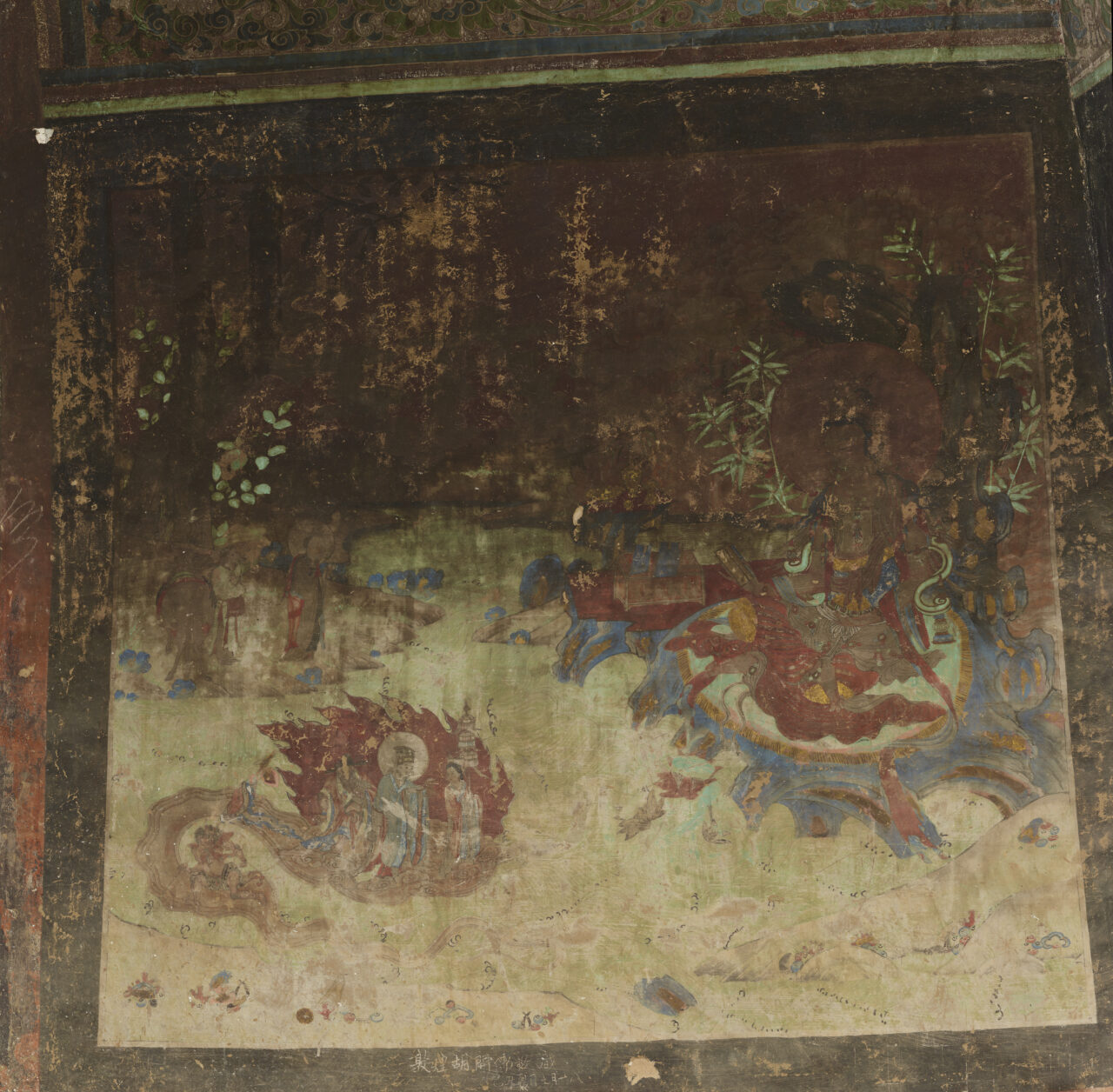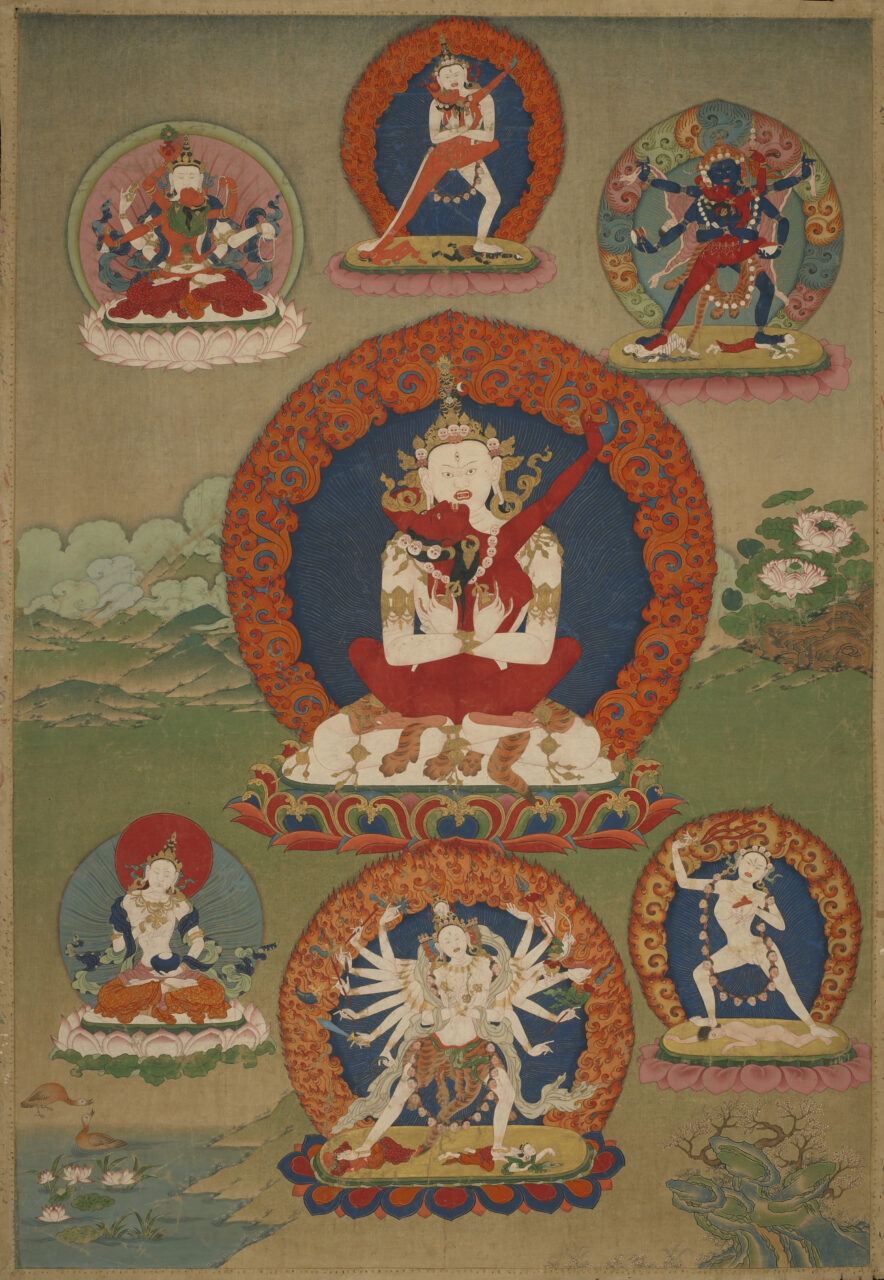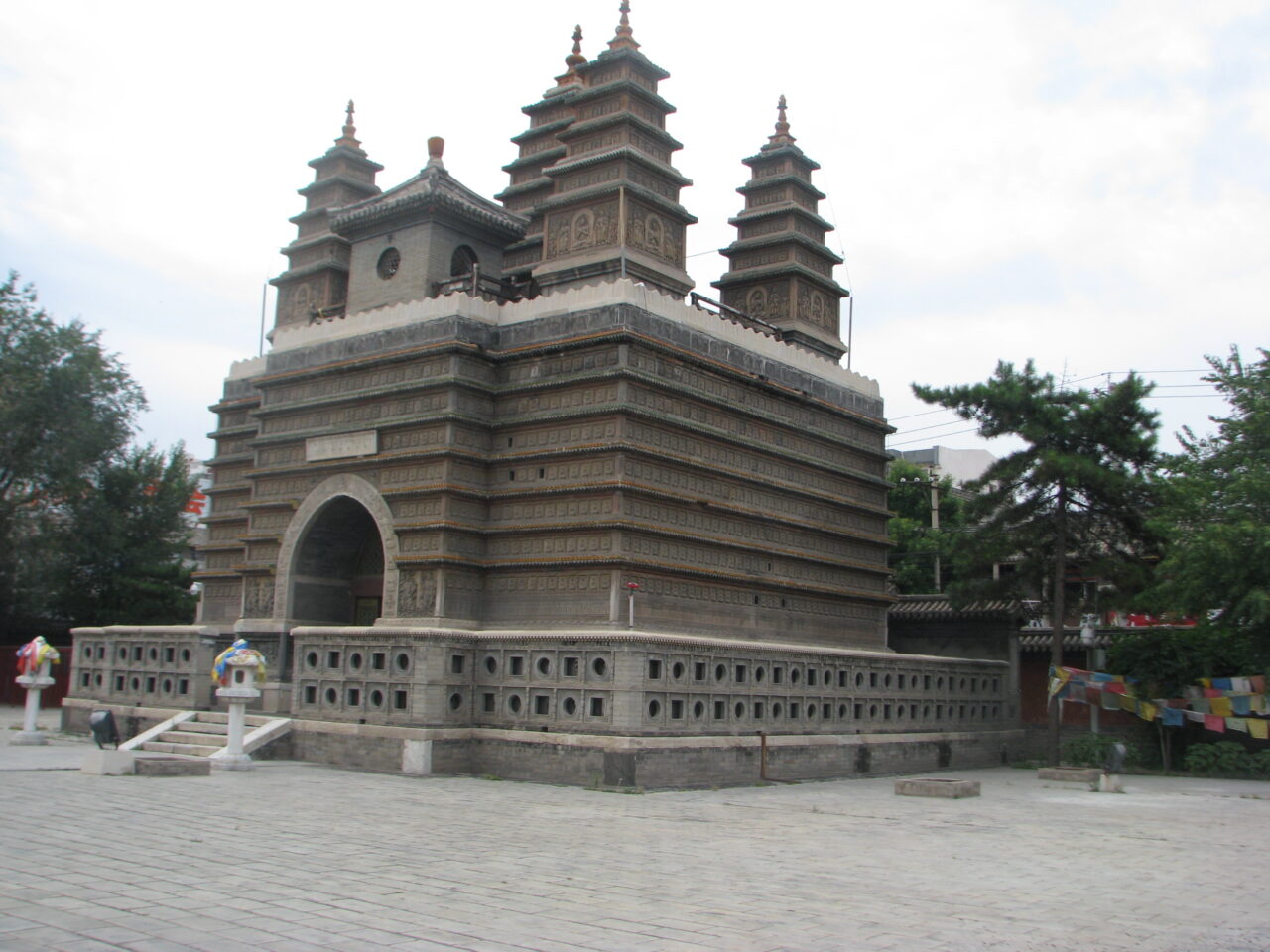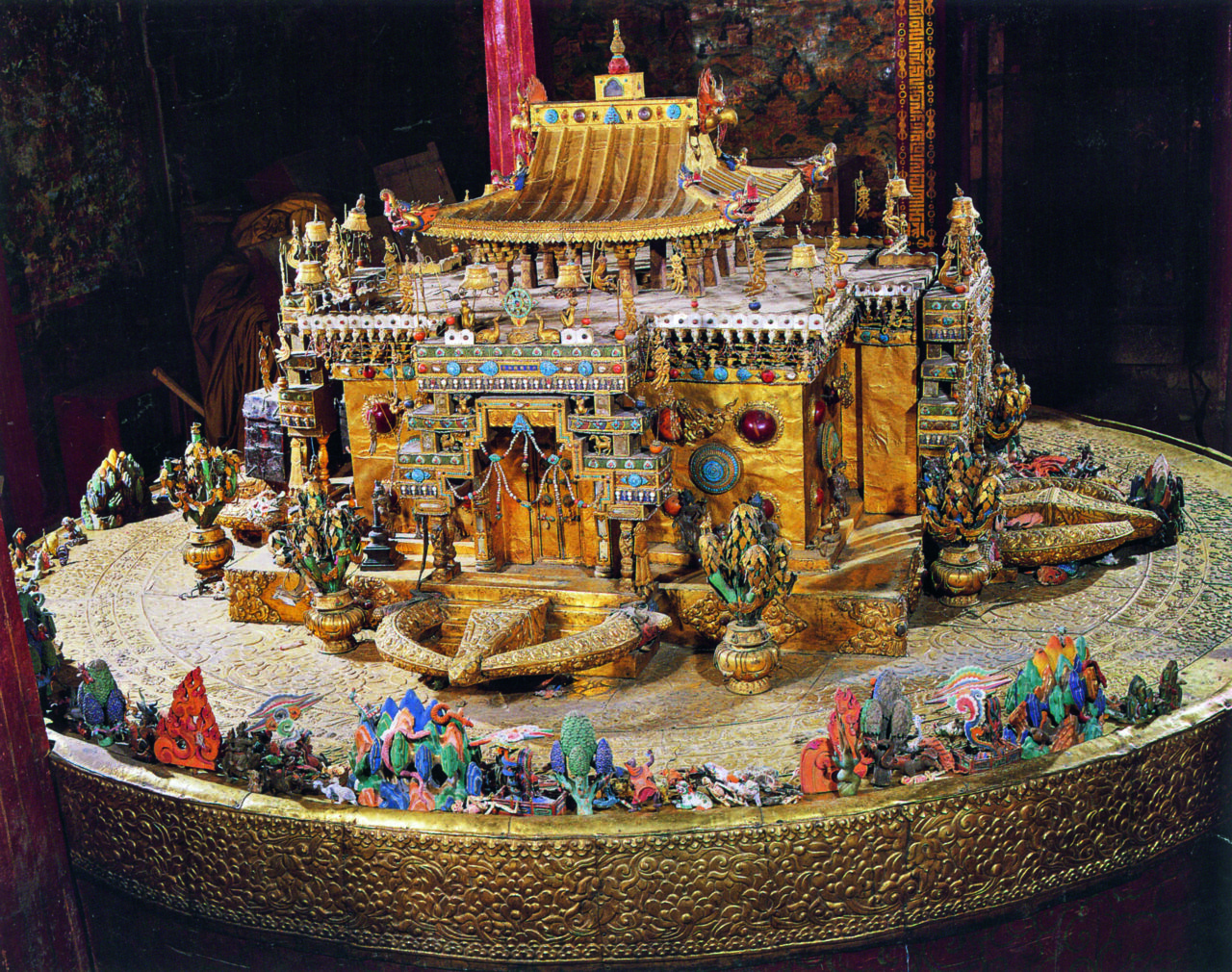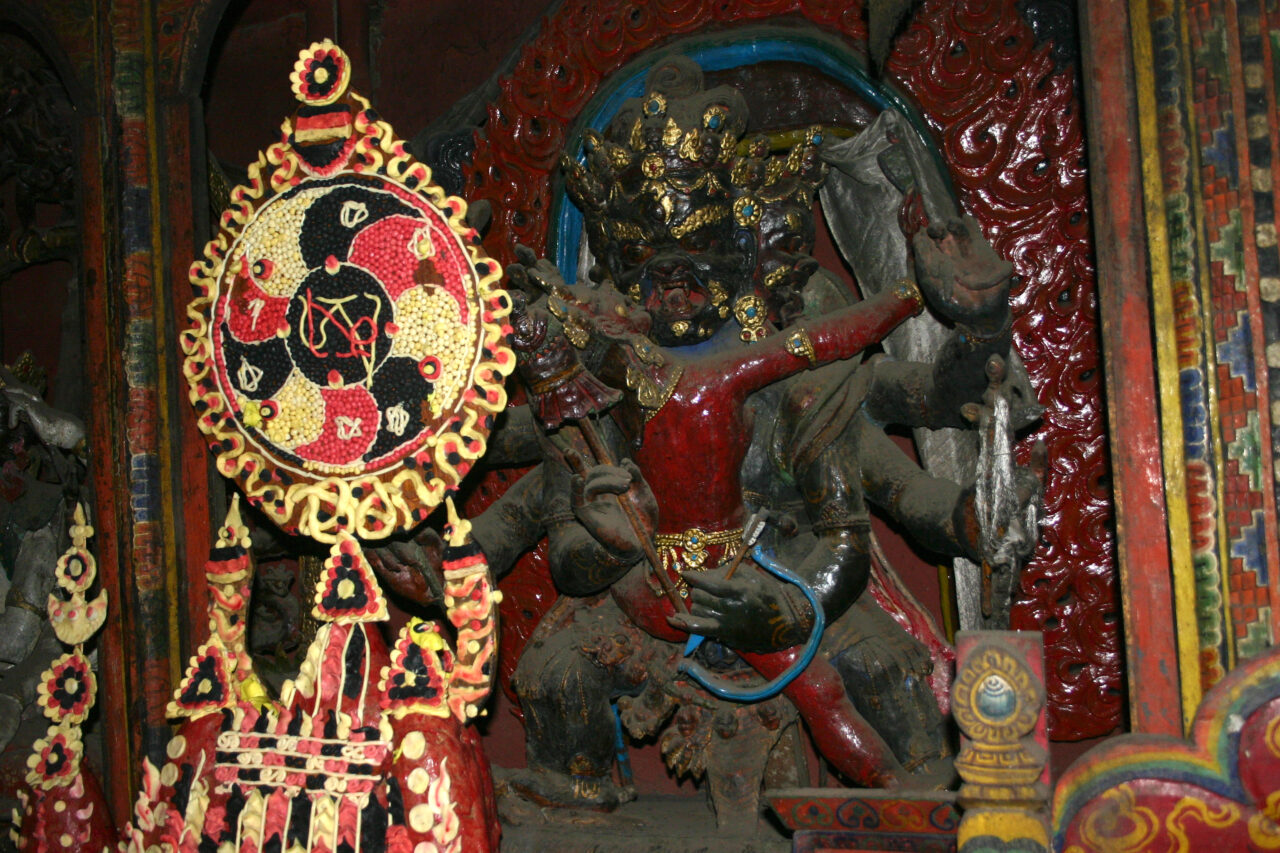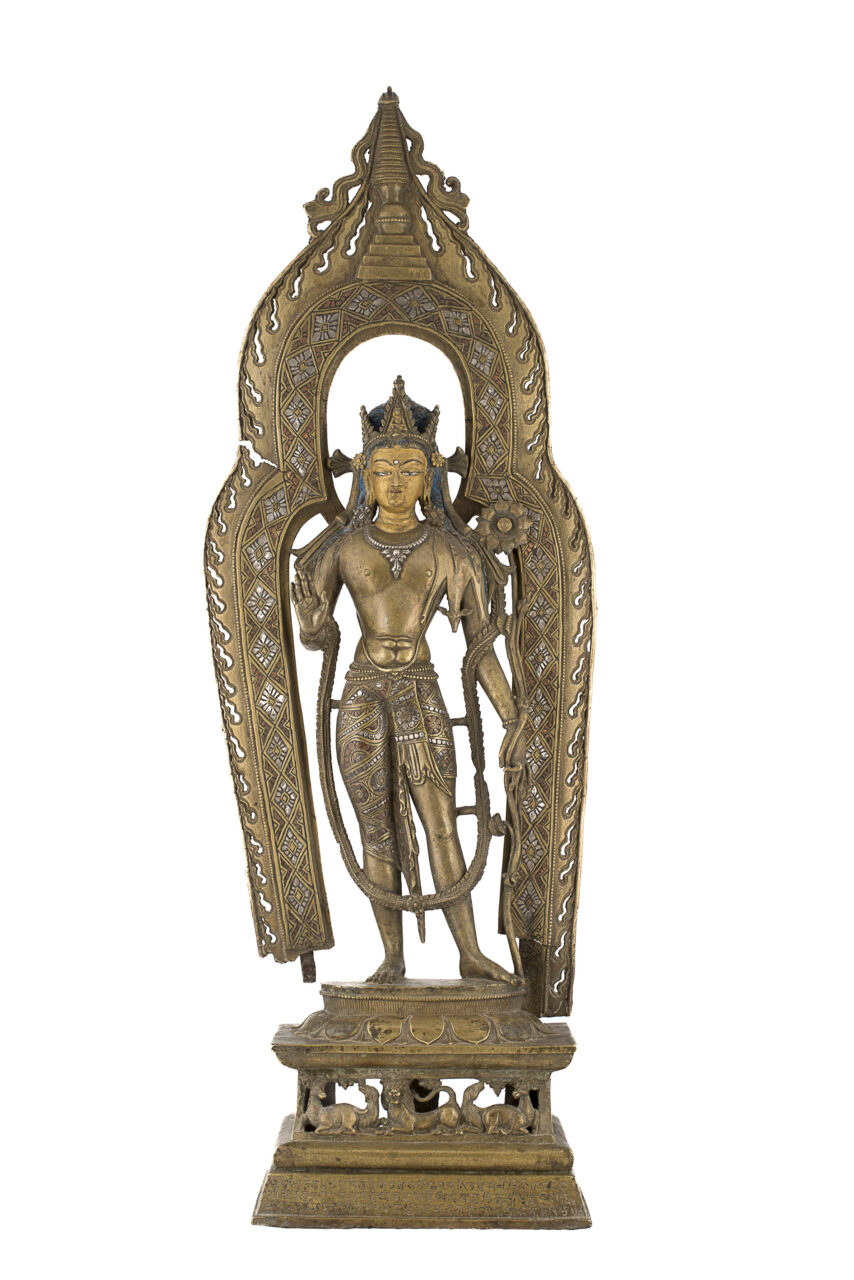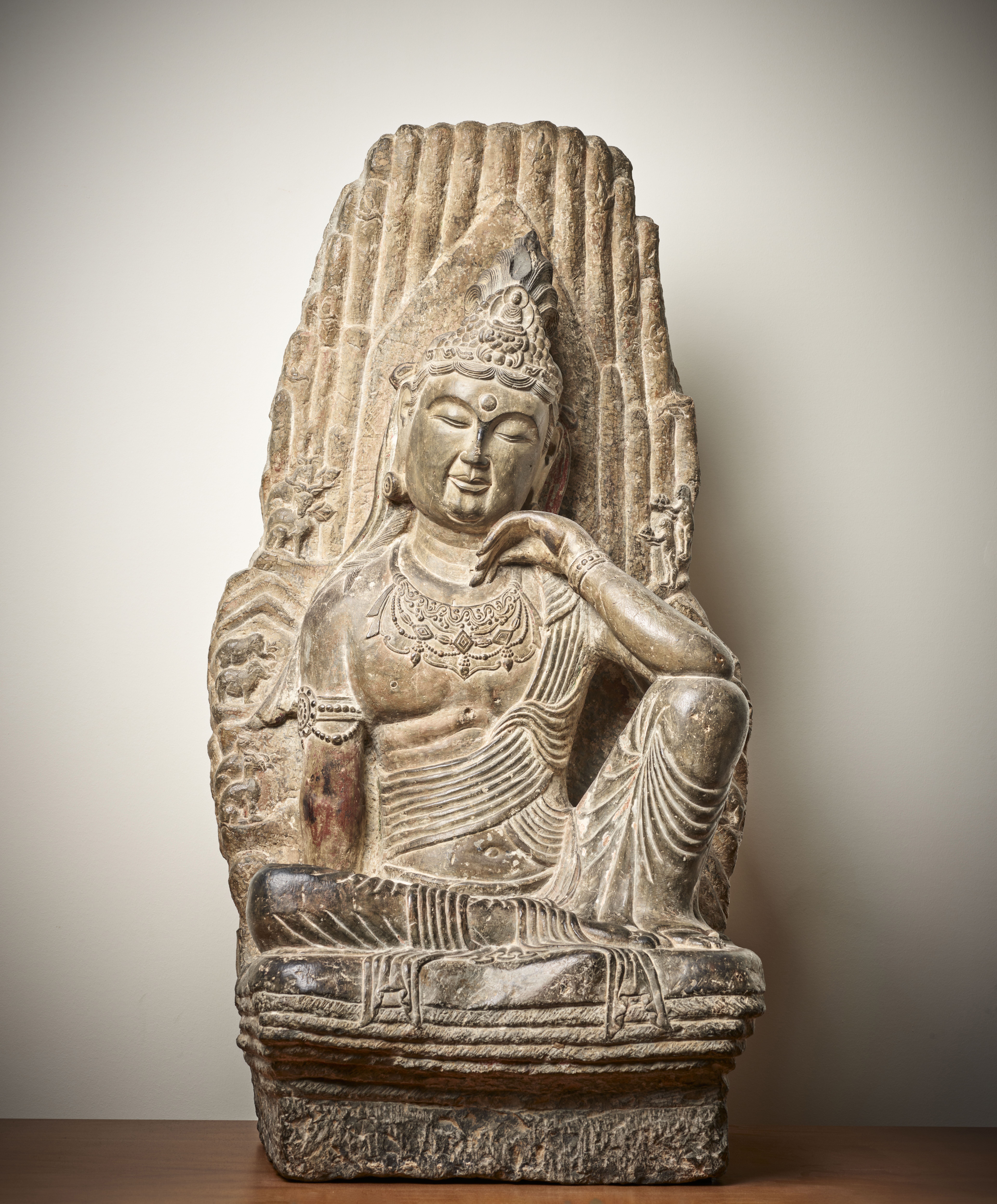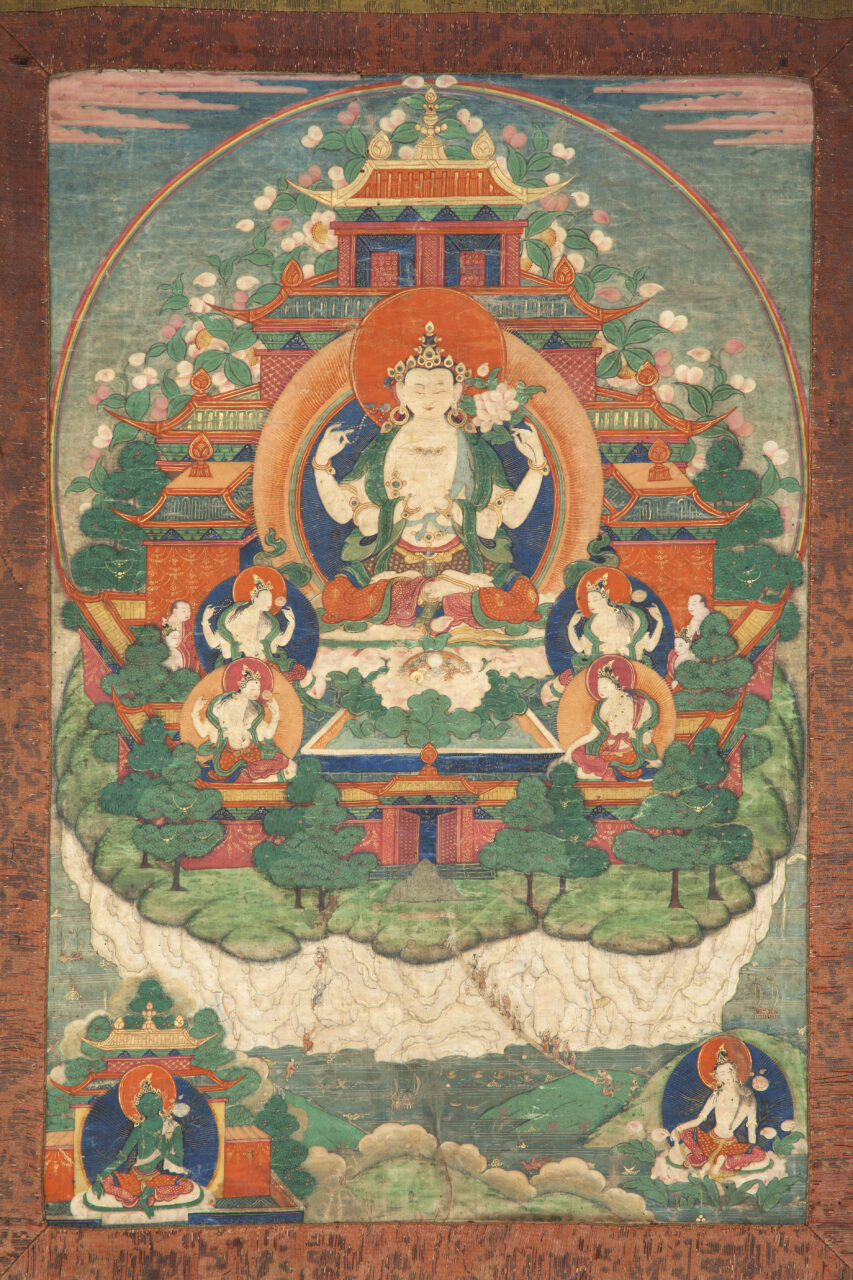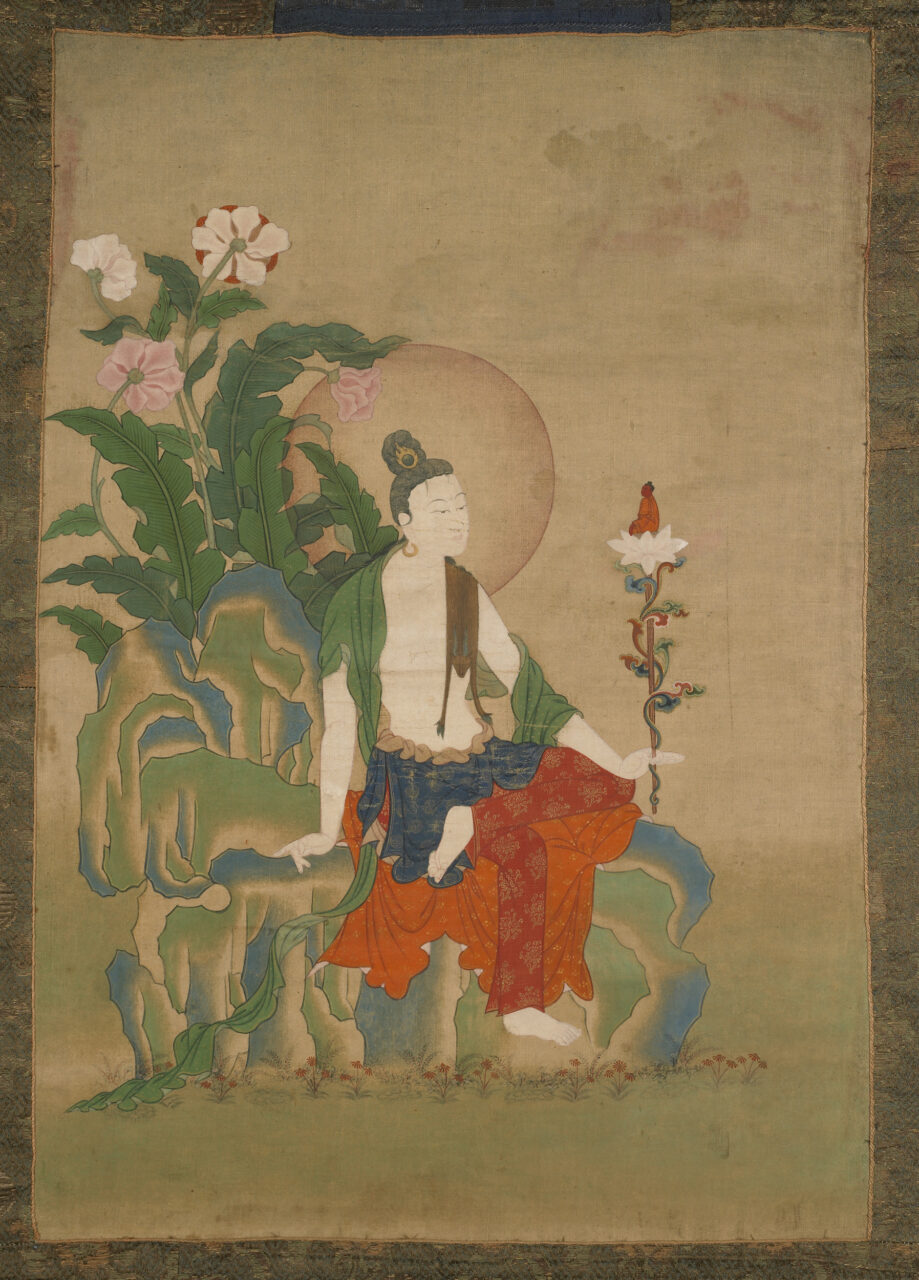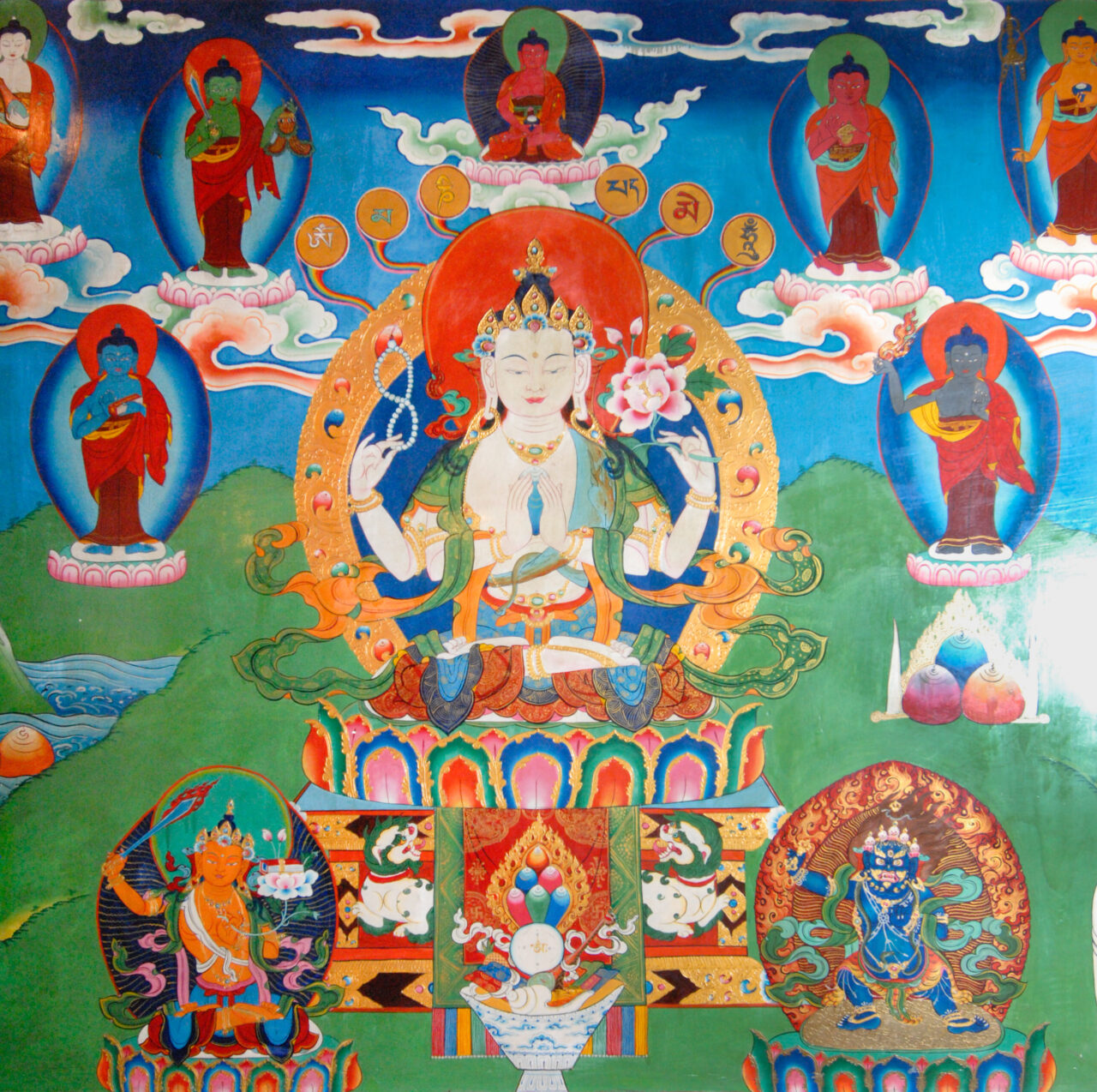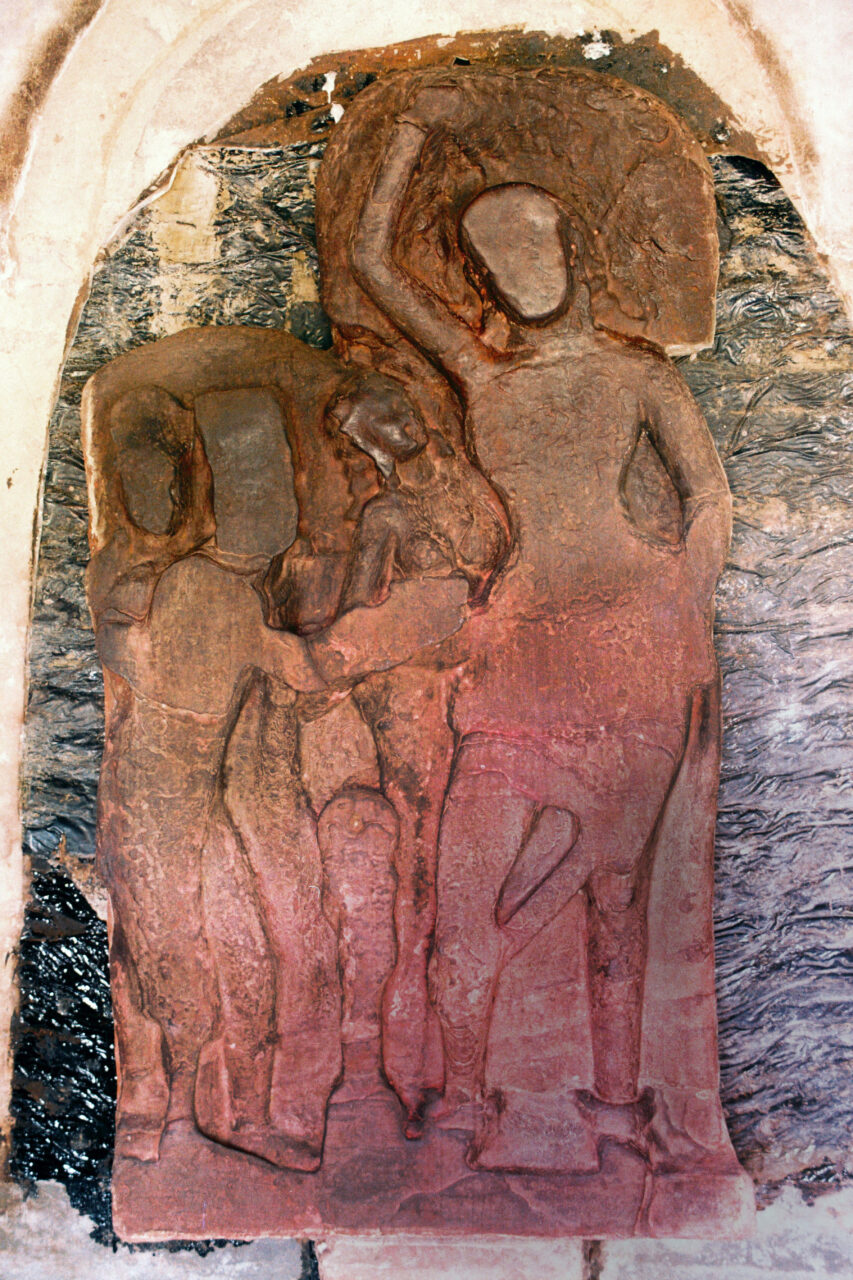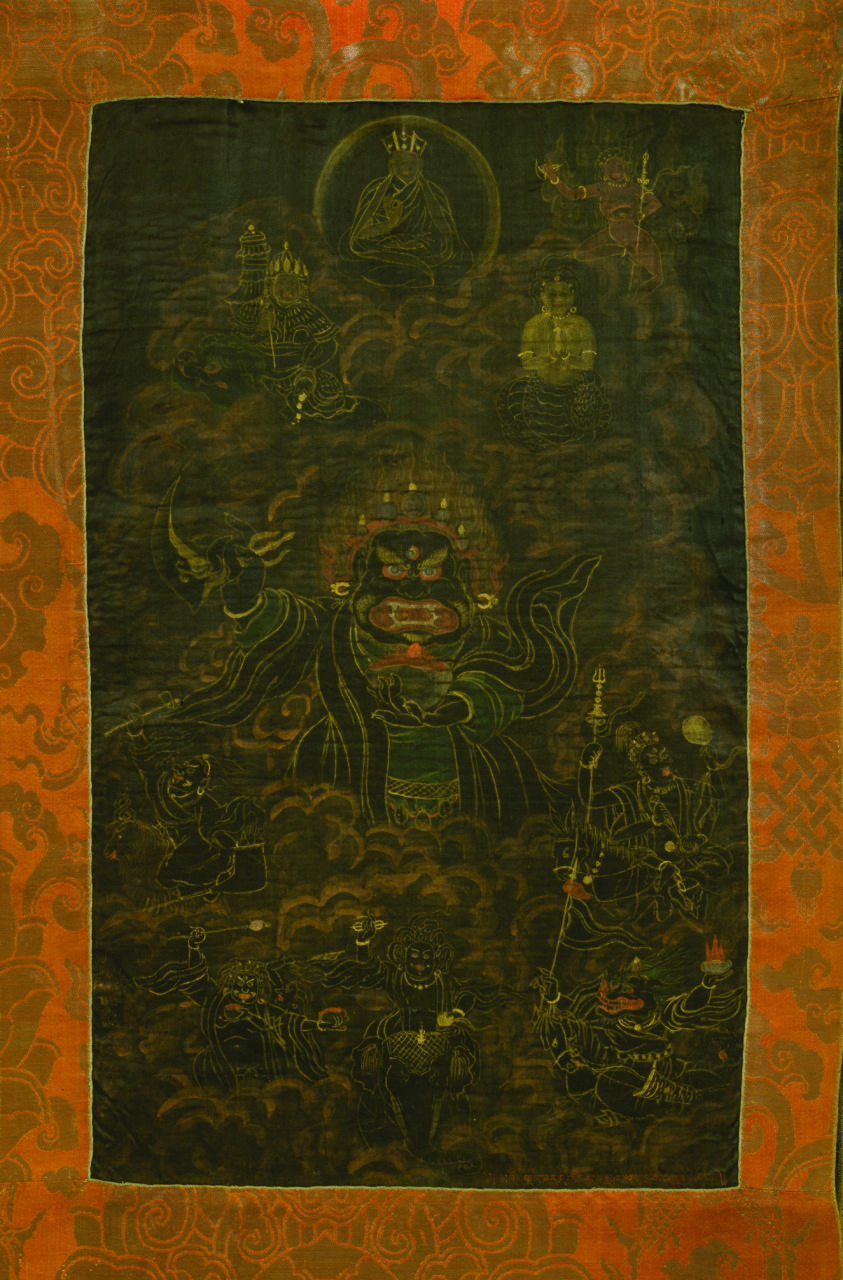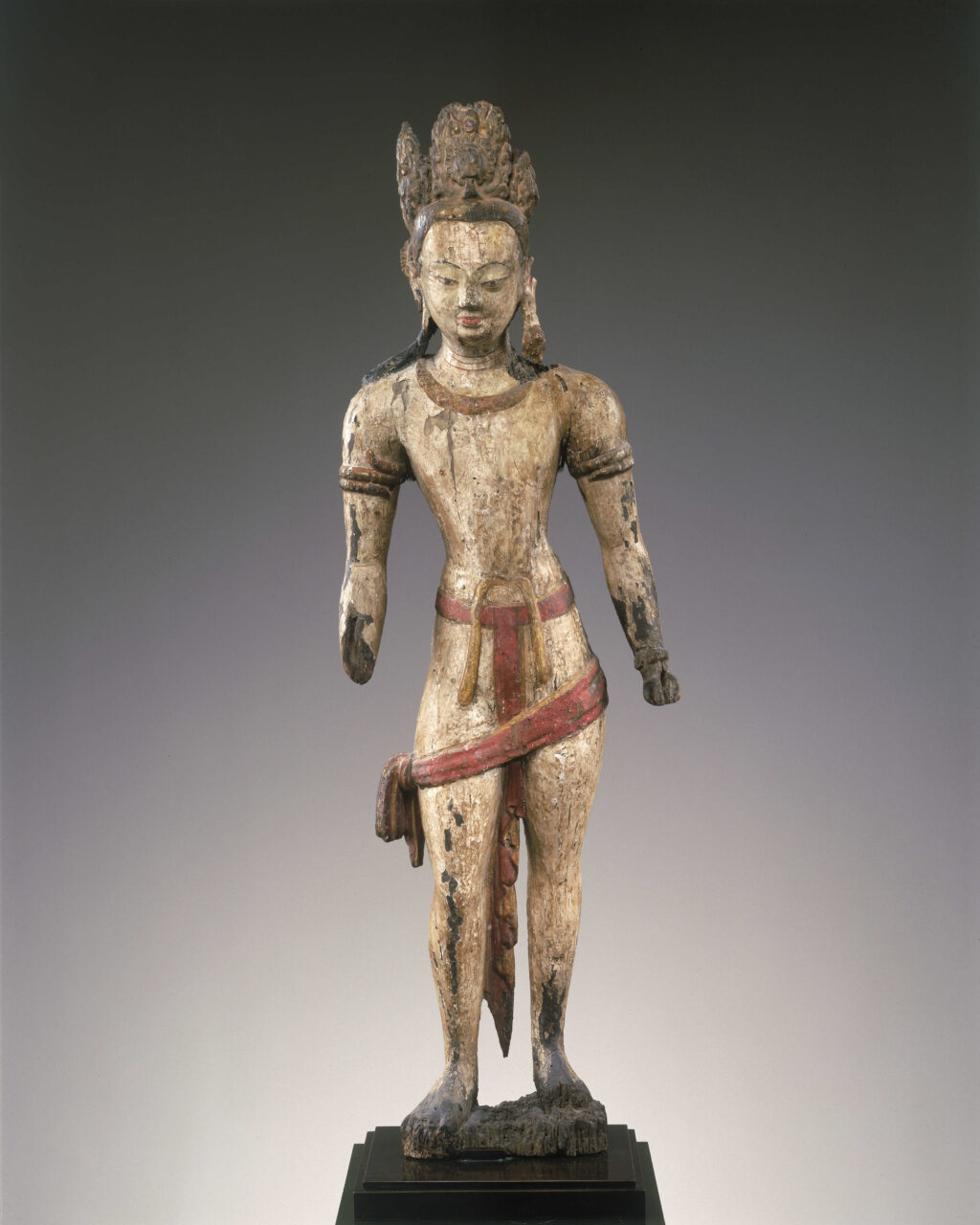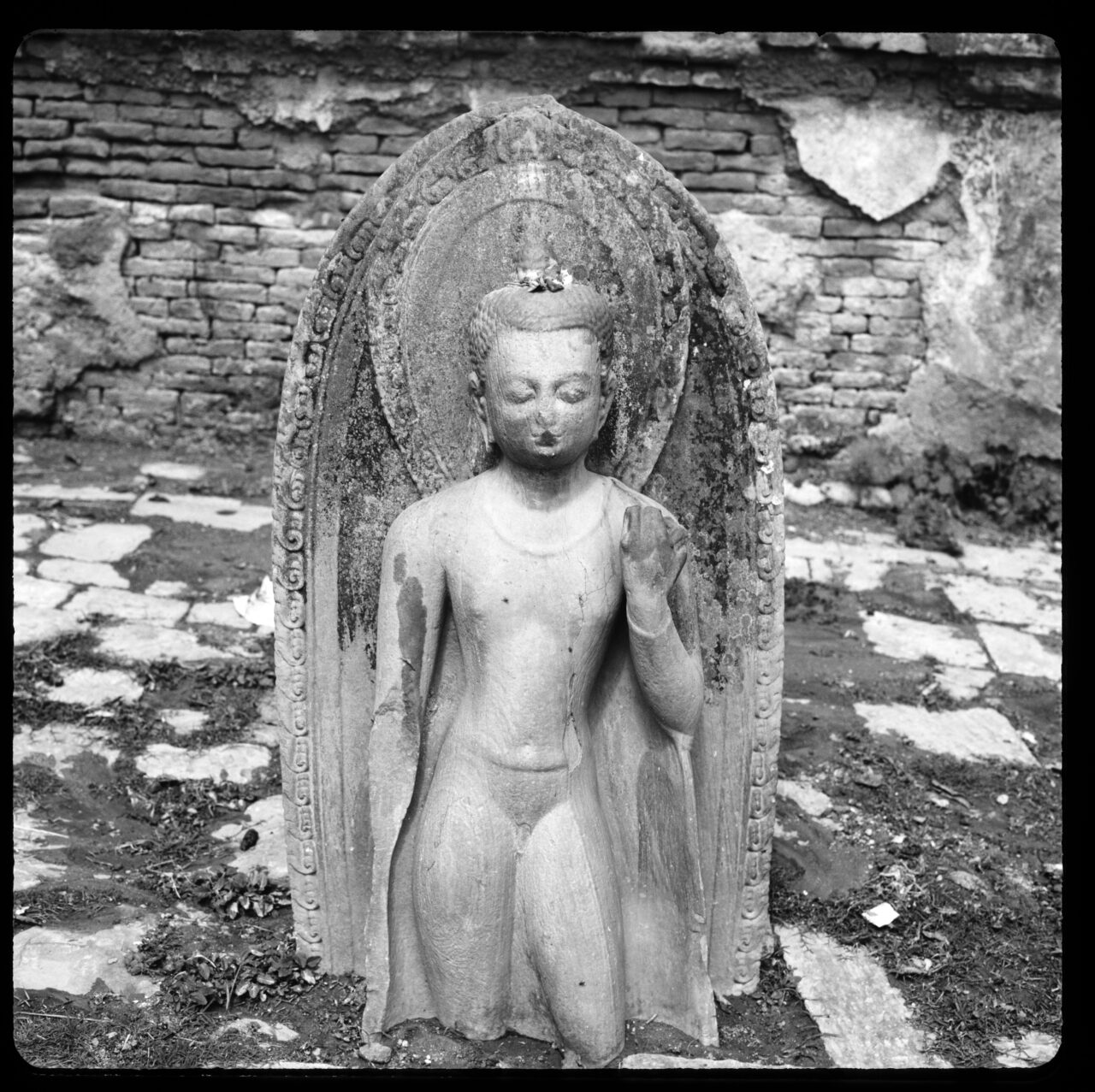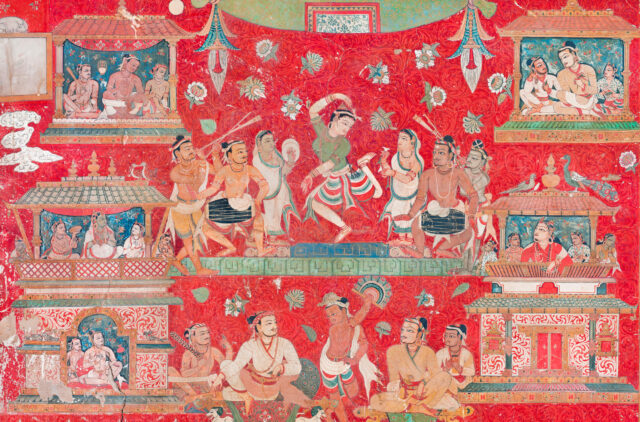Panchen Lama rebirth lineage portraits, set of thirteen thangkas copied from Nartang xylographic designs Tibet 19th century
Senge Dradok, One of the Eight Manifestations of Padmasambhava Kham Province, Eastern Tibet 18th century
Nyima Oser, One of the Eight Manifestations of Padmasambhava Tibet 18th century
Padmasambhava, Pema Jungne Kham Province, Eastern Tibet late 18th-19th century
Bon Lama, Rinchen Gyeltsen (1415-1446) Central Tibet 18th century
Kaumari Nepal 17th or 18th century
Four-faced Linga Nepal 18th - 19th century
Pavilion of Raining Flowers (Yuhua Ge 雨花閣) Beijing Qing dynasty
Woodblock Print of the Buddha with His Assembly China 18th - 19th century
Indian Teacher Bhavaviveka (After Choying Gyatso’s (active ca.1640s-1660s) set of previous incarnations of the Panchen Lamas) Tibet 18th century Painted woodblock print
Tsongkhapa (1357-1419) and Scenes from His Life Tibet 18th century
Tsongkapa (1357-1419) Tibet 18th century
Four-armed Mahakala, left, and Remati, right Ron Wosel Puk, Tibet 1538
Phakpa of Lokeshvara of Lhasa Tibet or Nepal date uncertain
Red Avalokiteshvara or Bunga Dya Nepal dated by inscription, 1818
The “Three Silver Brothers” Manjushri – Avalokiteshvara – Vajrapani (left to right) Western Tibet, Puhrang area early 13th century
Buddha Shakyamuni with Arhats Cosmic Vishnu (Vishvarupa) Ushnisavijaya and Celebration of Old Age (Jyatha Janko) Chariot Ritual (Bhimaratha Pata) Bodhisattva Suryabaskara Vajra and Bell Skull Cup Woodblock for printing Tibetan text Frontispiece from The Great Destroyer of the Thousand Foes (Mahasahasrapramardani) Sutra Manuscript Buddha Amitayus Illuminated Manuscript Page Depicting Four Forms of Mahakala & Vaishravana White Tara Vajravarahi Green Tara Medicine Buddha Vasudhara Vasudhara, Goddess of Abundance Medical Painting of Minor Connecting Blood Vessels or Capillaries, Illustration to the Medical Treatise The Blue Beryl, Chapter 4 Medical Instruments Sakya Pandita Kunga Gyelsten Panjaranatha Mahakala Red Avalokiteshvara or Bunga Dya The Stages of Nepalese Lost-Wax Metal Casting Refuge Field with Machik Labdron (1055–1153) Vishnu with the King of Snakes, Shesha Flying Naga Siddhi Lakshmi Shiva Bhairava Milarepa and Scenes from His Life Life Story of Tsongkhapa (1357–1419) Wheel of Existence Shrine Cabinet (chosham) Rongzom Chokyi Zangpo (1012-1088) The Fifth Dalai Lama Ngawang Lobzang Gyatso (1617–1682) with Previous Incarnations Manjushri Mahasiddha Avadhutipa Changkya Rolpai Dorje China 18th century
Chorten constructed in the memory of Kunga Drolchok (1507–1566) Namgyal Monastery; Mustang, Nepal ca. 1568
Demon-Binding Against Sickness Dolpo region, western Nepal ca. 1975
Deshay Maru Jhya (Deshay Maru Jhya (Window without an Equal) Yetakha tol; Kathmandu, Nepal ca. 18th century
Cover of a Prajnaparamita manuscript Newar, Kathmandu Valley, Nepal dated 1054
Bunga Dyo, the Legend of Red Avalokiteshvara Nepal 1712
Detail of Fountain outside Bhaktapur Palace, showing sculpted stone spout Bhaktapur, Nepal 1688
Illustrated Manuscript Depicting the Story of Water Nepal 17th century
Detail of The Altan Khan’s Family Back Shrine of the Main Assembly Hall, Maidari-yin Juu, Inner Mongolia, China 18th century
Ushnishavijaya Tibet 18th century
Durga Killing the Buffalo Demon (Durga Mahishasuramardini) Nepal 12th–13th century
Facade of the main assembly hall of Shara Süme, “Yellow Monastery,” imperial monastery built on the same model as Amarbayasgalant Khiid (1727–1736) Dolonnuur, Inner Mongolia 1727–1731, partially destroyed by Russian troops in 1945 Lei Jinyu, architect (1659–1729)
Folios from a Biography of Milarepa Tibet 17th–18th century
Fragmentary page from a Prajnaparamita Sutra manuscript Toling 11th century
Frontispiece from the Great Destroyer of the Thousand Foes (Mahasahasrapramardani) Sutra Manuscript Tibet ca. 13th–14th century
Frontispiece of the Chinese translation of Vajracchedika Prajnaparamita Sutra (Diamond Sutra) Dunhuang, present-day Gansu Province, China 11 May 868 CE
Garudasana Vishnu Changu Narayan Temple; Nepal ca. 7th–8th century
Geluk Refuge Field with Tsongkhapa central Tibet ca. late 18th–early 19th century
Ghantapa as one of the Eight Great Tantric Adepts Kham region, eastern Tibet 18th century
Pancharaksha (Five Protections ) illuminated manuscriptNepal 1138 Sri Ananda Buddhi, Nepalese (b. 12th century)
Goddess Marichi Mongolia late 17th or early 18th century Attributed to Zanabazar (Mongolian, 1635–1723) or his workshop
Guru Padmasambha, the scholar manifestations of Padmasambhava Lo Gekhar Monastery, Mustang, Nepal mid-17th century
Jalamanusha (Merman) Nepal ca. 13th century
Janbahadya, the White Avalokiteshvara of Jana Bahal, also known as Seto Macchendranath Kathmandu, Nepal date uncertain
King Bhaskara Deva Varma (12th century) and Woman Donor Wearing Tayo-bizakani Kwa Baha, Patan, Nepal 1804
Lama (Teacher) Zhabdrung Ngawang Namgyel (1594–1651) Bhutan early 18th century
Leg Bone Trumpet (Kang Ling) Tibet 18th–19th century
Livestock Charm primarily Dolpo region, Nepal since 1975
Mahabuddha Temple Patan, Nepal 1564–1601
Mahasiddha Damarupa of a Lamdre lineage Namgyal Monastery, Mustang, Nepal 16th century
Mandala of Bodhisattva Avalokiteshvara in Several Different Aspects: Padmapani, Thousand-Armed Avalokiteshvara, Chintamanichakra Avalokiteshvara, and Amoghapasha at center Dunhuang, China period of Tibetan rule (ca. 781–848)
Mandala of Sarvavid Vairocana (Durgatiparisodhana from the Vajradhatu Mandala Series) Inner Mongolia or Beijing ca. 18th century
Mandala of the Buddhist Deity Chakrasamvara Nepal dated 1490
Mandala of the Sun God Surya Surrounded by Eight Planetary Deities Nepal likely 1379
Manjushri, Avalokiteshvara, and Vajrapani Imperial Workshop, Nanjing or Beijing Yongle period (r. 1403–1424)
Manuscript folio of illustrated instructions for the creation of an unidentified do effigy from a combination of namkhas Lo Montang, Mustang district, Nepal 19th century
Milarepa (1040–1123) Meditating in a Mountain Kagyu Order 18th century
Nineteenth-Century Copy of the Paubha Commemorating the Death of Pandita Vanaratna (1384–1468) Patan, Nepal 1862
Padmasambhava Triad in Custom-Made Shrine Ghami Palace, Mustang, Nepal 18th century
Painted Scroll of Bhimaratha Ritual Hāku Bāhāḥ, Kathmandu, Nepal dated by inscription January 1830
Painted Scroll of Laksha Chaitya Ritual Kathmandu, Nepal dated by inscription January 1808
Pakpa Lokeshvara Nepal 7th century
Panjarnatha Mahakala Tibet 18th century
Pensive Avalokiteshvara Imperial Workshop, Nanjing or Beijing Yongle period (r. 1403–1424)
Pensive Avalokiteshvara Gandhara 2nd–3rd century
Pensive Avalokiteshvara Swat 7th century
Pensive Avalokiteshvara on the back of Maitreya Statue Yecheng, Hebei Province 547
Prajnaparamita with Devotees; folio from a Shatasahasrika Prajnaparamita manuscript (The Perfection of Wisdom) Toling Monastery, Ngari region, western Tibet 11th century
Sixth Panchen Lobzang Pelden Yeshe (1738–1780), one of thirteen thangkas copied from Nartang xylographic designs Tibet 19th century
Manjushriyashas (Jampel Drak), one of thirteen thangkas copied from Nartang xylographic designs Tibet 19th century
Bhaviveka (Lekden Je, ca. 500–ca. 578), one of thirteen thangkas copied from Nartang xylographic designs Tibet 19th century
Abhayakaragupta (Jigme Jungne Bapa, d. 1125), one of thirteen thangkas copied from Nartang xylographic designs Tibet 19th century
Go Lotsawa Khukpa Lhetse (11th century), one of thirteen thangkas copied from Nartang xylographic designs Tibet 19th century
Sakya Pandita Kunga Gyeltsen (1182–1251), one of thirteen thangkas copied from Nartang xylographic designs Tibet 19th century
Yungton Dorje Pel (1284–1365), one of thirteen thangkas copied from Nartang xylographic designs Tibet 19th century
[First Panchen] Khedrubje Gelek Pelzang (1385–1438), one of thirteen thangkas copied from Nartang xylographic designs Tibet 19th century
[Second Panchen] Sonam Choklang (1439–1504), one of thirteen thangkas copied from Nartang xylographic designs Tibet 19th century
Subhuti (Rabjor), one of thirteen thangkas copied from Nartang xylographic designs Tibet 19th century
Fourth Panchen Lobzang Chokyi Gyeltsen (1567–1662), one of thirteen thangkas copied from Nartang xylographic designs Tibet 19th century
[Third Panchen] Wensapa Lobzang Dondrub (1505–1566), one of thirteen thangkas copied from Nartang xylographic designs Tibet 19th century
Fifth Panchen Lobzang Yeshe (1663–1737), one of thirteen thangkas copied from Nartang xylographic designs Tibet 19th century
Protective Astrological Chart Tibet late 18th or early 19th century
Ritual Bone Apron Tibet/Nepal 18th–19th century
Seated Buddha Flanked by Maitreya and Avalokiteśvara Palola Shahi Kingdom April 23, 715
Shakyamuni Donated by Dhandeva Shantipura, Svayambhu, Kathmandu, Nepal 15th century
Siddhi Lakshmi Nepal 17th century
Sketches of Floral Patterns and Mythological Creatures, pages from a sketchbook in a folding book (thyasaphu) format Tibet (and Nepal?) 1435 Jivarama (active in 15th century)
Skull Cup with Base Tibet 18th–20th century
Standing Buddha Shakyamuni Bangemudha Tole, Kathmandu, Nepal 5th–6th century
Standing Buddha Shakyamuni Naka Bahi, Patan, Nepal 10th century
Standing Buddha Shakyamuni Northern Asoka Stupa, Patan, Nepal ca. 9th century
Statue of Manjushri Efi (efü?) khalkha süme, Shiliin Gol League (formerly in Chakhar), Inner Mongolia mid-18th century
Statue of White Tara Dolonnuur, Inner Mongolia 18th or 19th century
Thangka of Kongpo Bonri, southeast Tibet, represented as the citadel of the tantric divinity Tsochok Khagying, Nyingtri, Kongpo, Tibet 18th century?
The Black Treasury Manuscript, Dream of the Four Pillars Tibet ca. 1475
The Buddha’s Footprints and Incarnations of Avalokiteshvara Tibet 10–11th century
The Five Tathagata, or Cosmic Buddhas, Forehead Ornament for a Deity Newari, for the Nepal or Tibet market 17th–19th century
Thirteenth Karmapa, Dudul Dorje (1733–1797), from a Pelpung set of Masters of the Combined Kagyu Lineages Kham region, eastern Tibet ca. 1760s
Three-Headed One of the Black Rituals, Bonpo version of a partially constructed effigy House of Pema Dolkar, Kagbeni, Mustang, Nepal 2007 Lama Tshultrim of Lubrak (b. 1949, Lubrak, Mustang, Nepal)
Three-Headed One of the Black Rituals, Nyingma Buddhist version of a ritual effigy Sanepa, Kathmandu, Nepal 1995 Lama Karma Tshering of Tshognam (b. 1951, Tetang, Mustang, Nepal)
Throne of the Patan Kings Patan, Nepal 1666
Torana over the Main Entrance of Chusya Baha Kathmandu, Nepal 1663
Uninscribed representation of Lowo Khenchen, identified on the basis of his distinct physical features and the workmanship Lo (Mustang) 16th century
Vajracharya Priest’s Crown Nepal dated 1145
Vajradhara and Consort Nepal 1488
Vasudhara Mandala Nepal dated 1777 (Samvat 897)
Vasudhara, Goddess of Abundance Nepal dated 1082
Vasudhara, in the shrine known as Vasupura adjacent to the Svayambhu chaitya Kathmandu, Nepal
View of Putuo Zongcheng Temple Chengde, China 1767–1771
Water-Moon Avalokiteshvara, with Xuanzang, a Monkey-Headed Protector, and a White Horse Cave 2 of East Thousand-Buddha Grottoes; Tangut Kingdom (Xixia) (present-day Guazhou, Gansu Province, China) ca. 12th–13th century
White Chakrasamvara, from Situ’s set of The Twenty-Seven Tantric Deities Kham region, eastern Tibet ca. 18th century
Woodblock for Printing Prayer Flags with Print Himalayan region 15th–19th century
Wutasi, the Five Pagoda Temple Höhhot, Inner Mongolia 1732
Yamantaka Palace Mandala Potala Palace, Lolang Lhakhang, Lhasa, U region, central Tibet 1751
A large torma (dough-and-butter sculpture) representing Tsochok Khagying and his consort, standing on an altar in front of a clay image of the same pair of divinities Lubrak Village, Mustang District, Nepal
Avalokiteshvara Kashmir early 11th century
Avalokiteshvara Yatse Kingdom (Khasa Malla Kingdom), western Nepal/western Tibet ca. 13th–14th century
Avalokiteshvara Tamshing Lhundrub Choling Temple, upper floor, Bumthang District, Bhutan 1503–1505 with potential later interventions
Avalokiteshvara seated in the Maharajajila posture China ca. 10th–13th century
Avalokiteshvara in His Potala Pure Land Tibet late 18th–early 19th century
Avalokiteshvara, after Situ’s set of Eight Great Bodhisattvas Kham region, eastern Tibet 19th century
Avalokiteshvara, Manjushri, Vajrapani, and the Six Buddhas of the Wheel of Existence Darjeeling, India 20th–21st century
Avalokiteshvara, torma butter sculpture Labrang Monastery, Amdo region, eastern Tibet (Gansu Province, China) 2014
Avalokiteshvara, traced from a composition by Konchok Pende of E (from Situ’s set of Eight Great Bodhisattvas) Kham region, eastern Tibet 19th century
Birth of Buddha Swayambhu, Nepal Shah period, 20th century
Birth of Buddha Lumbini, Nepal late Varman period, 3rd–4th century
Black Cloak Mahakala Kham Province, eastern Tibet 18th century Situ Panchen (1700–1774)
Boddhisattva Avalokiteshvara Nepal 6th–7th century
Buddha Shakyamuni Rajarajeshvari Ghat, Pashupatinatha, Kathmandu, Nepal ca. 10th century
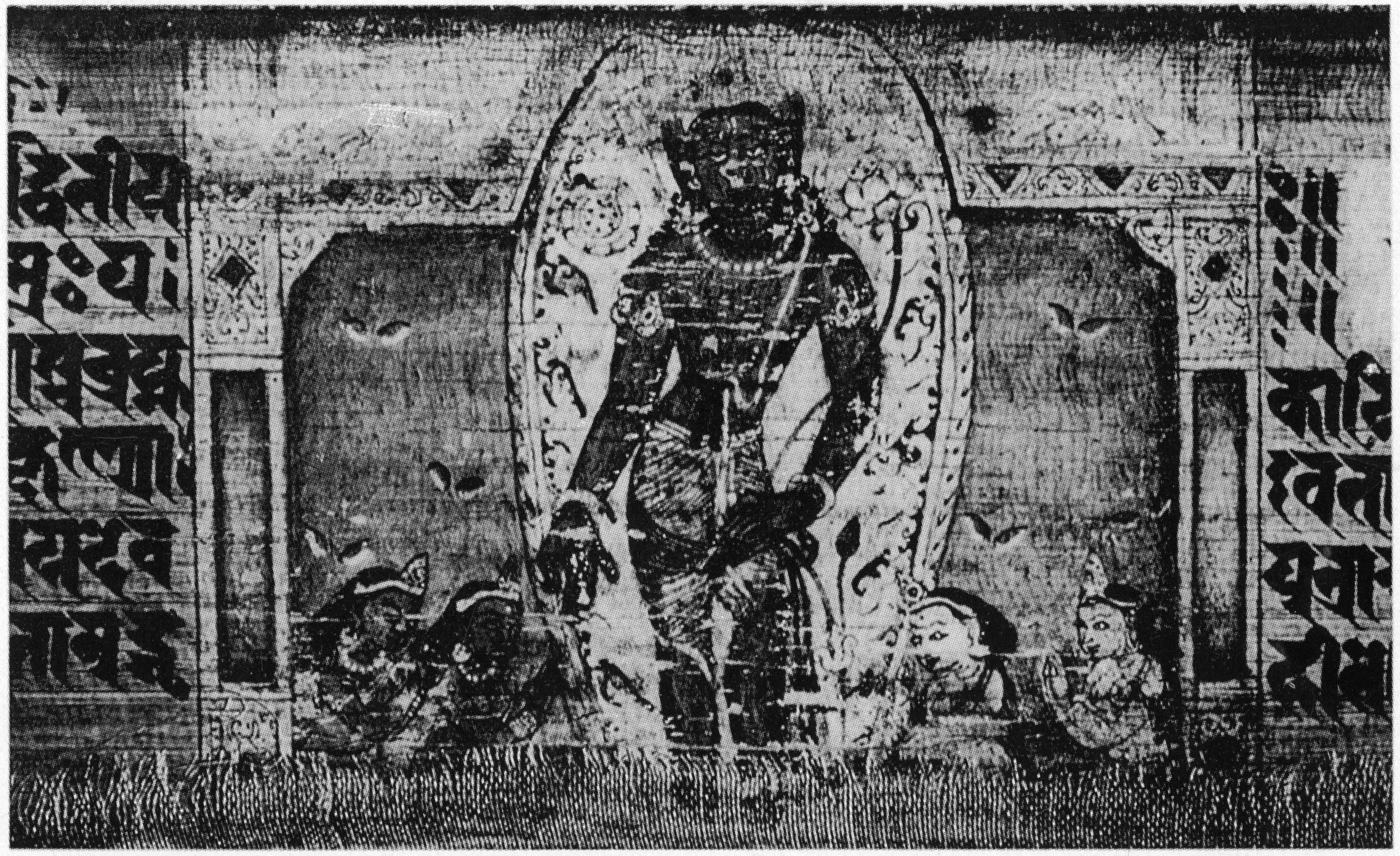
 Project Himalayan Art
Project Himalayan Art
